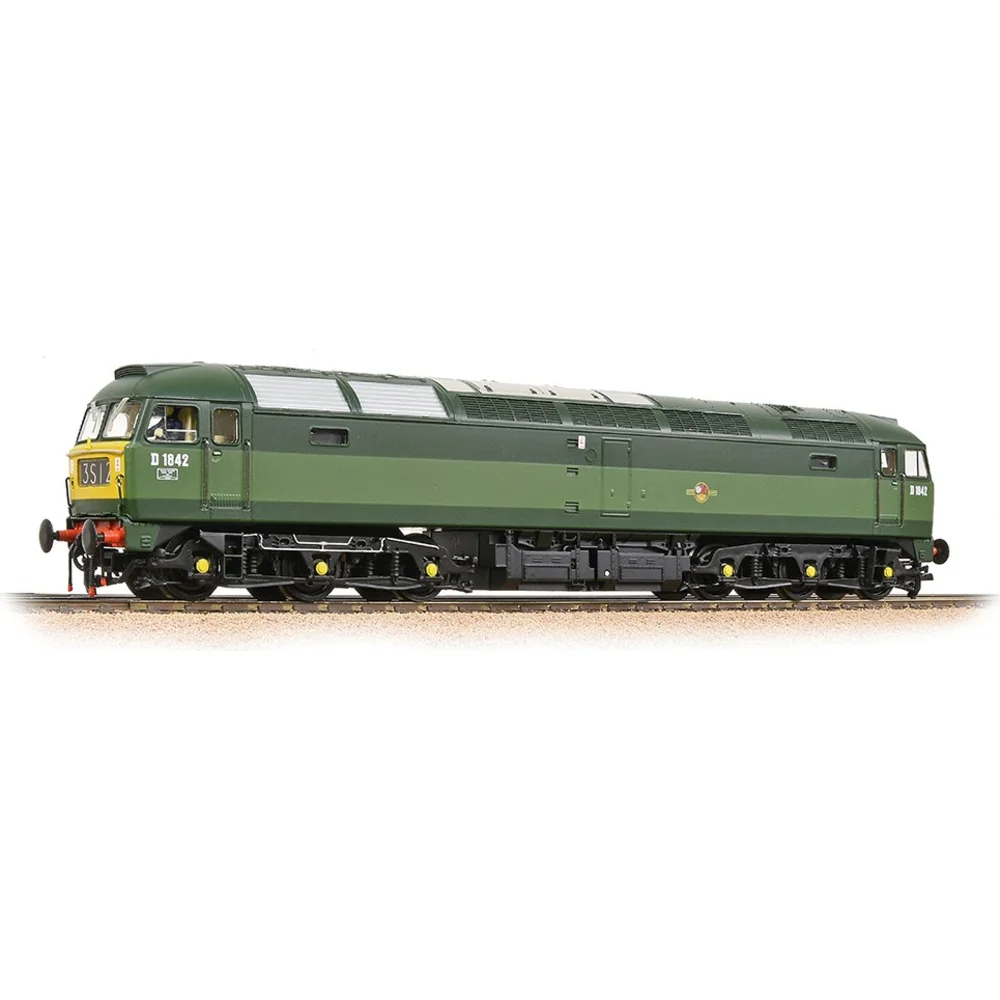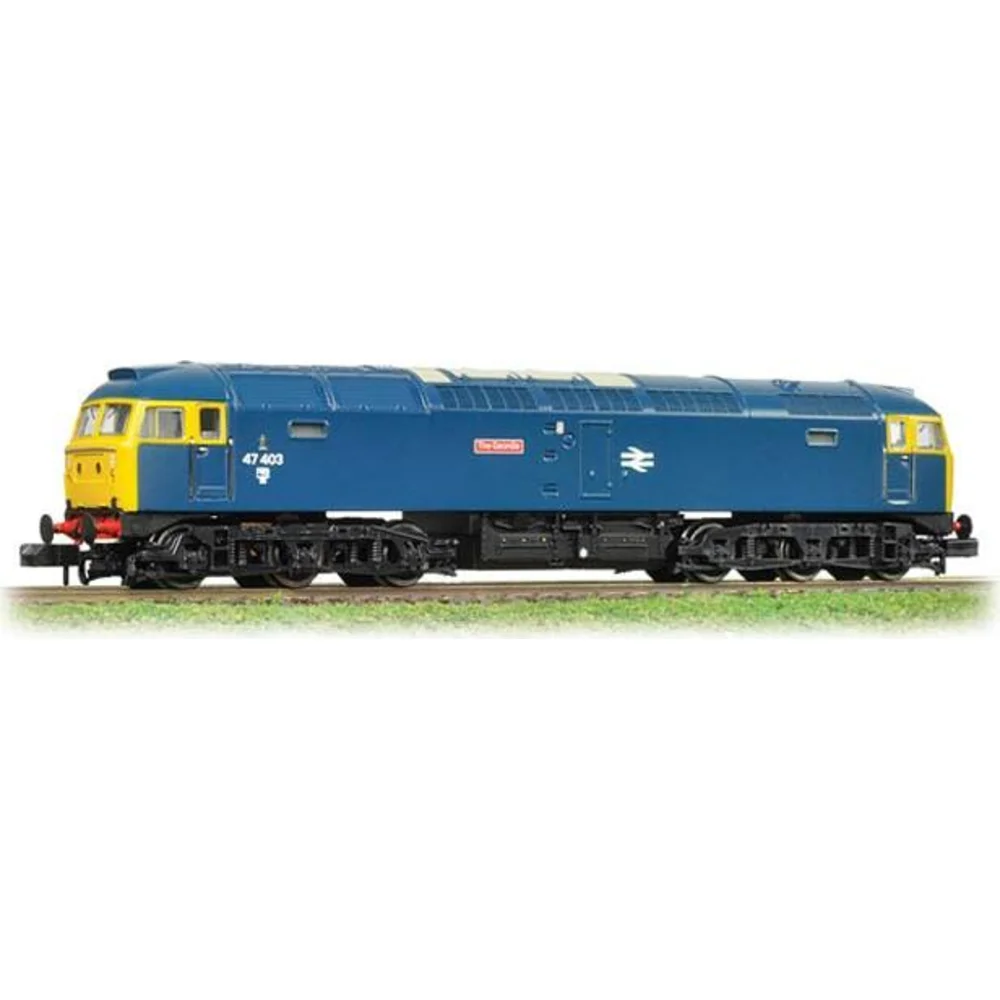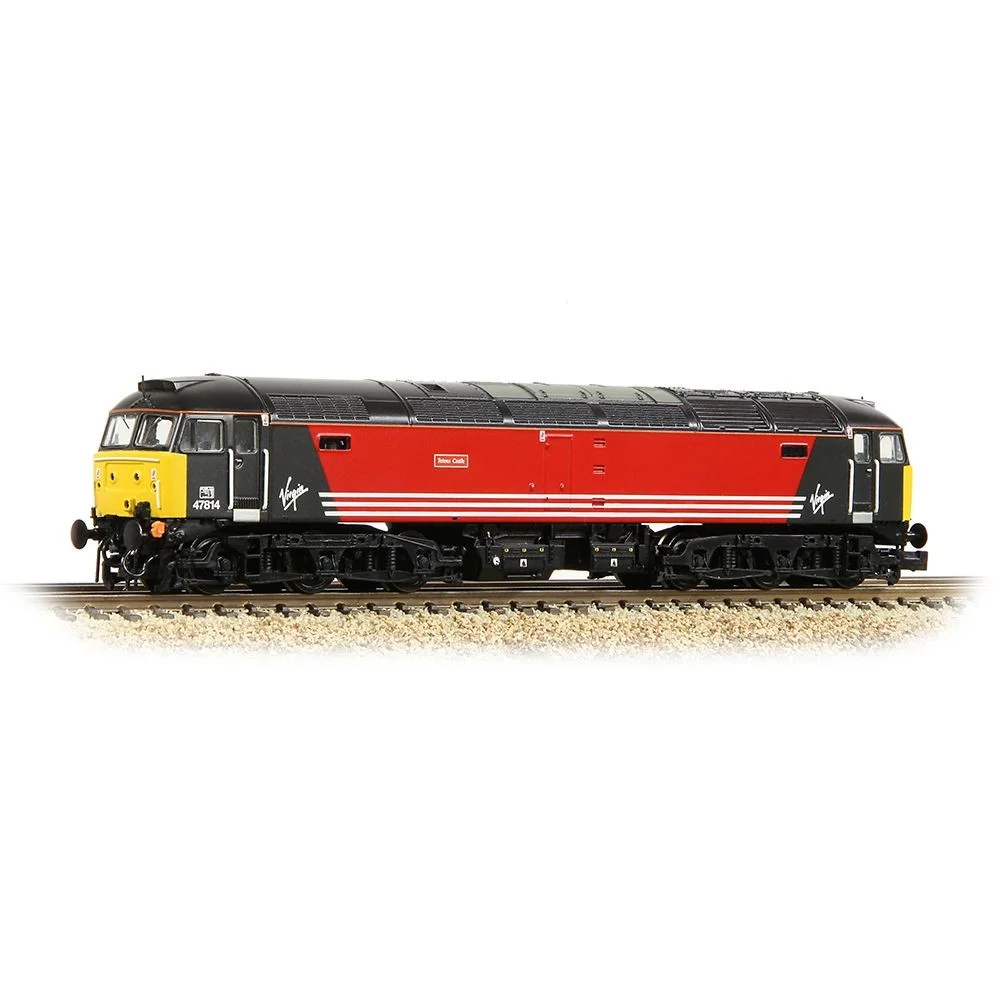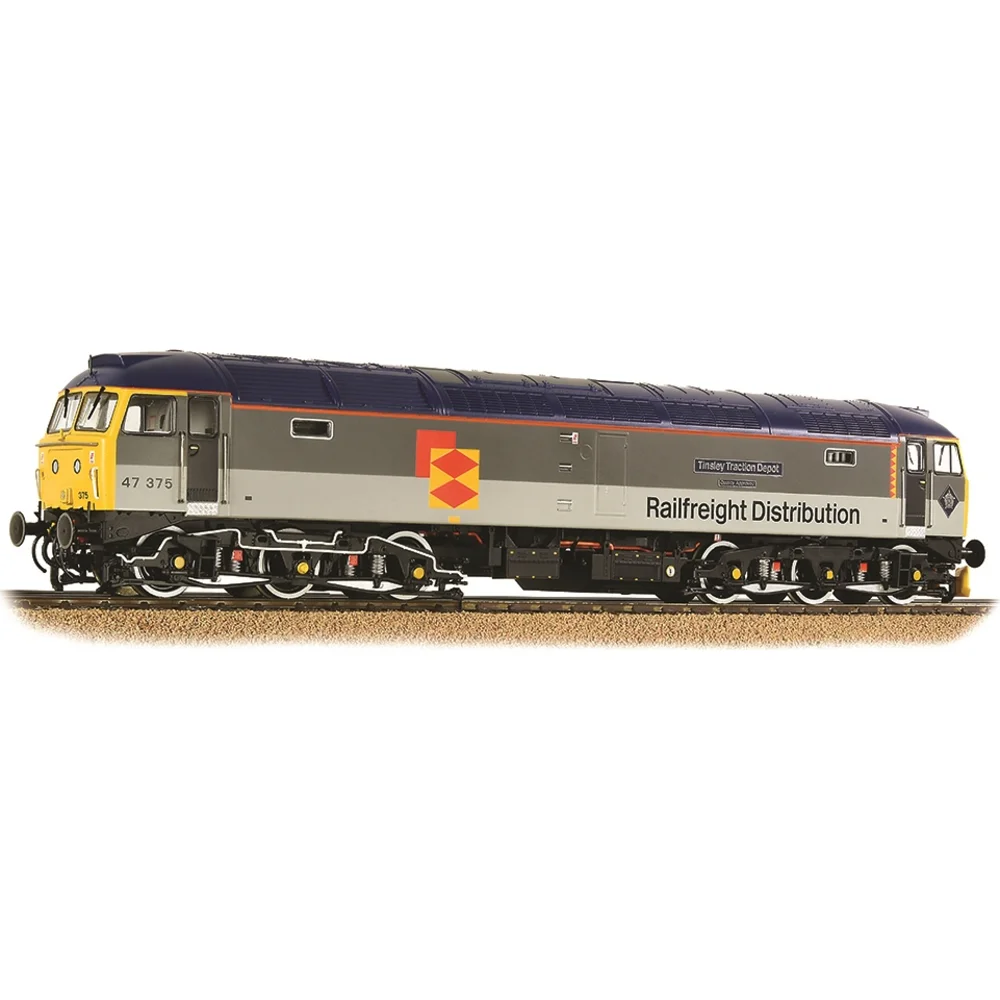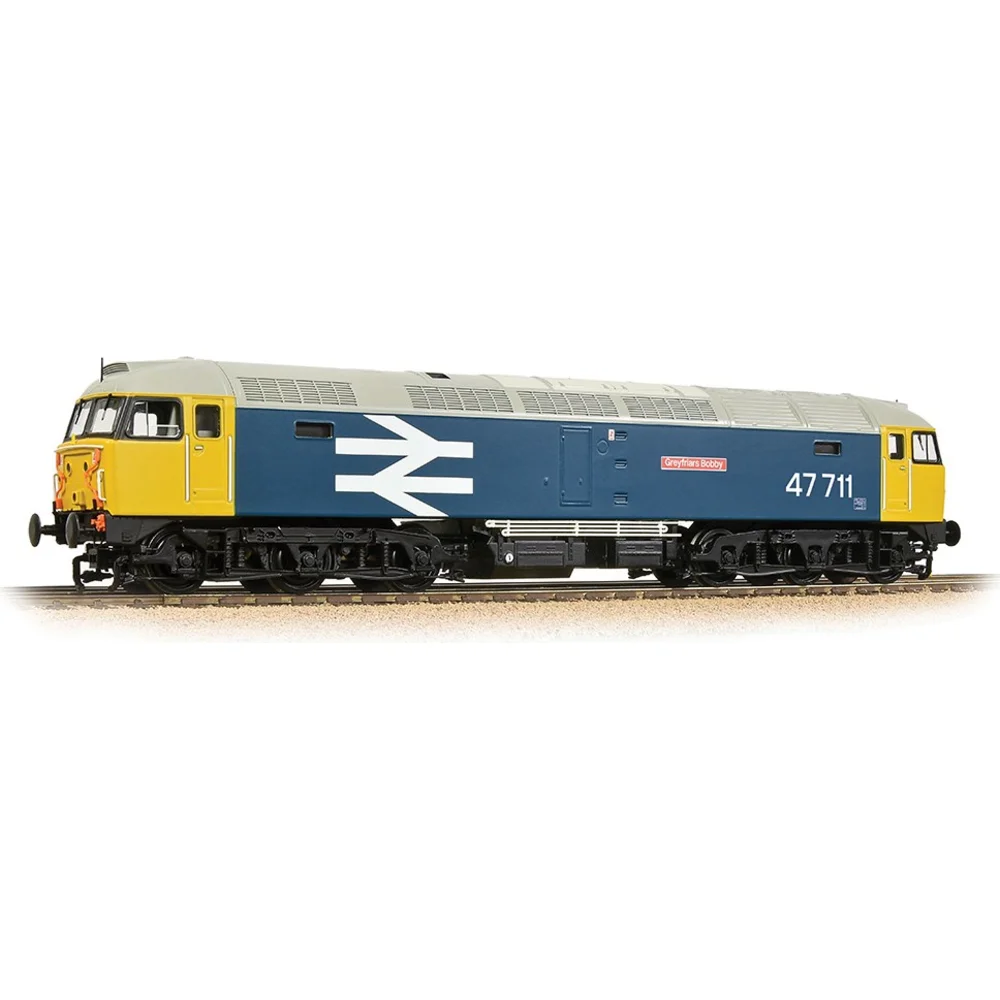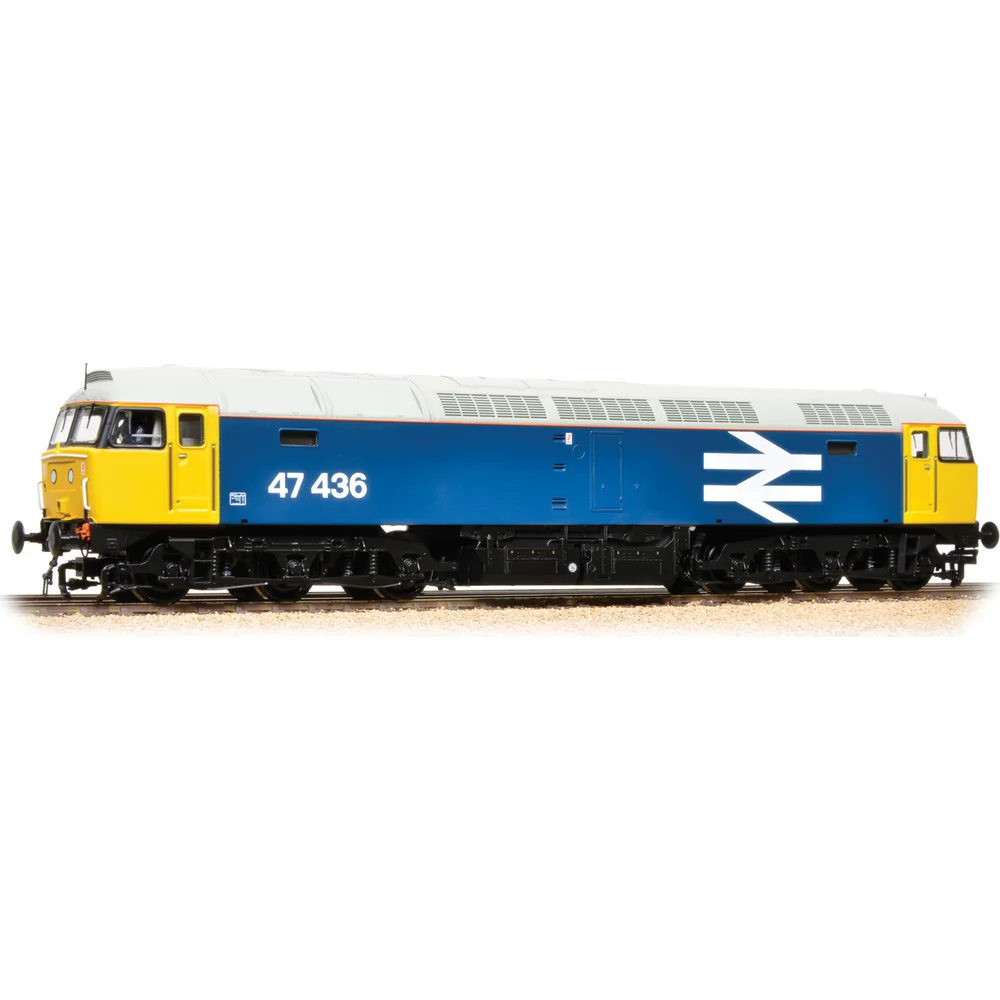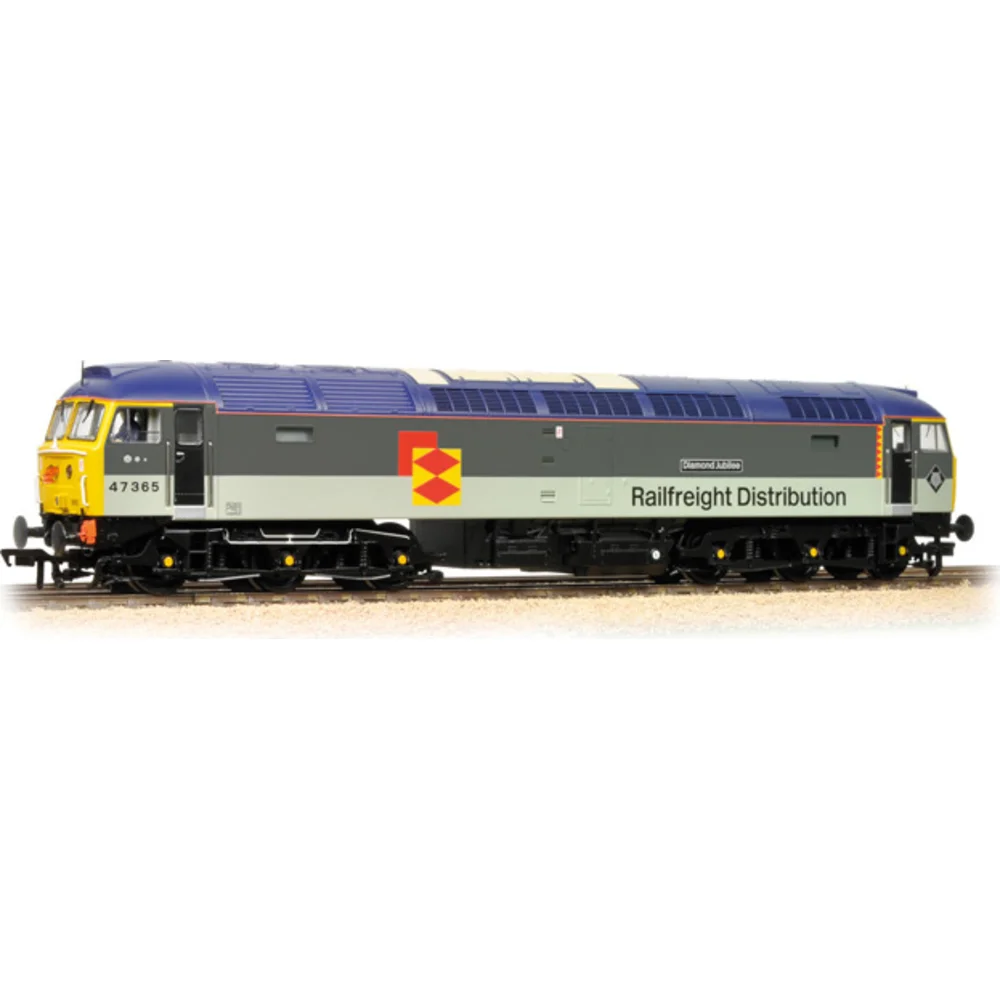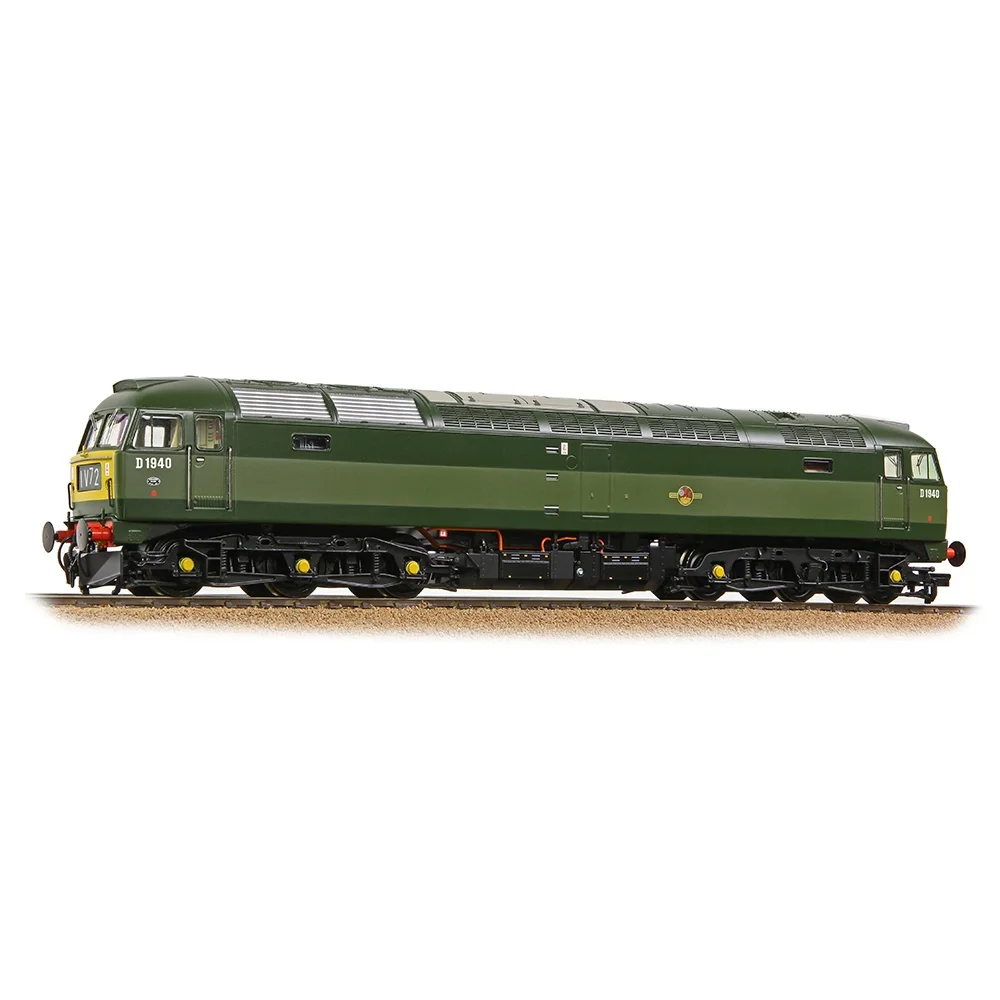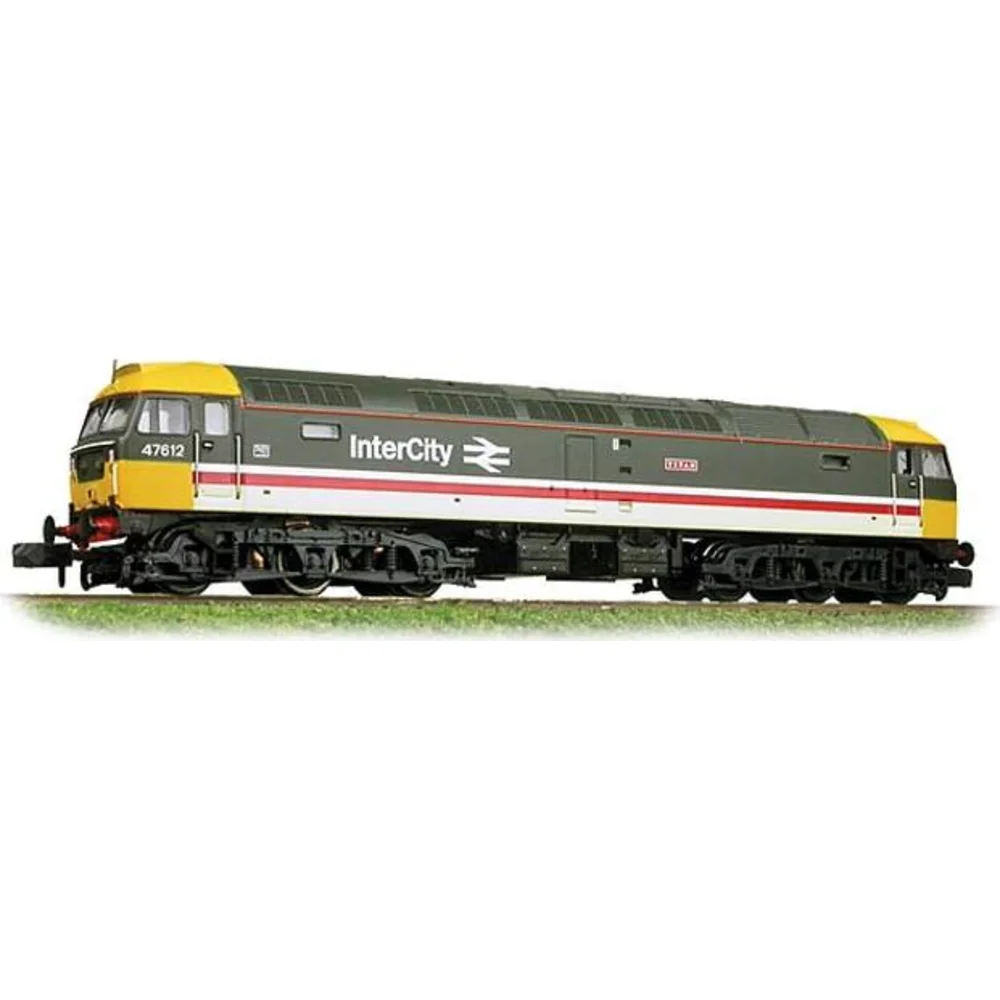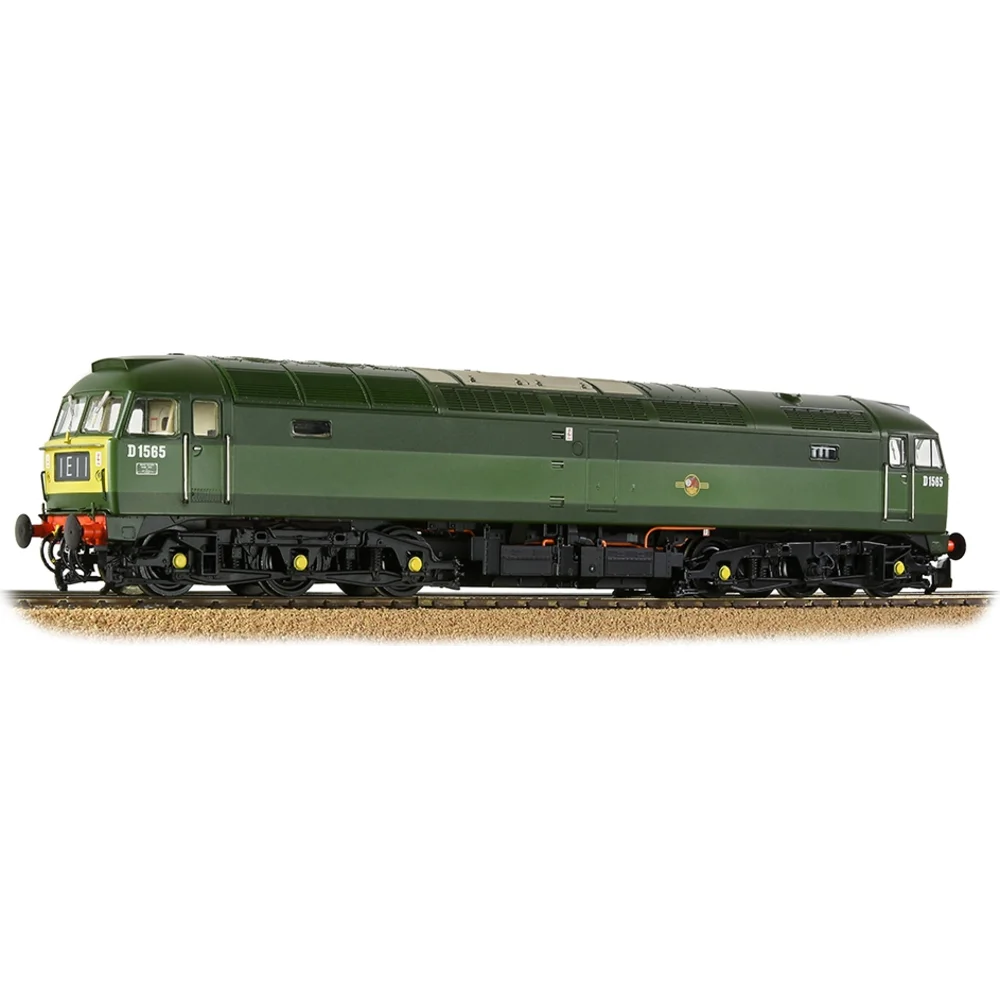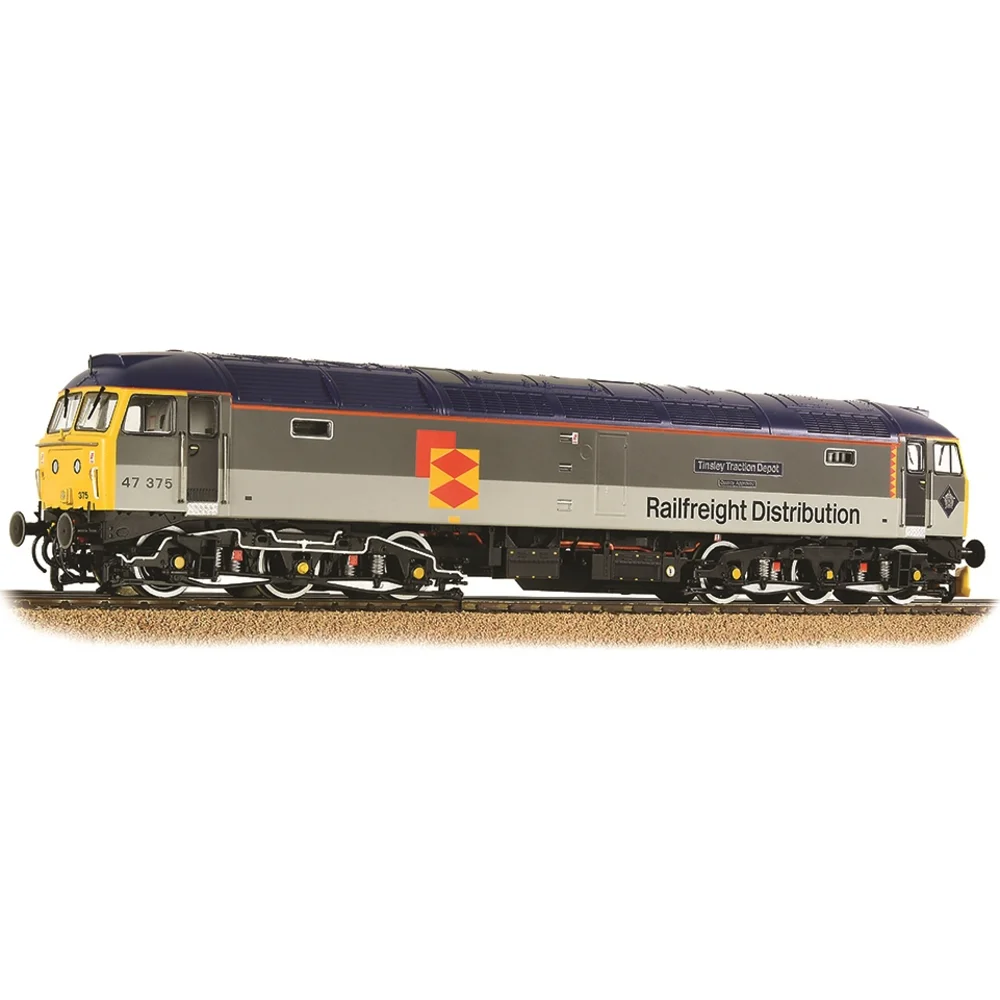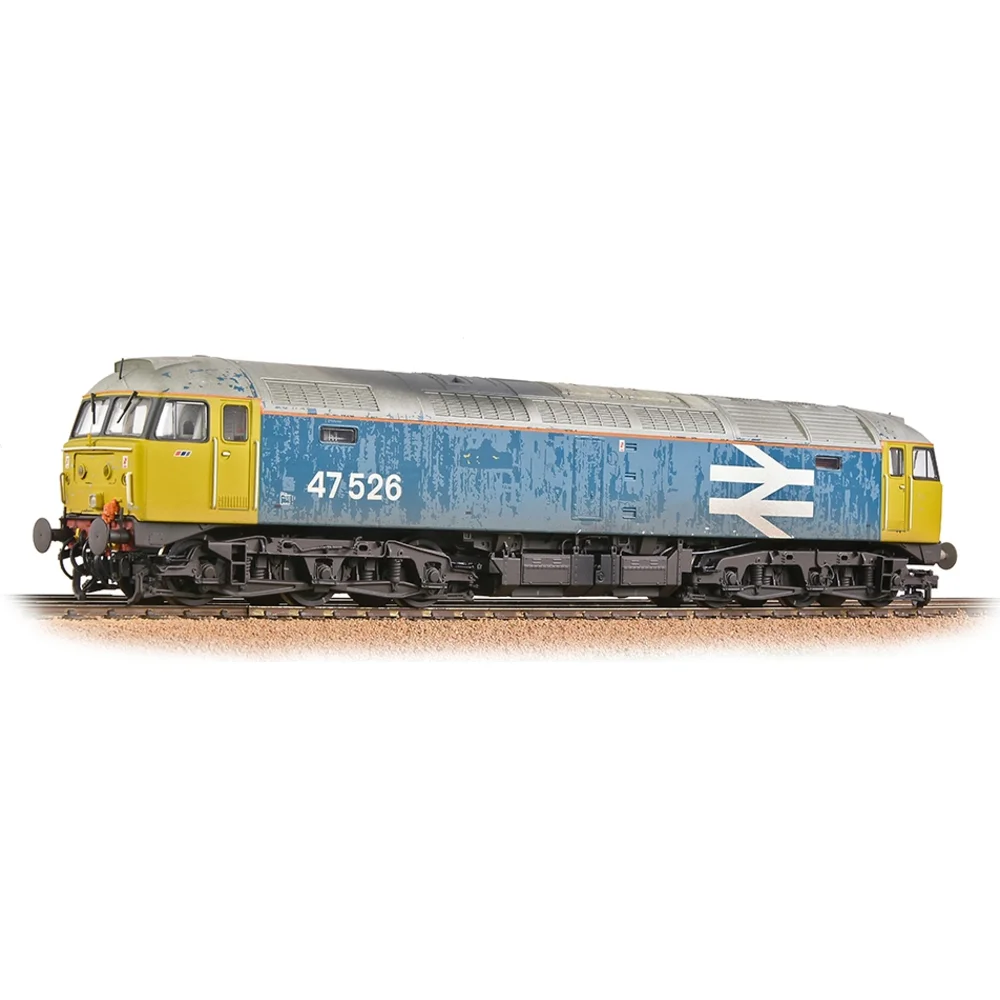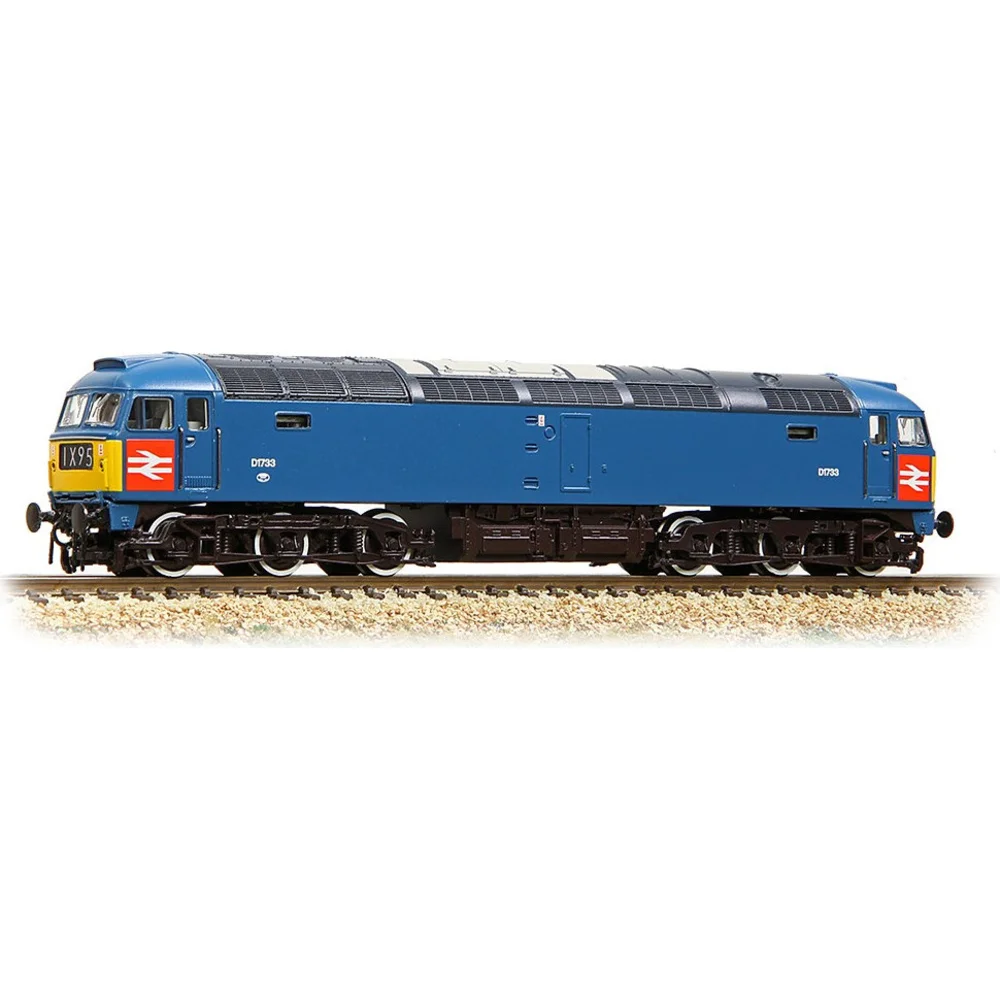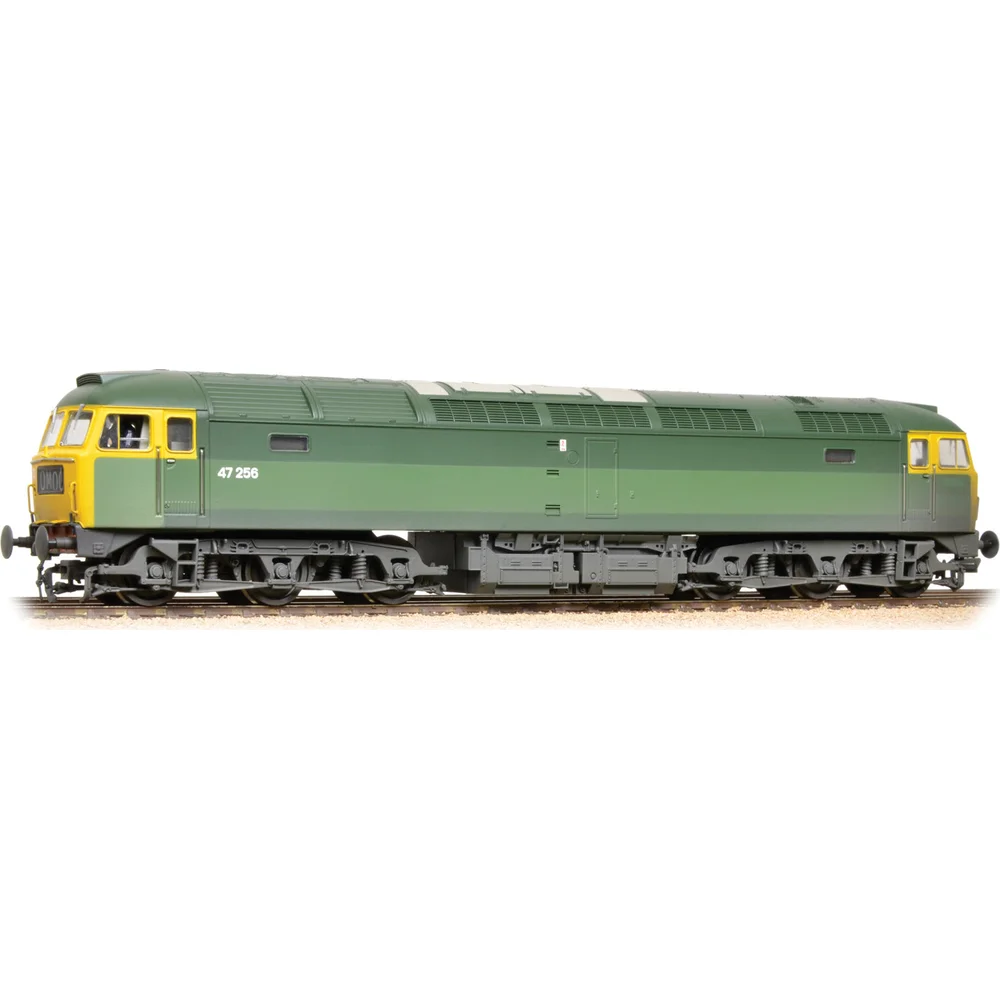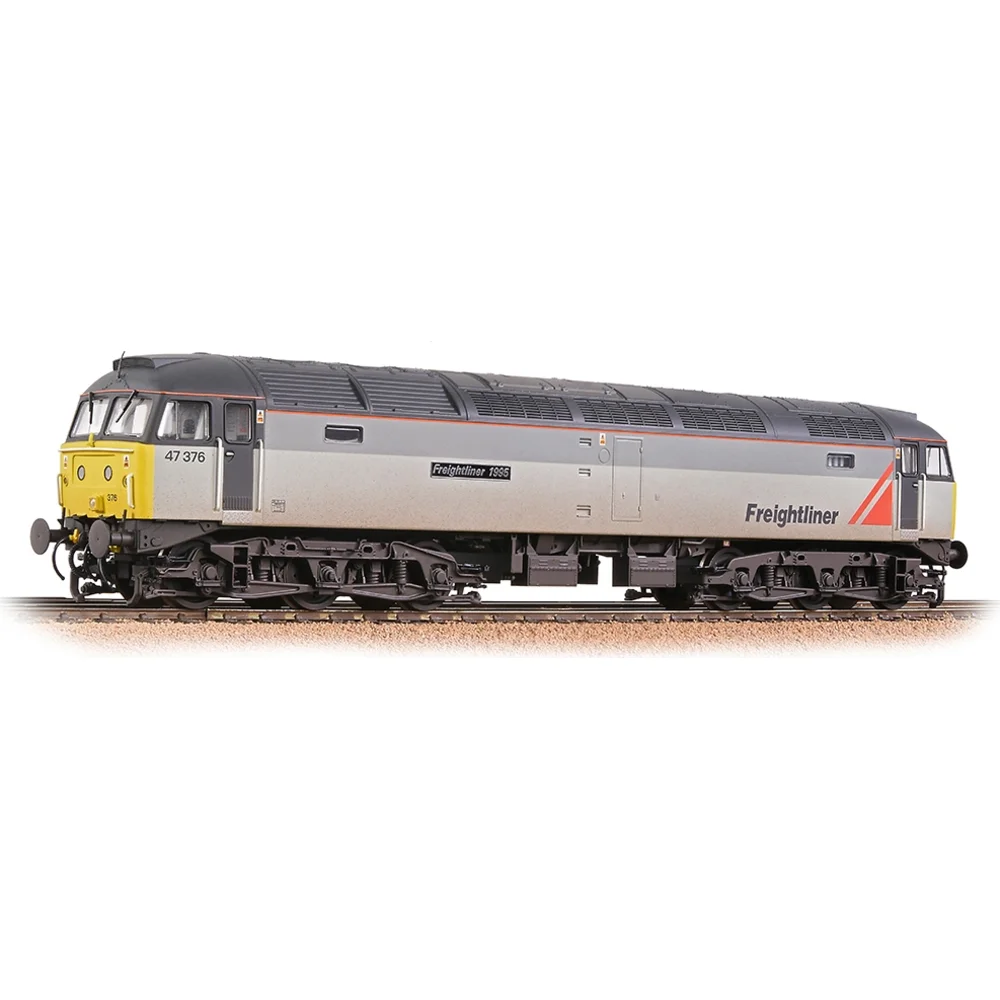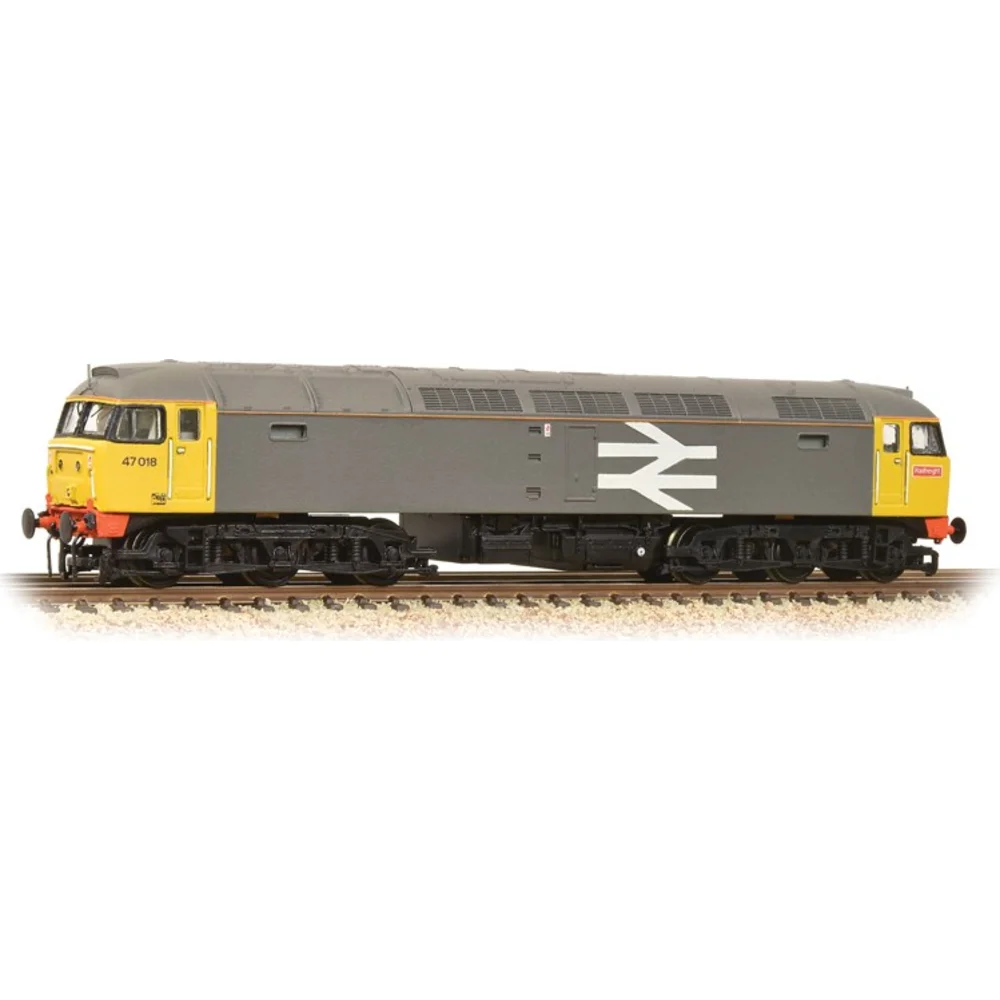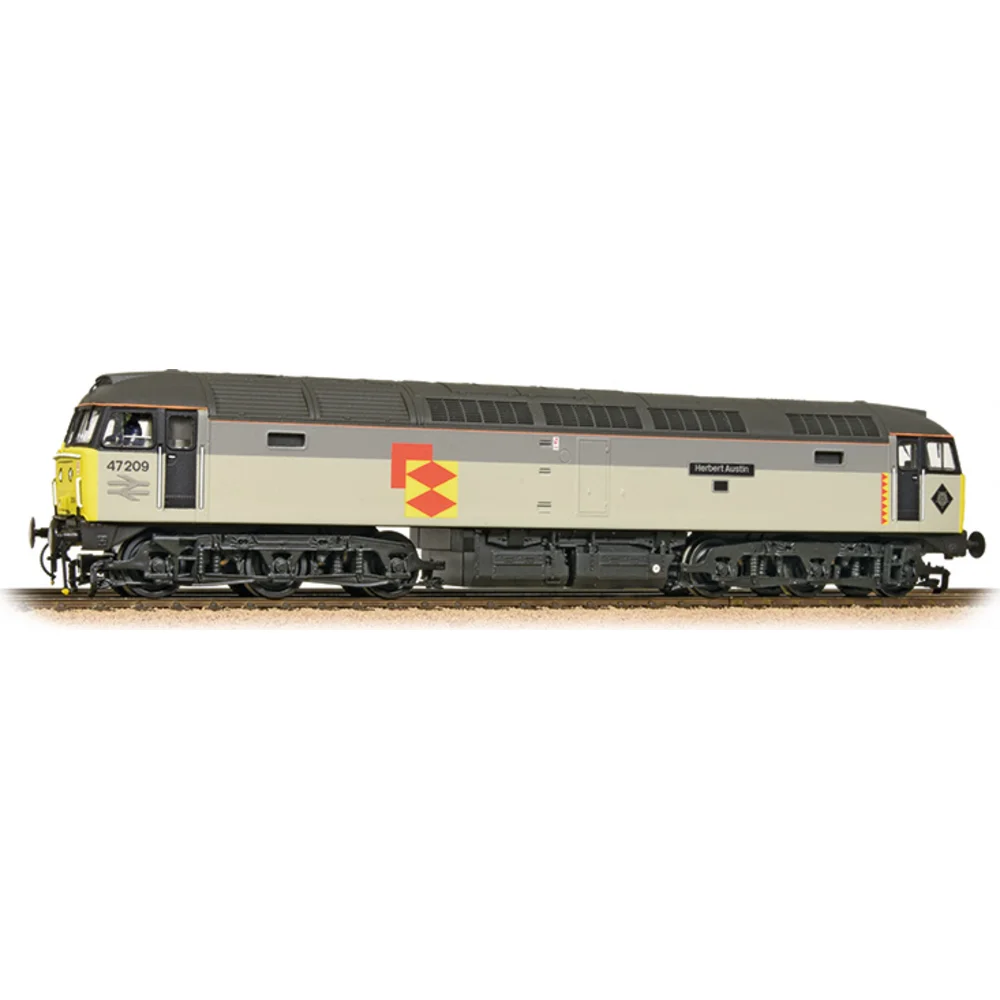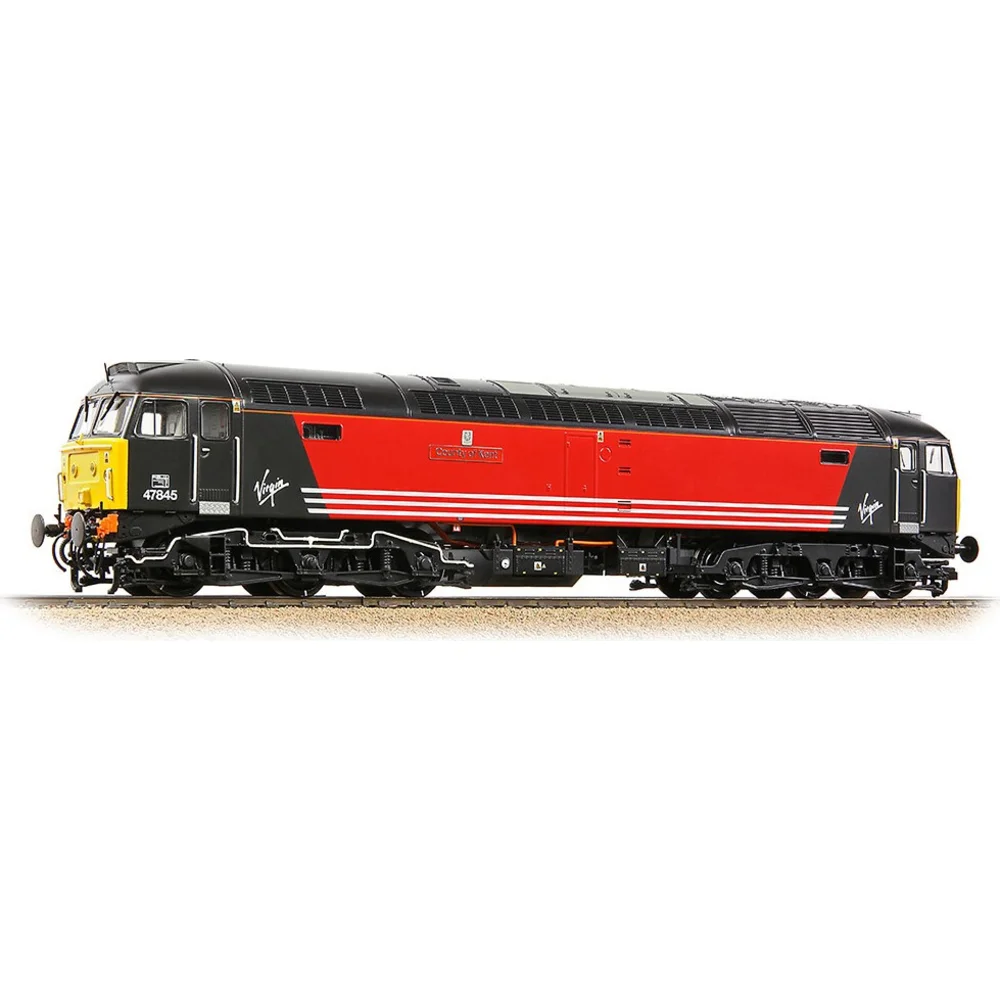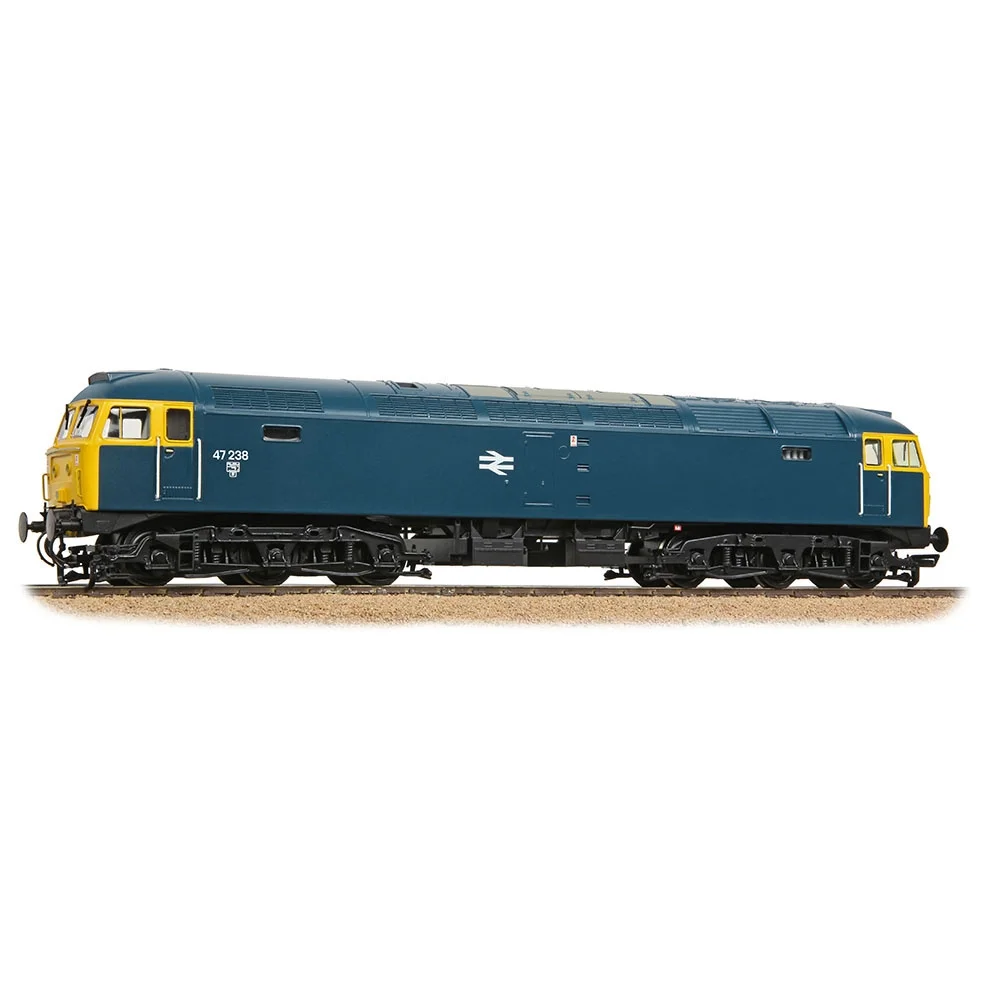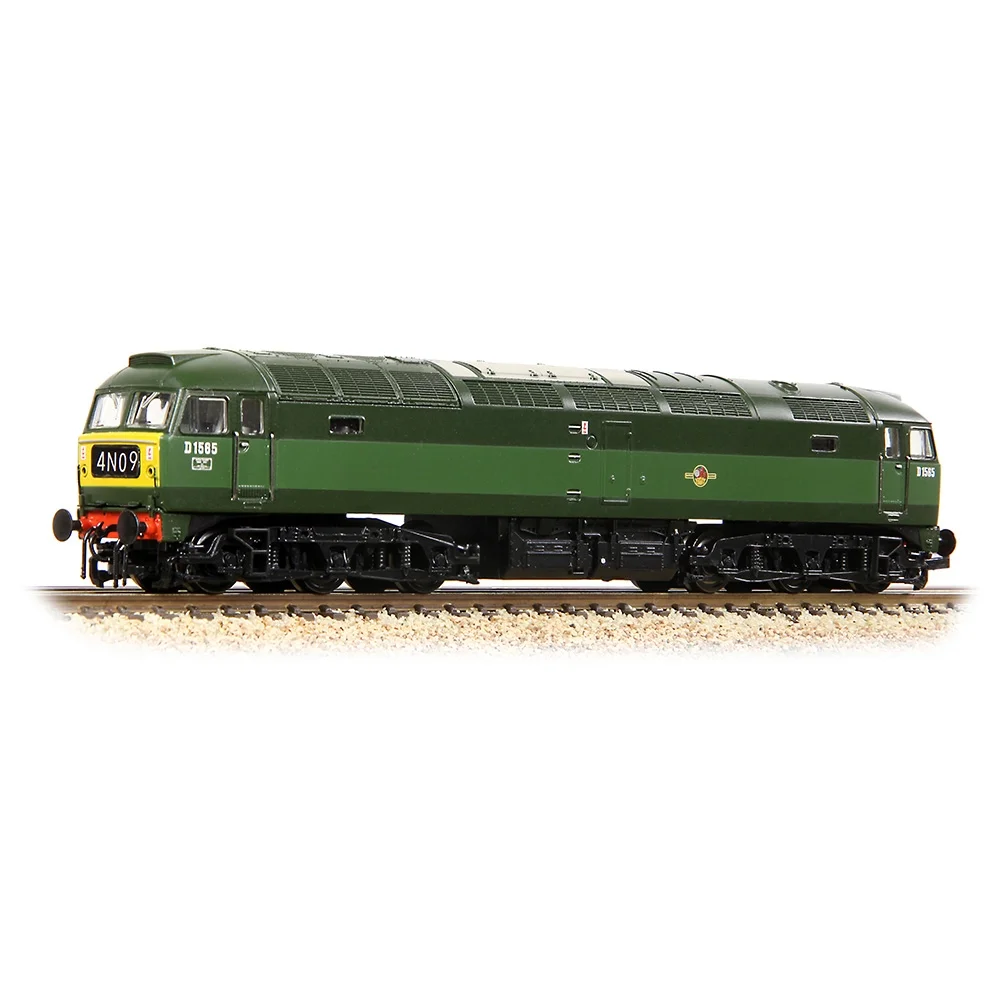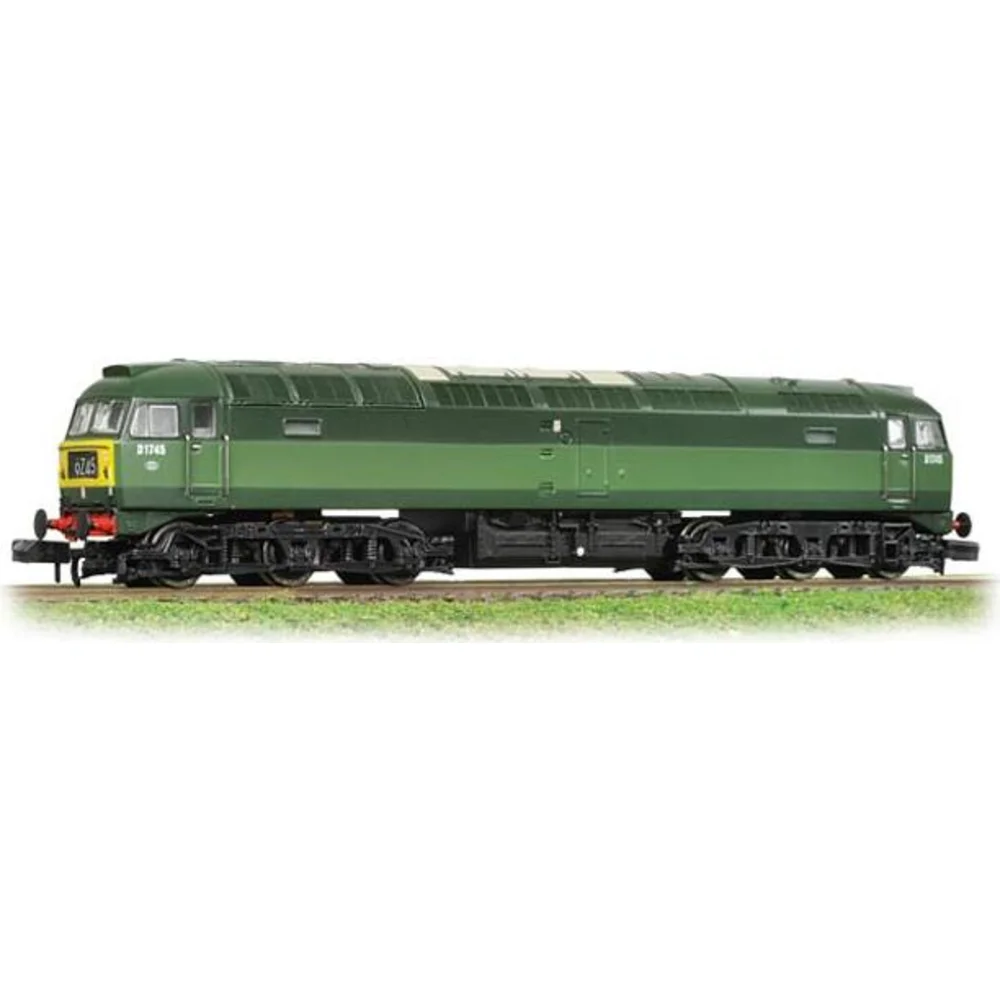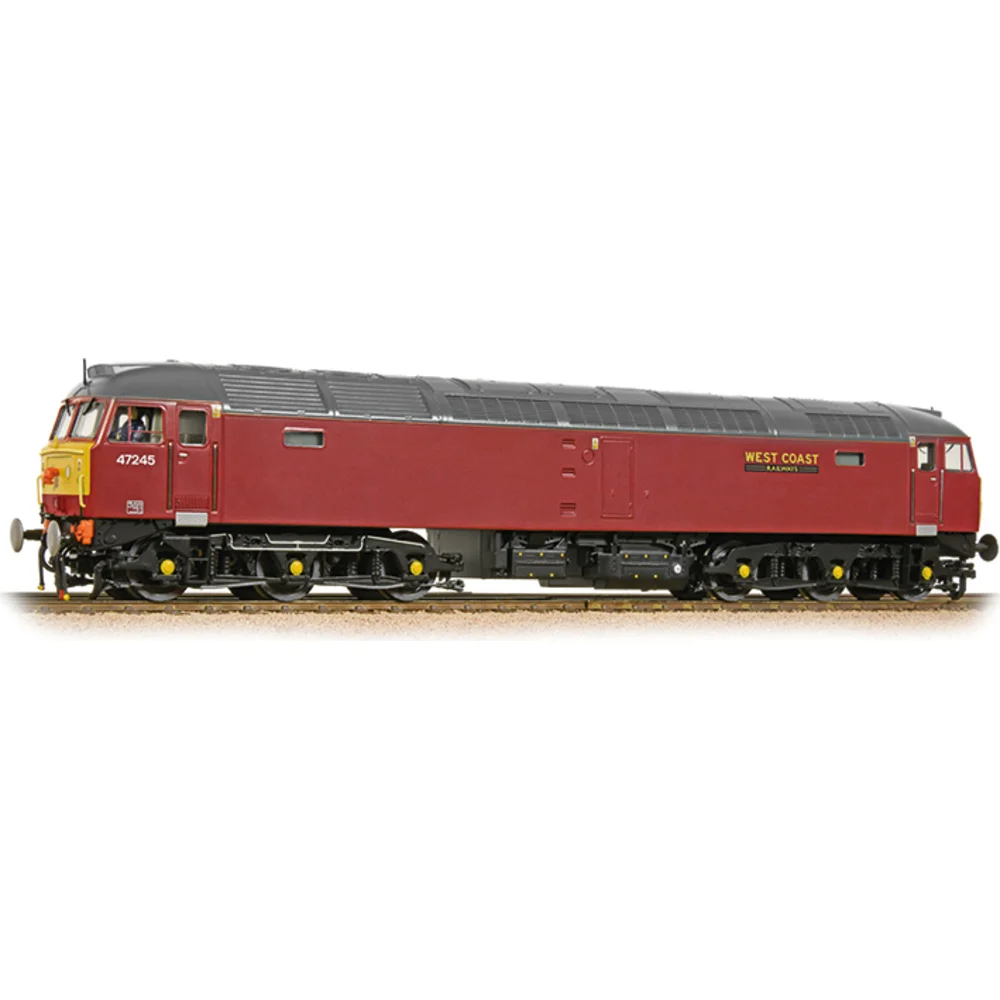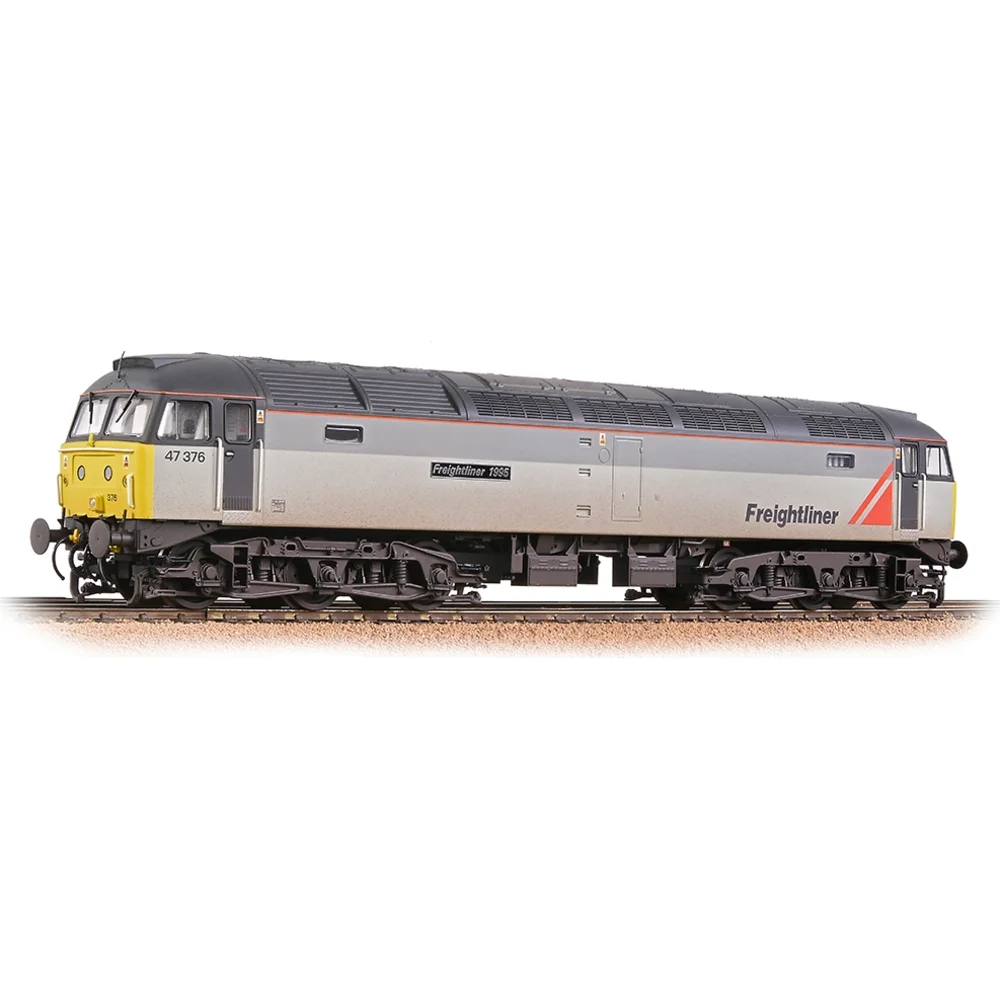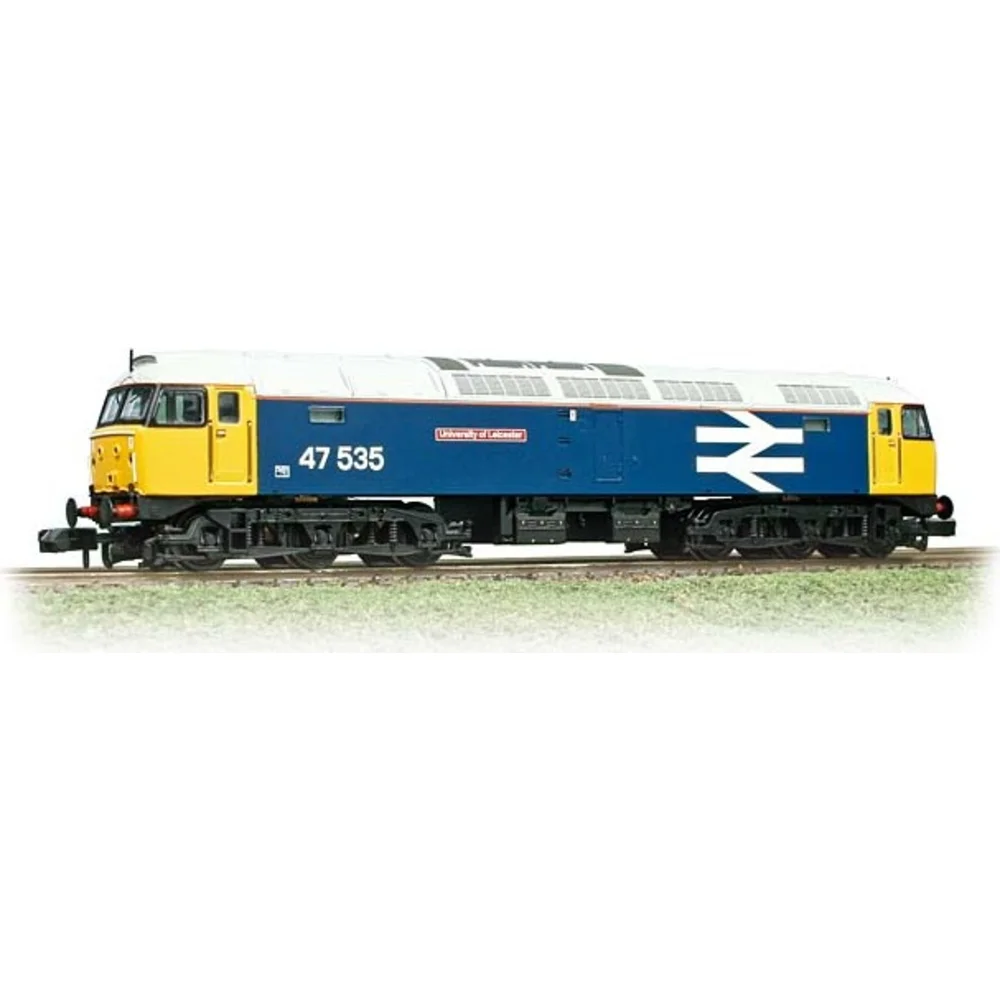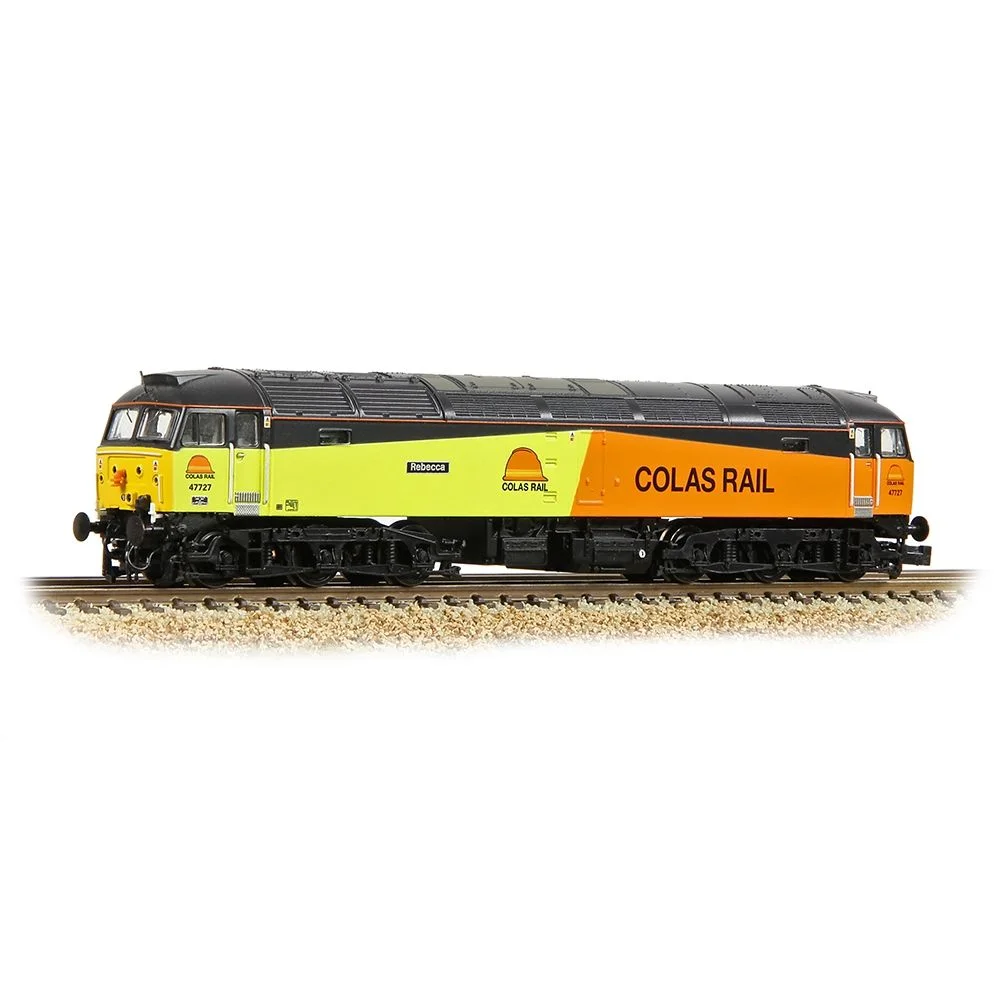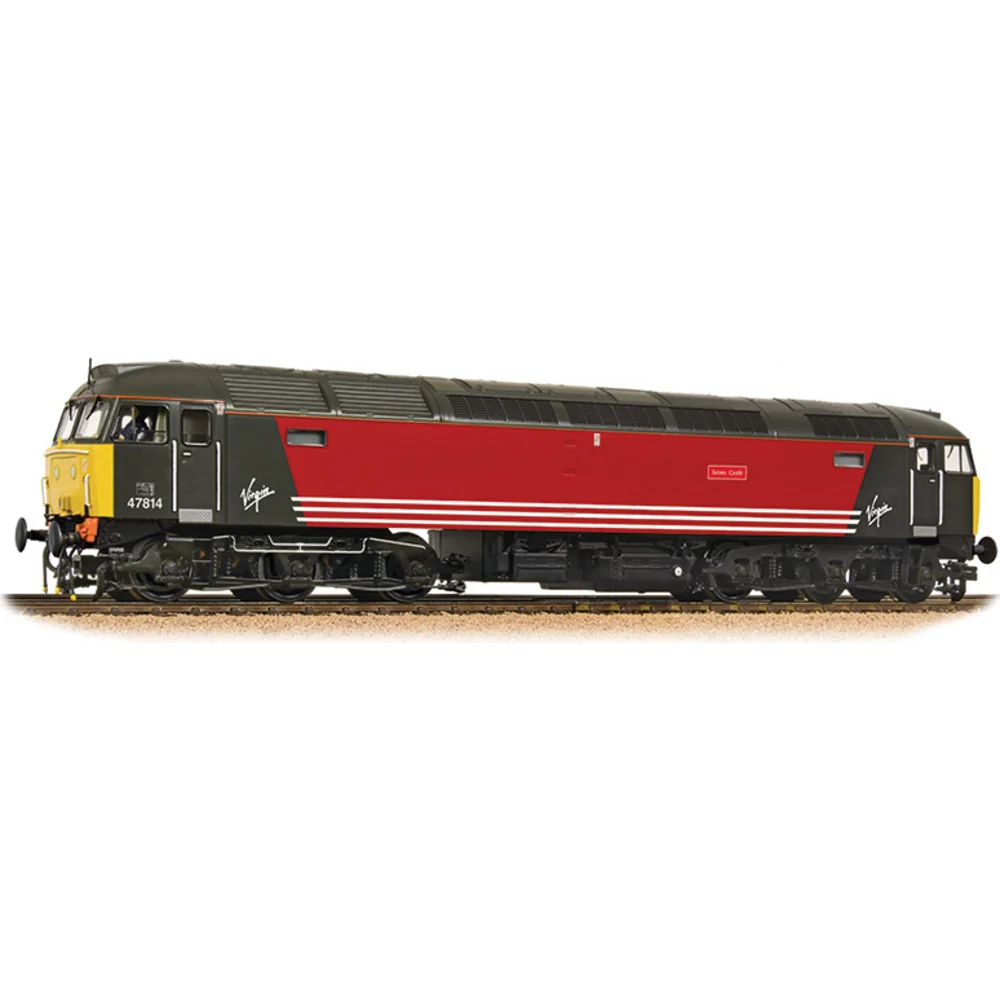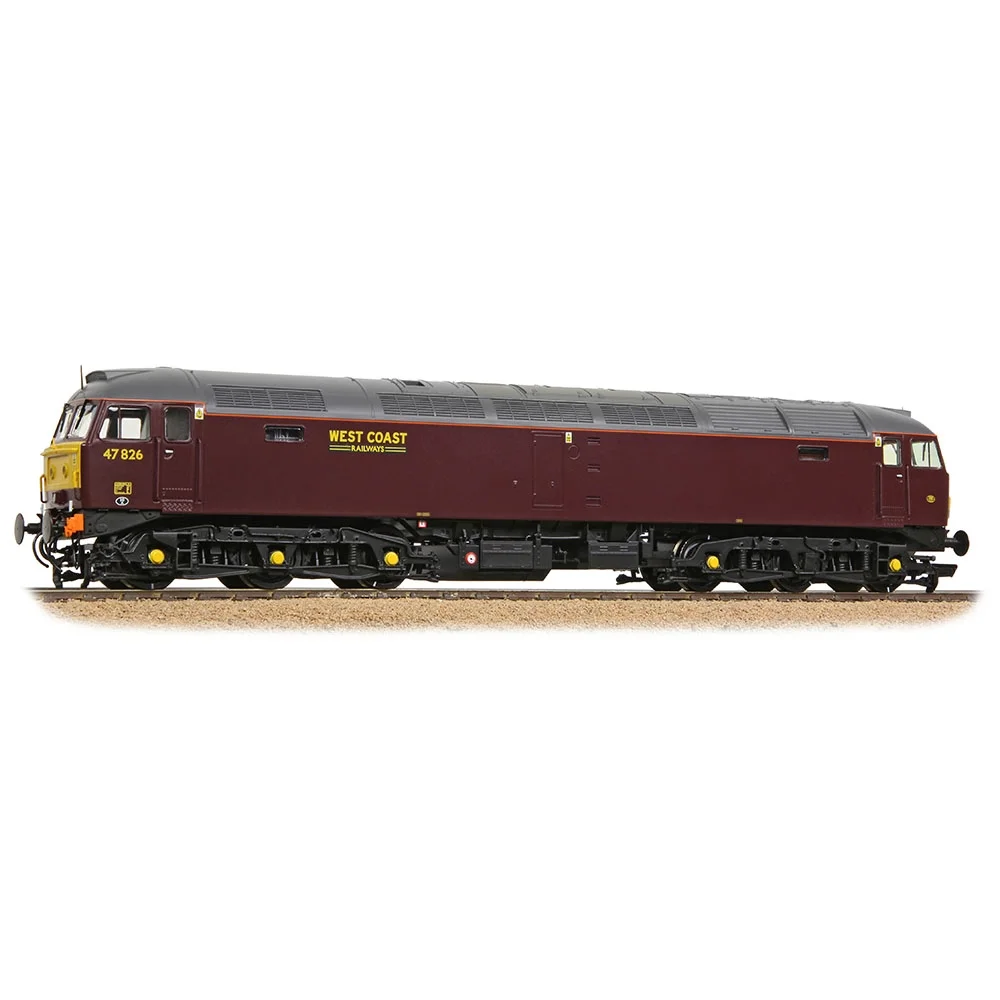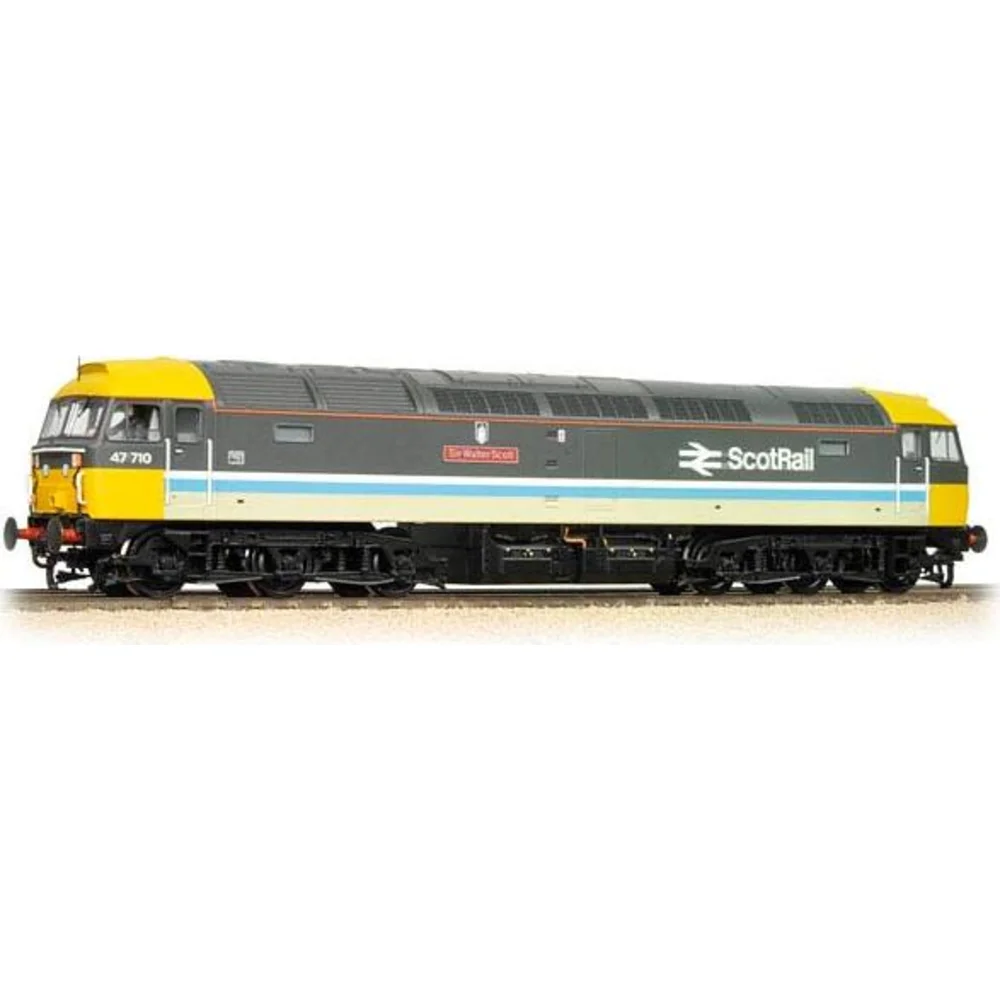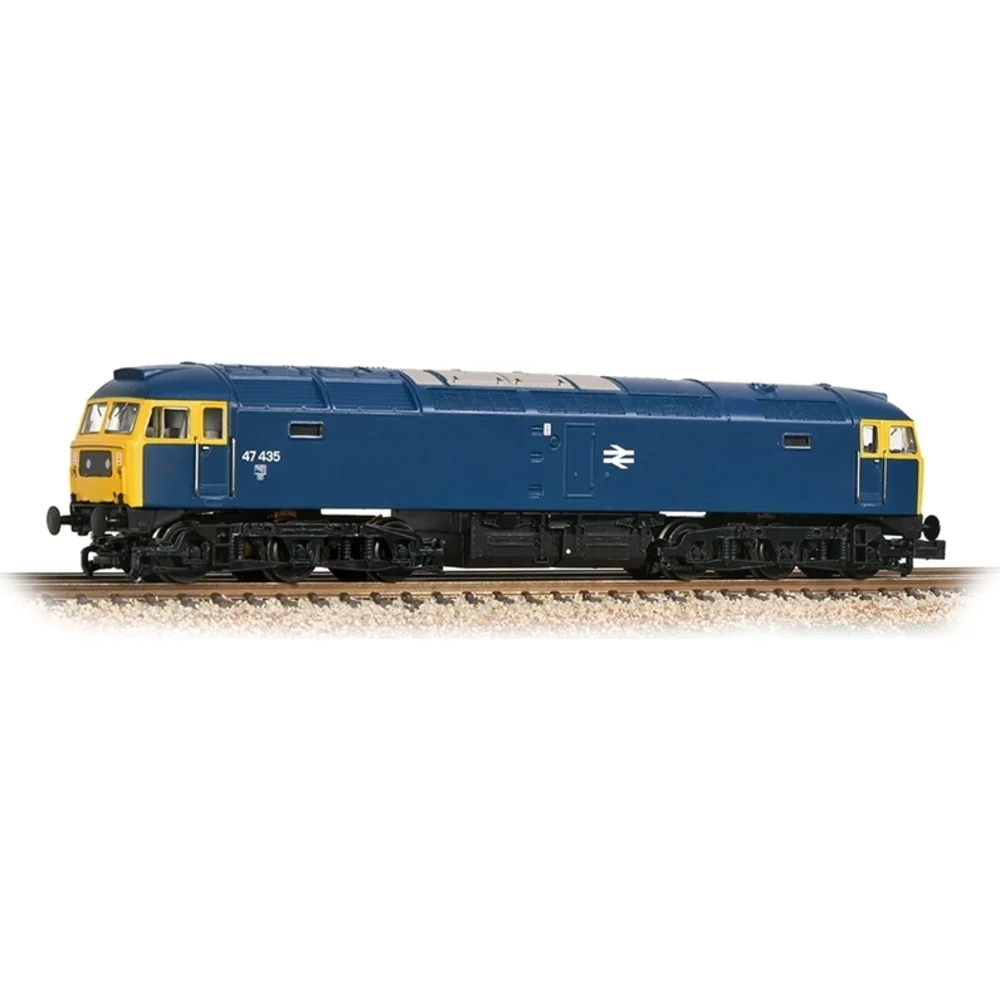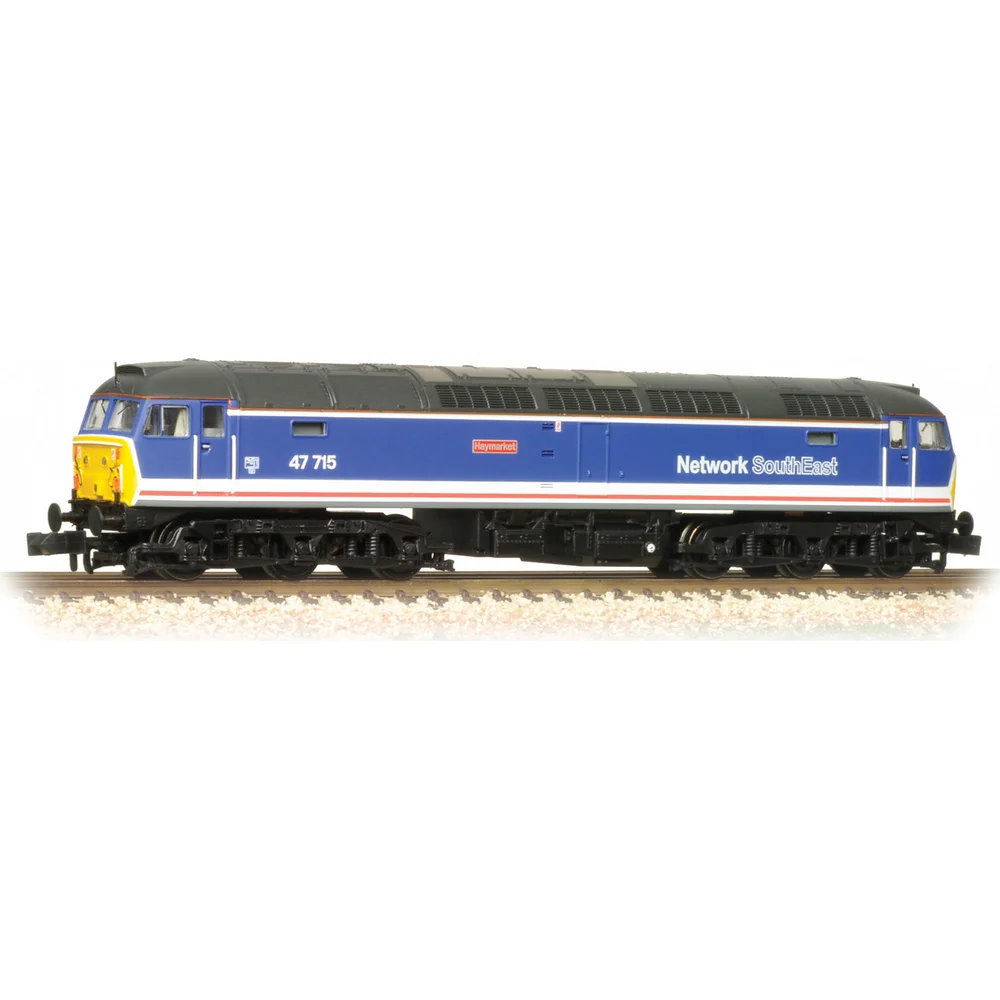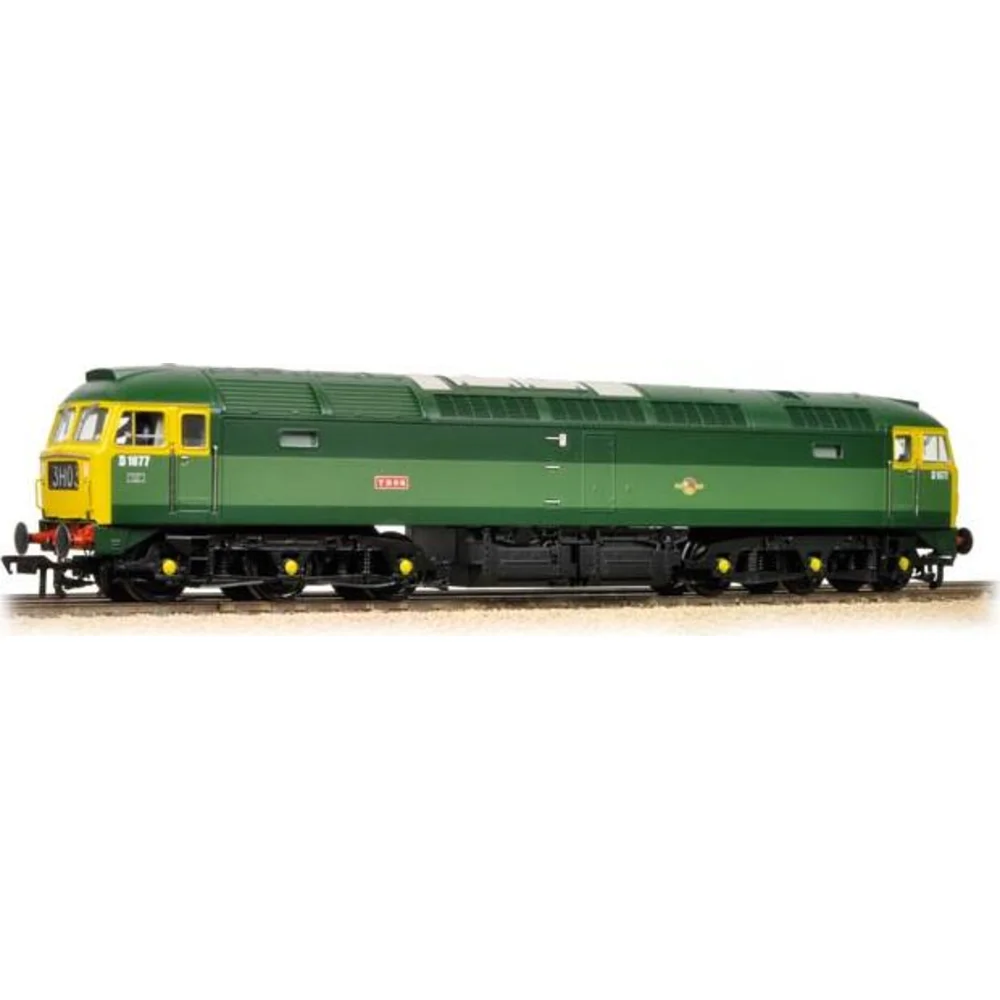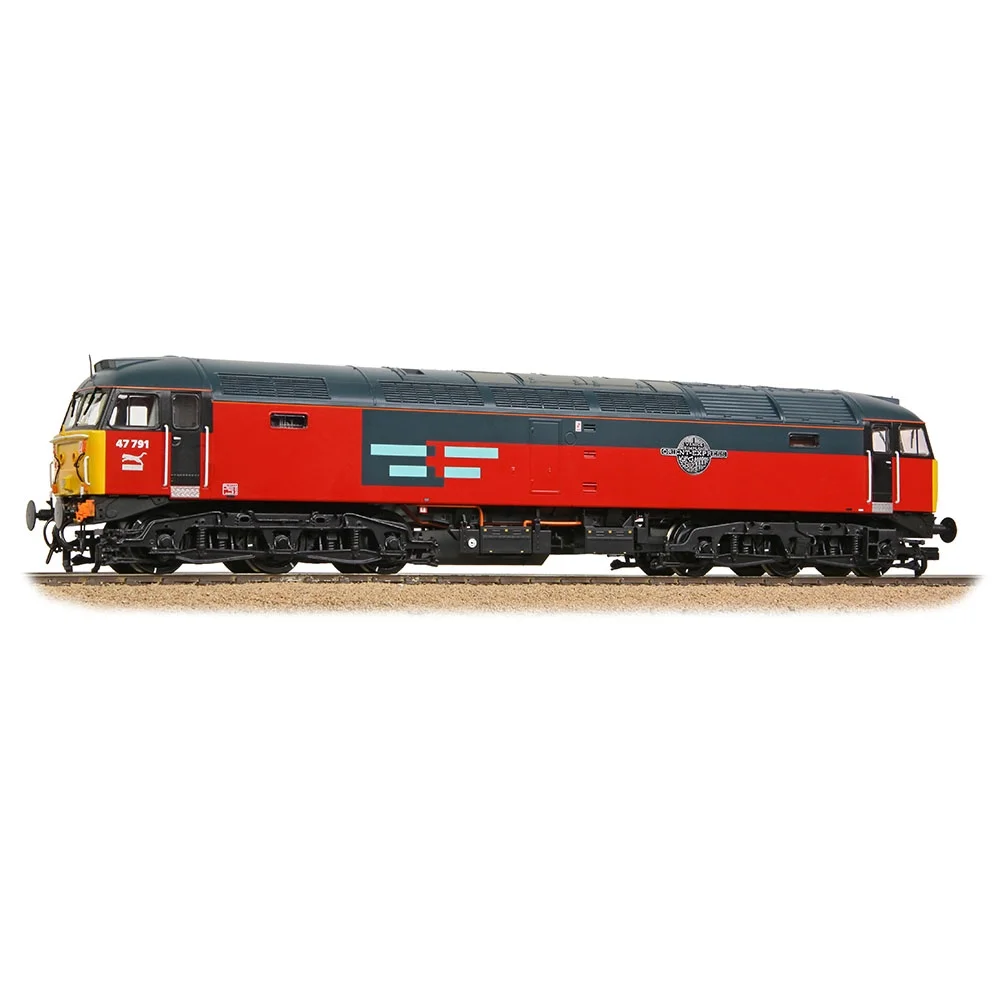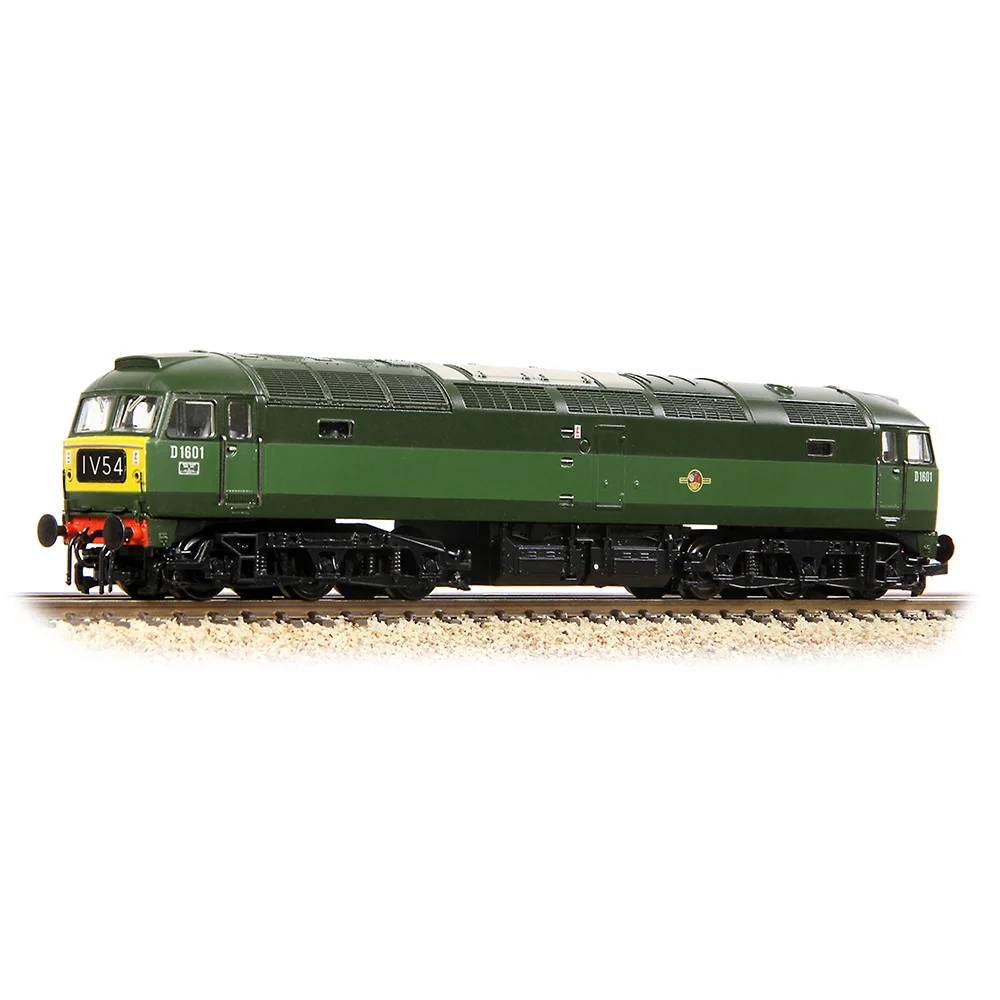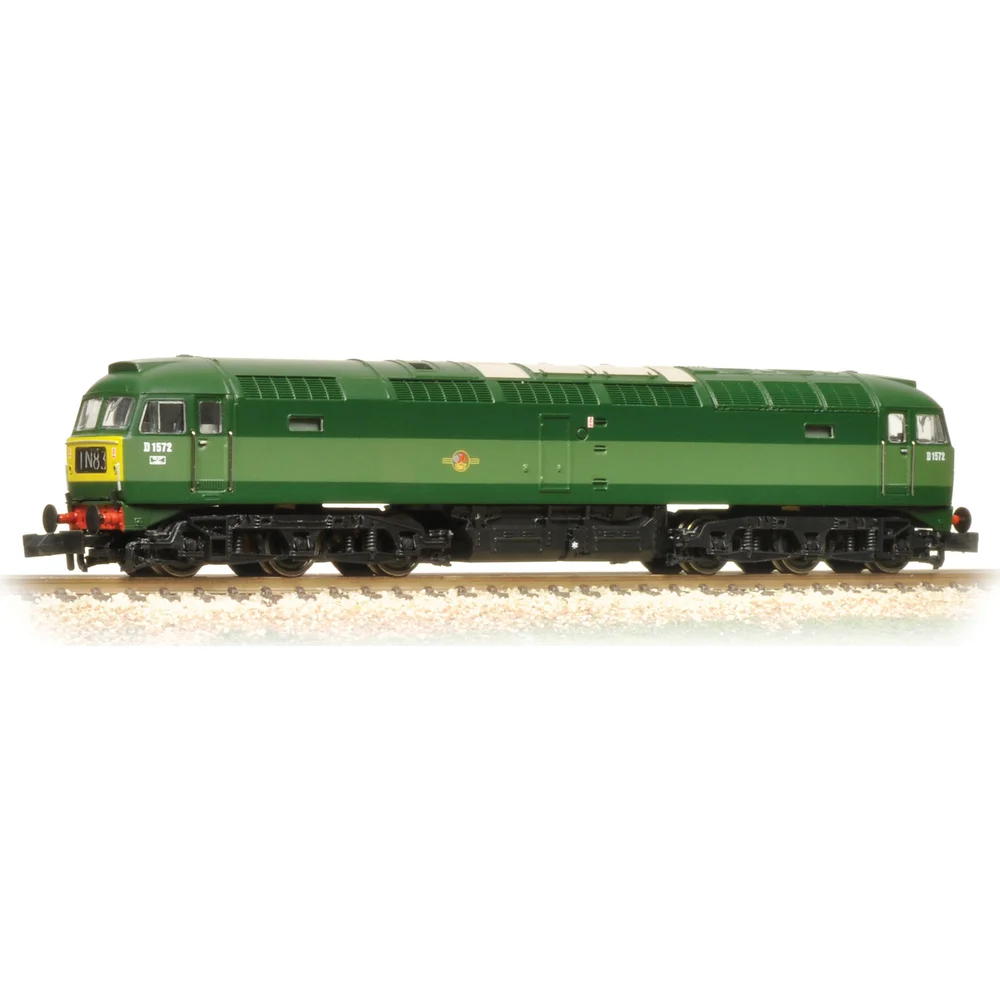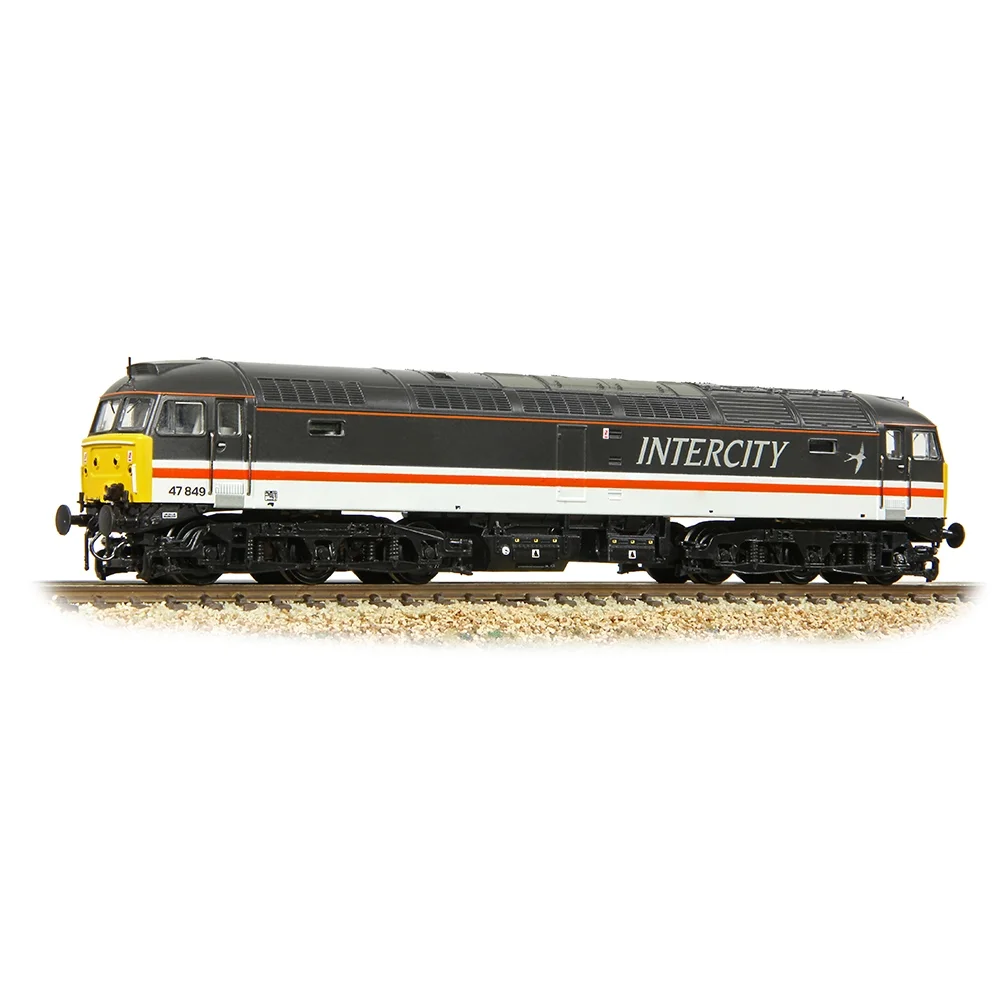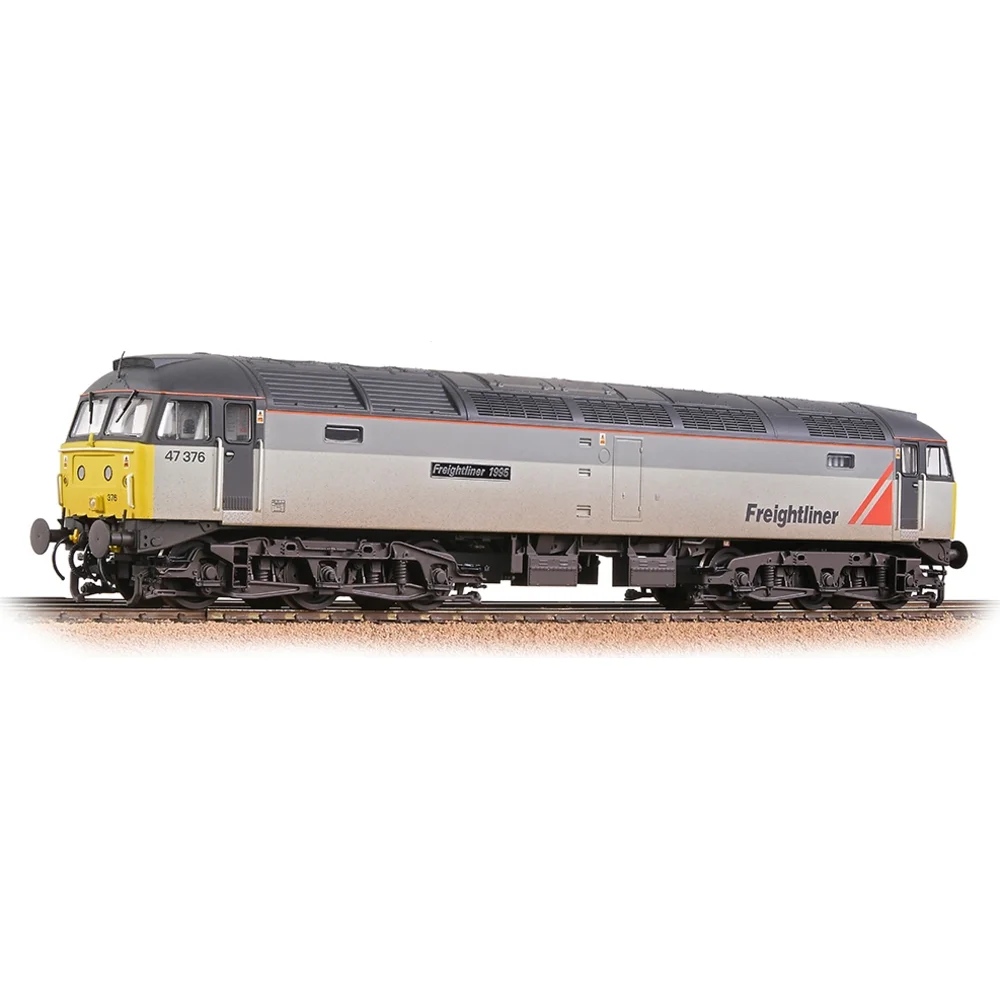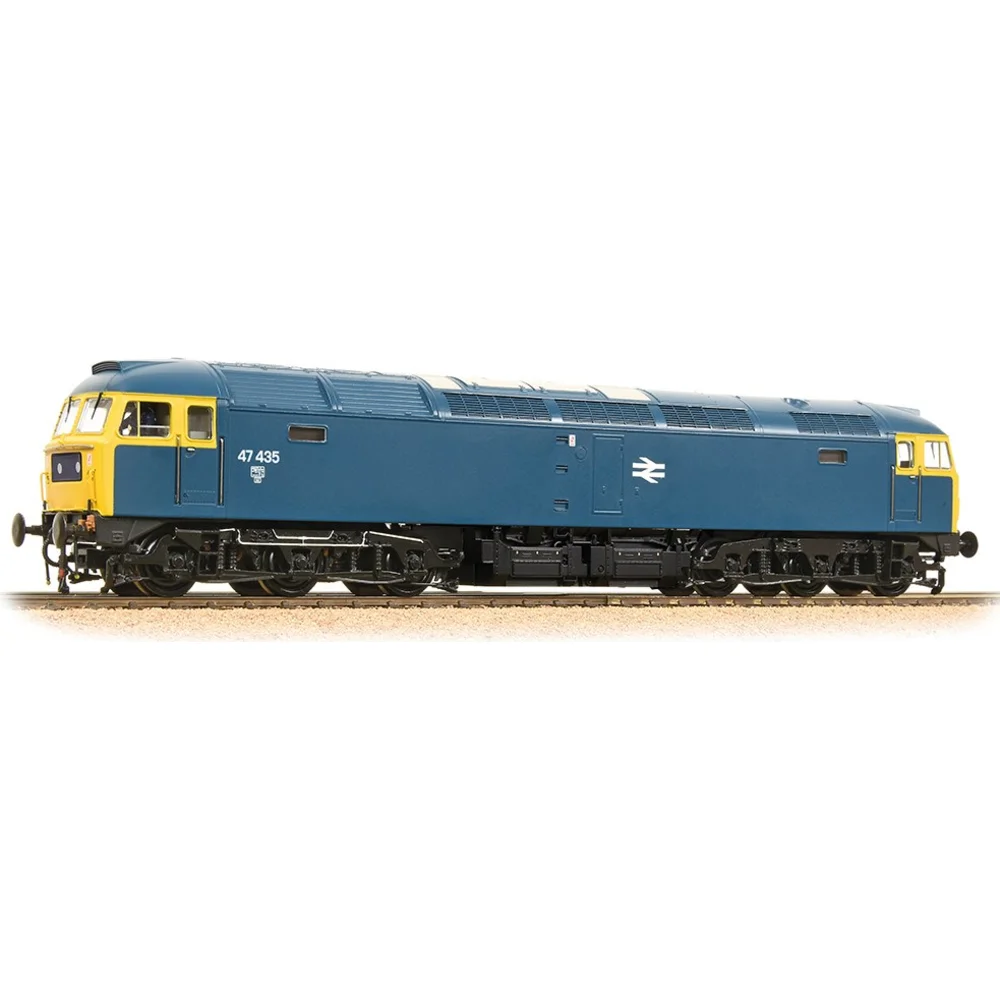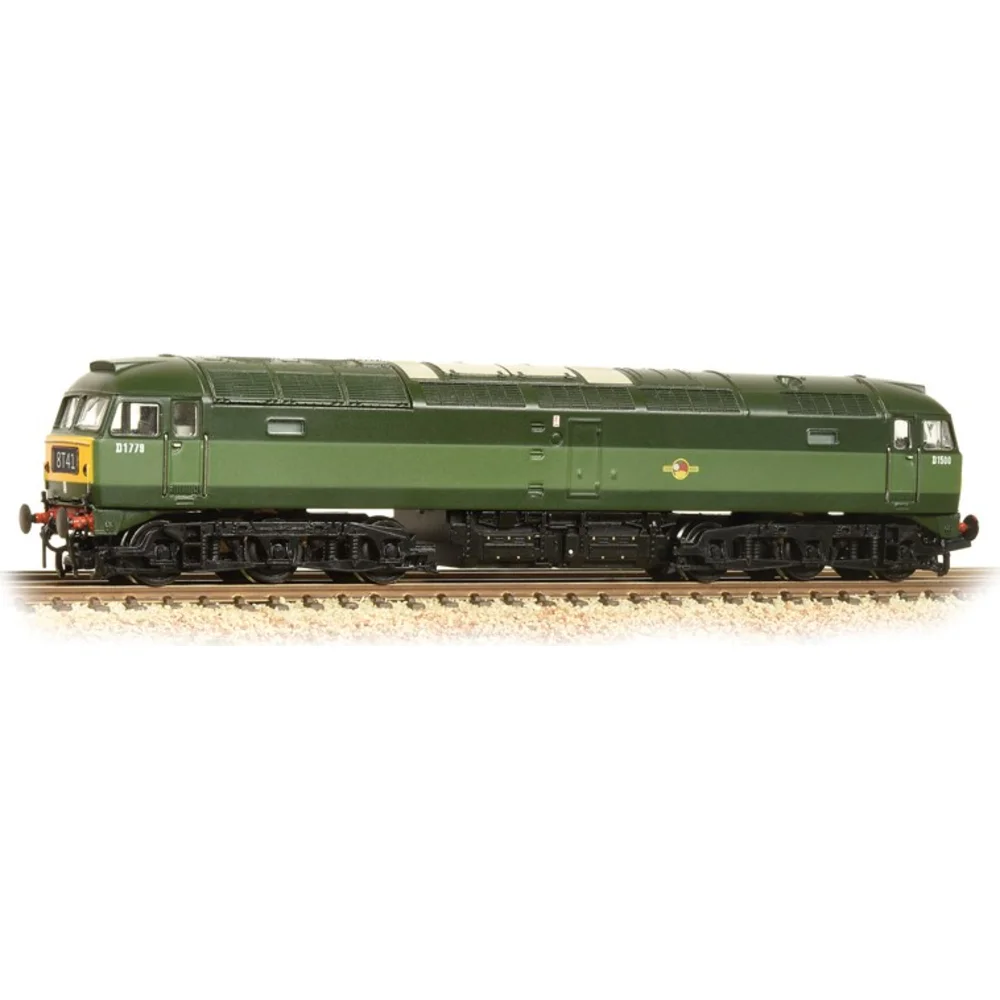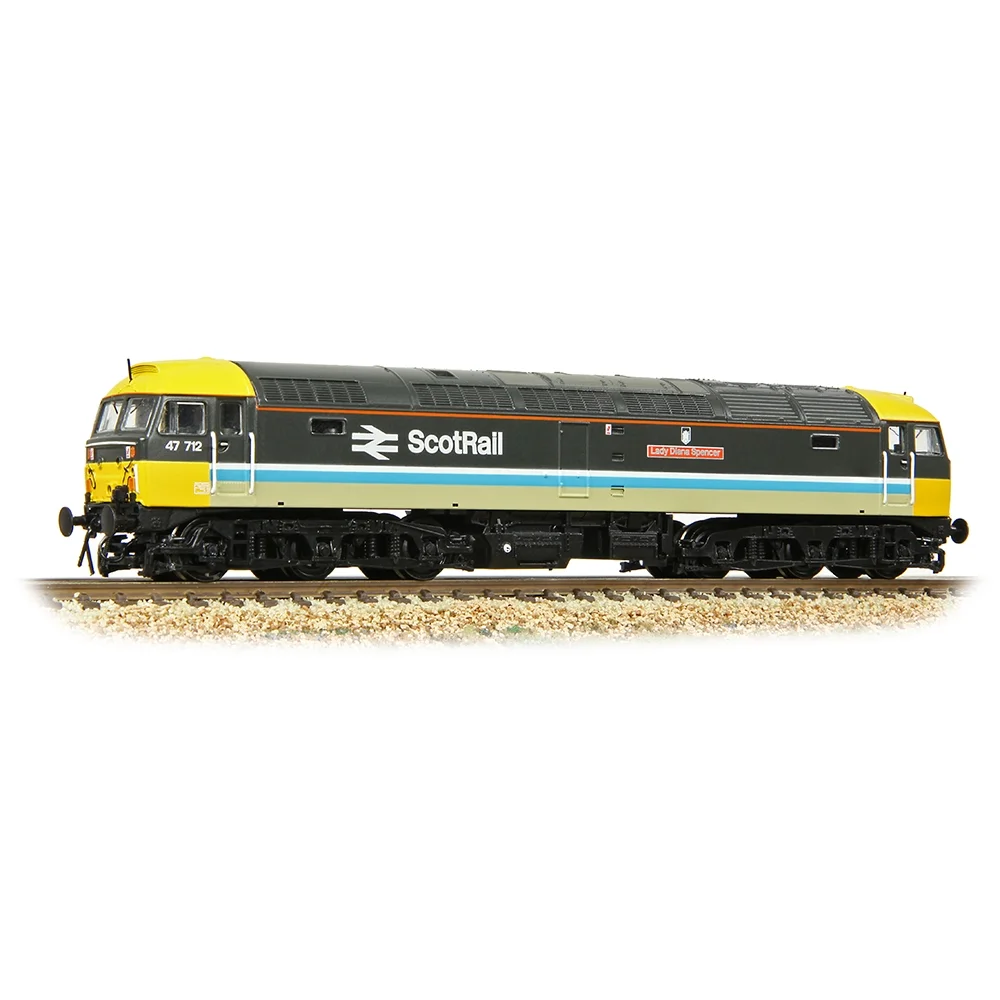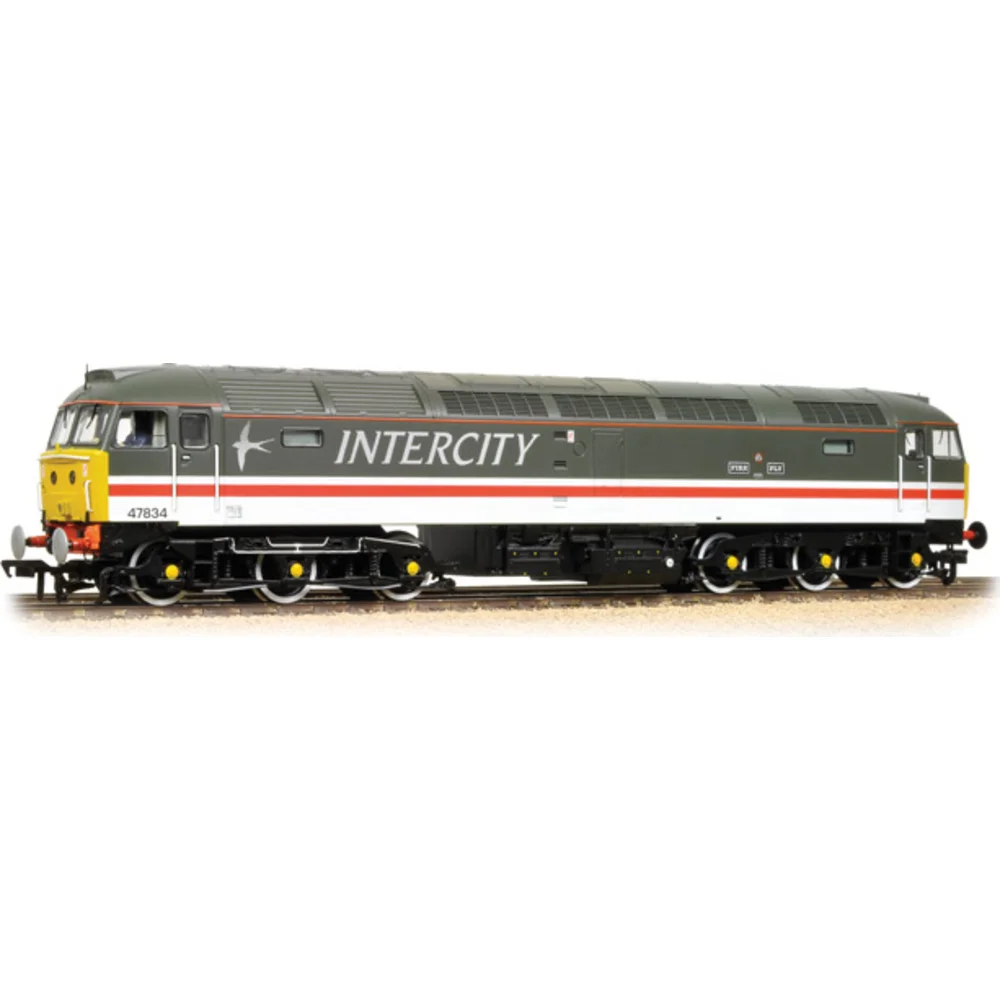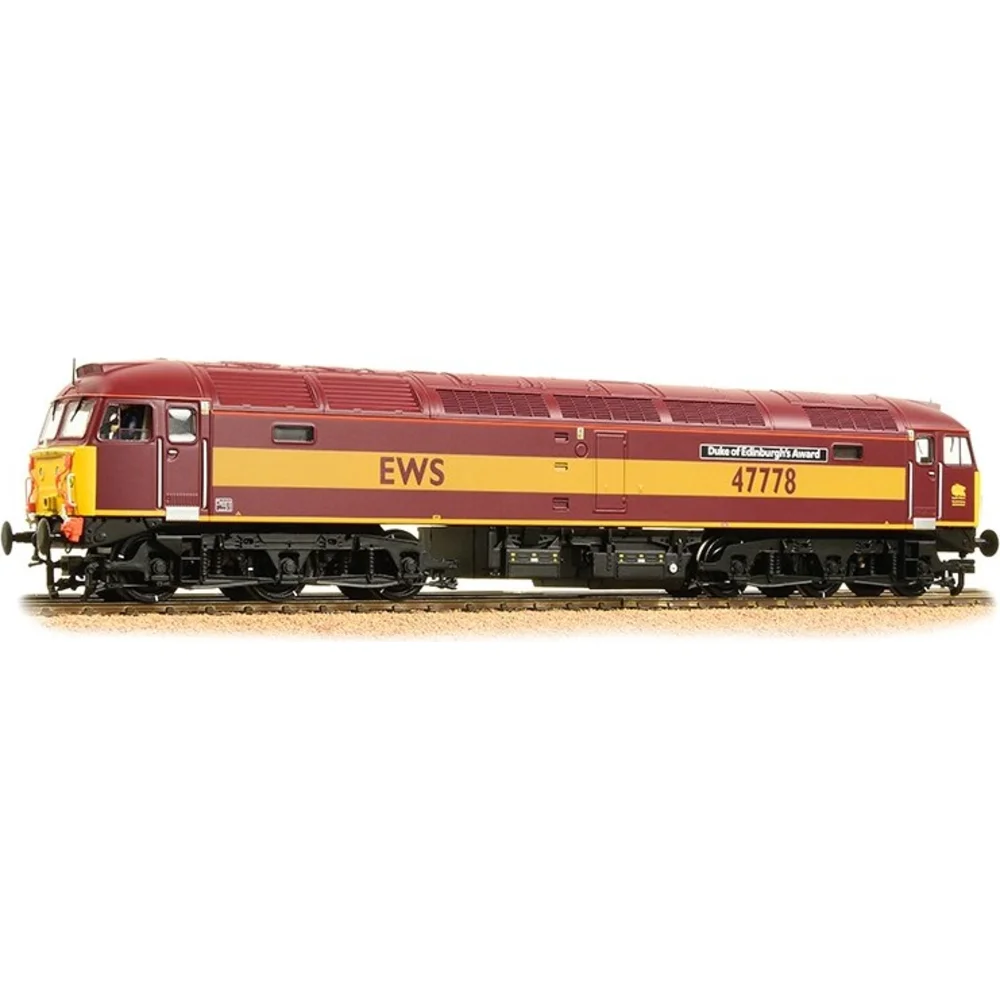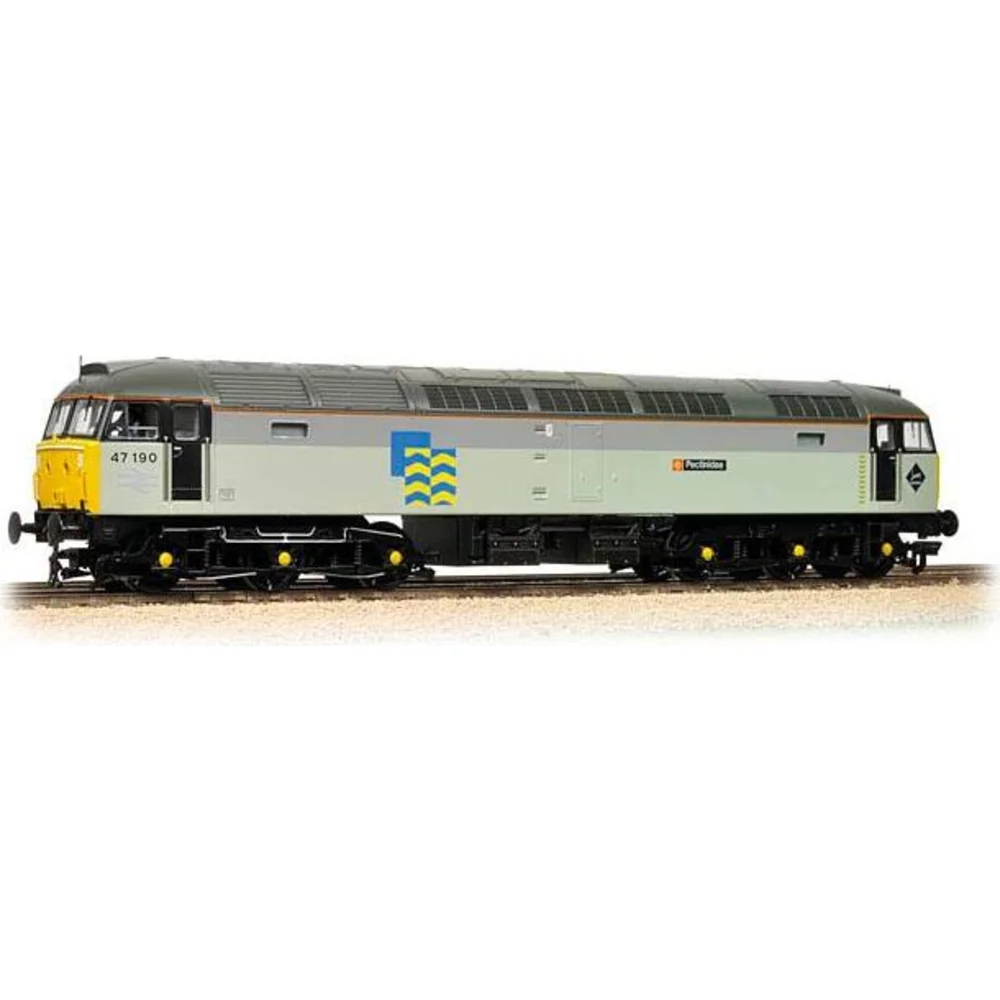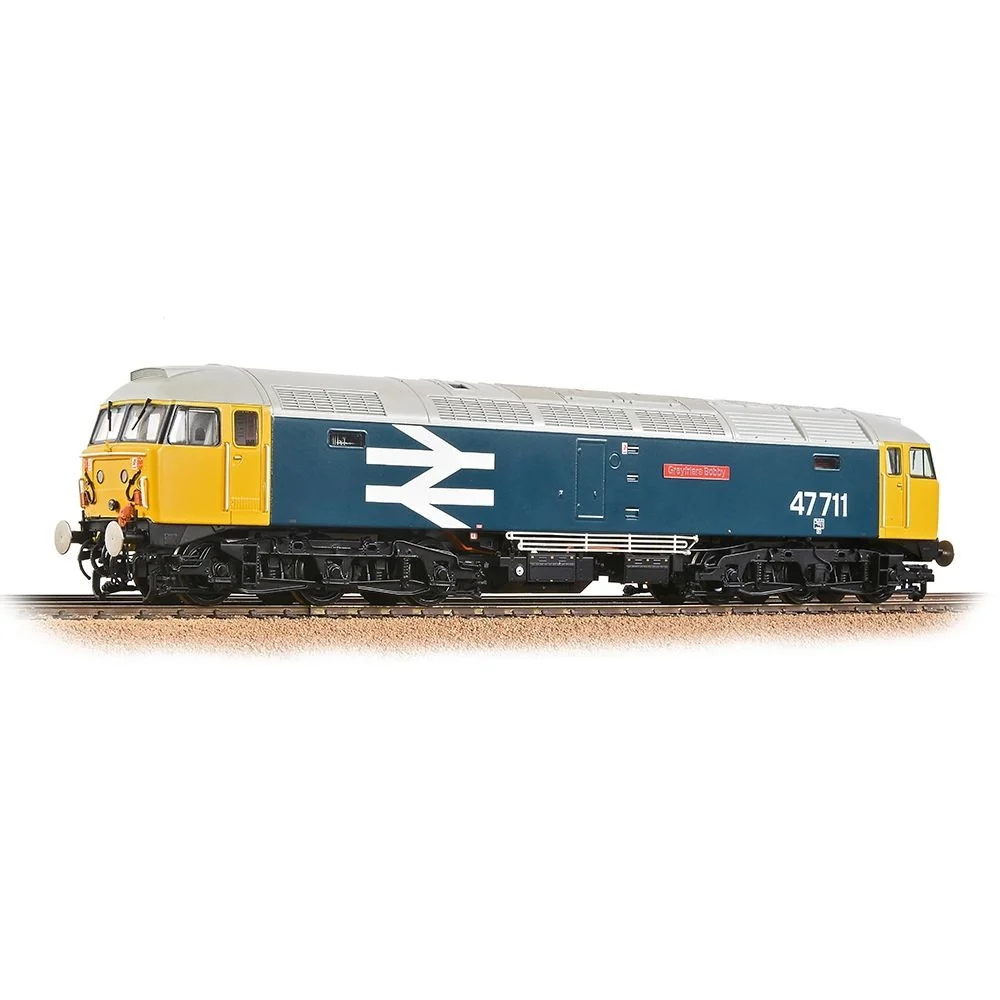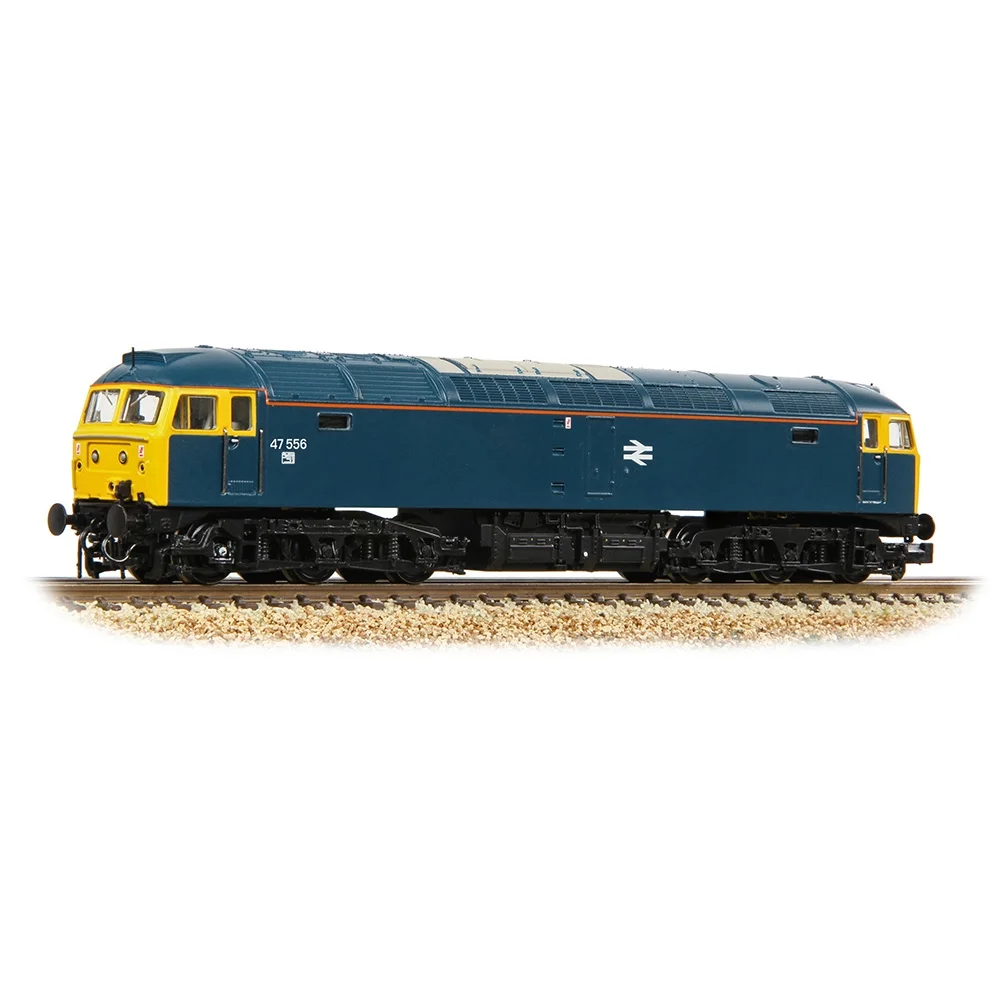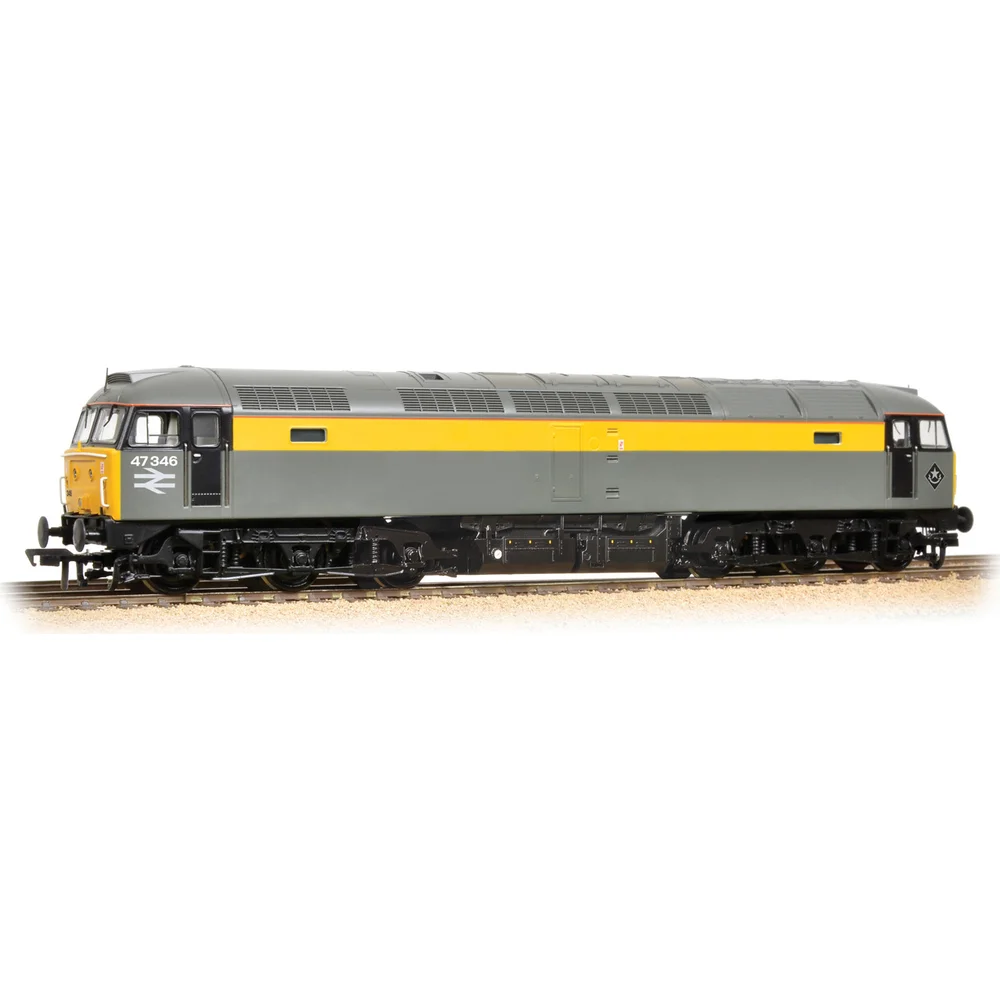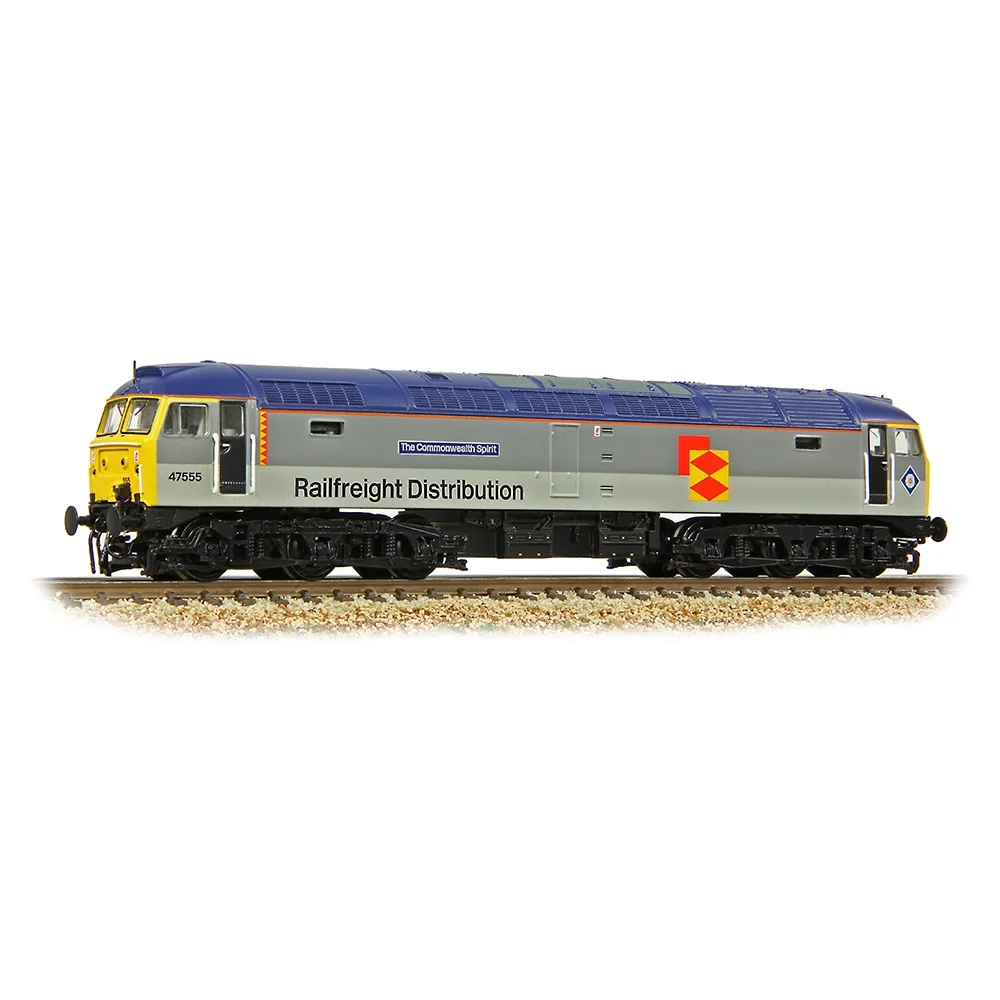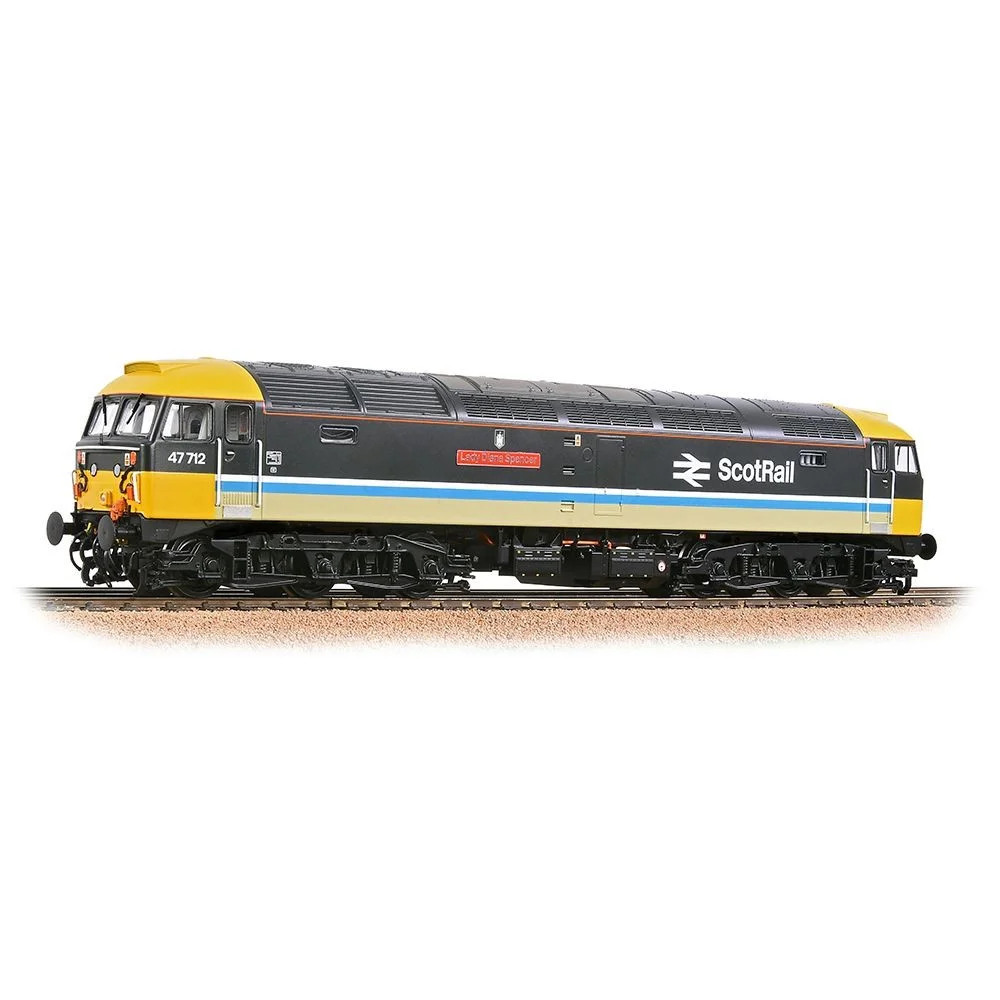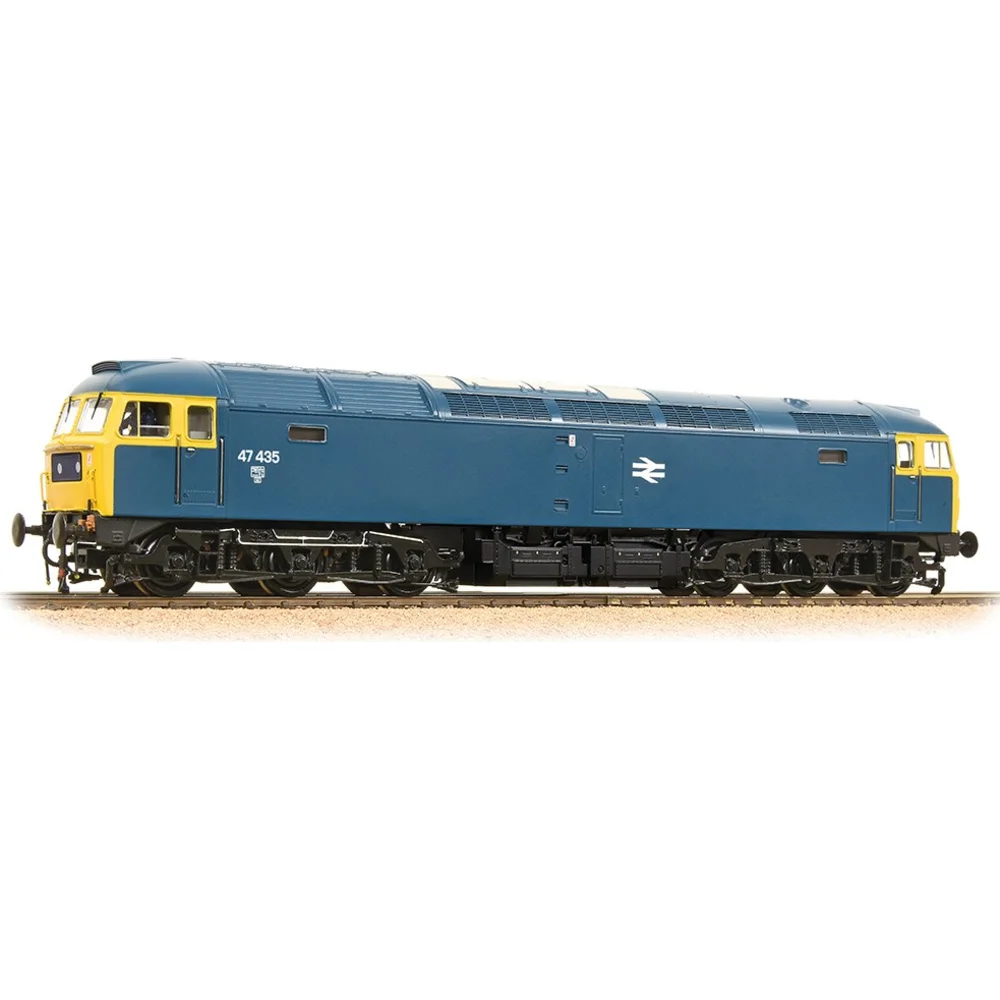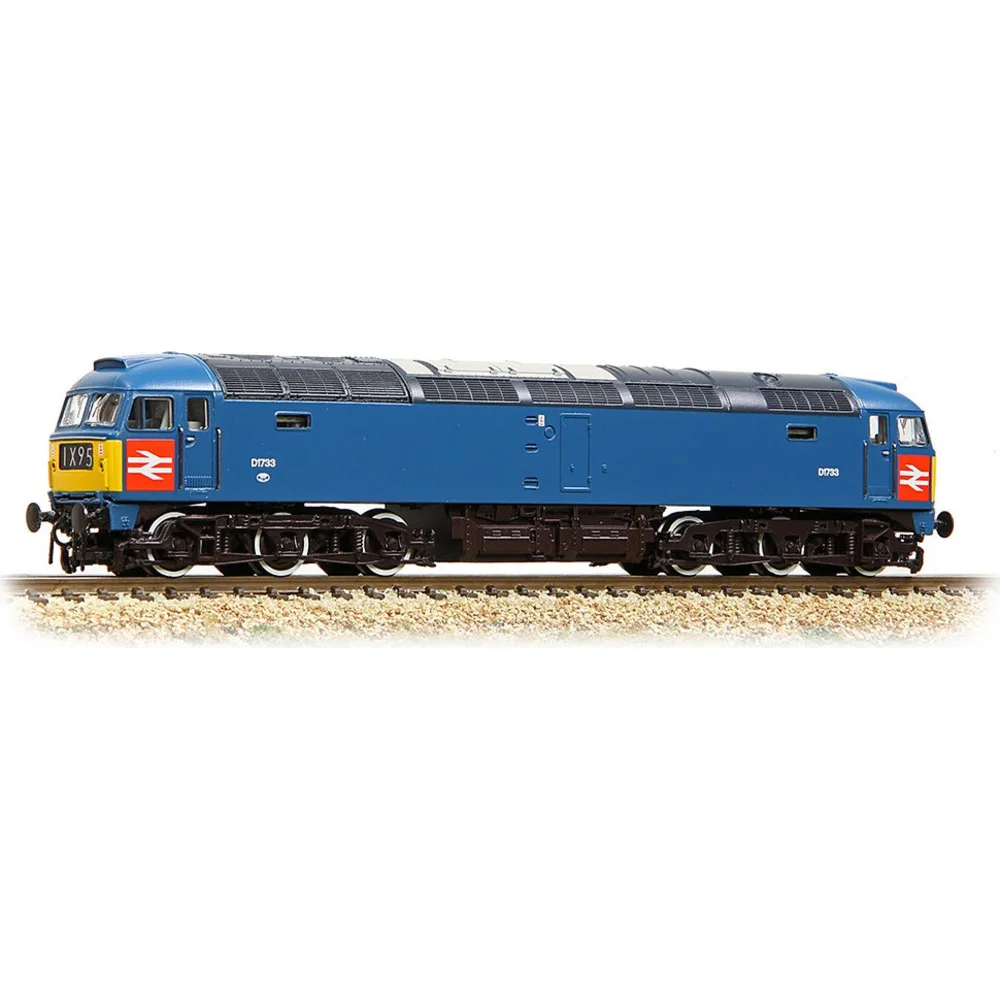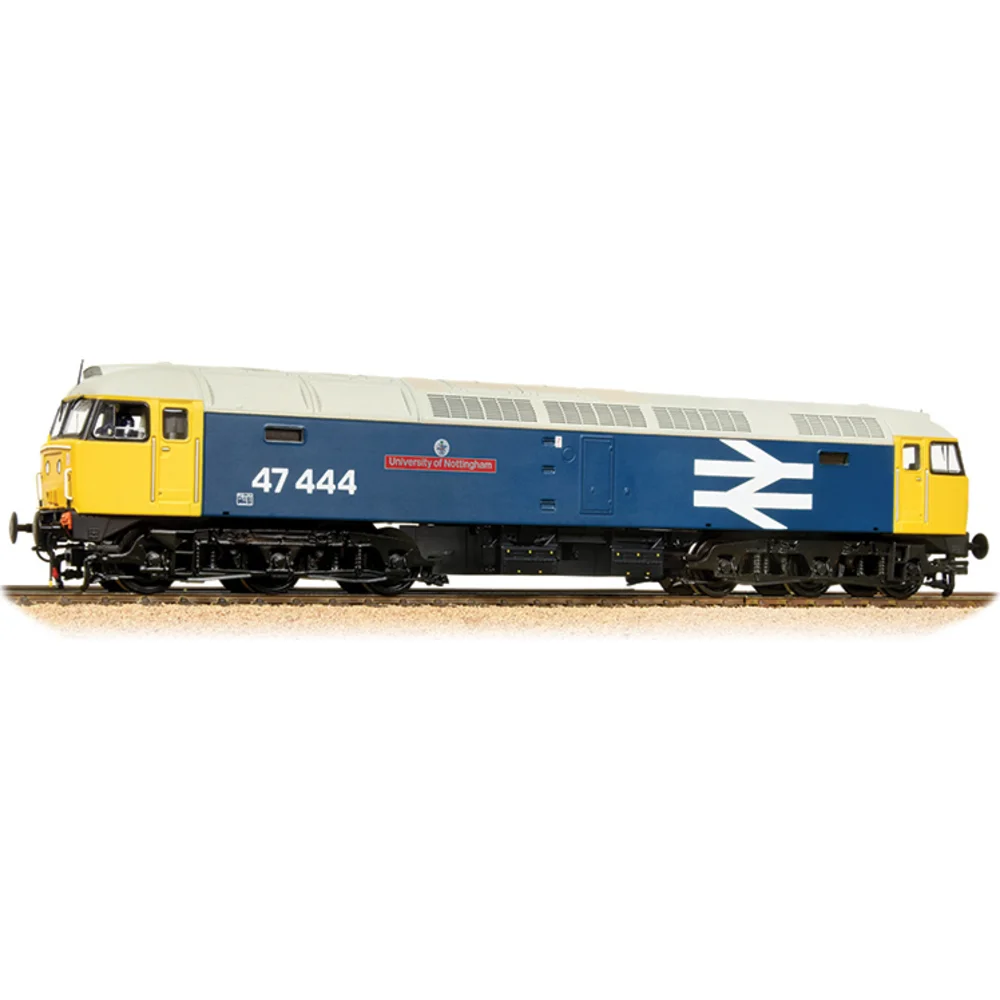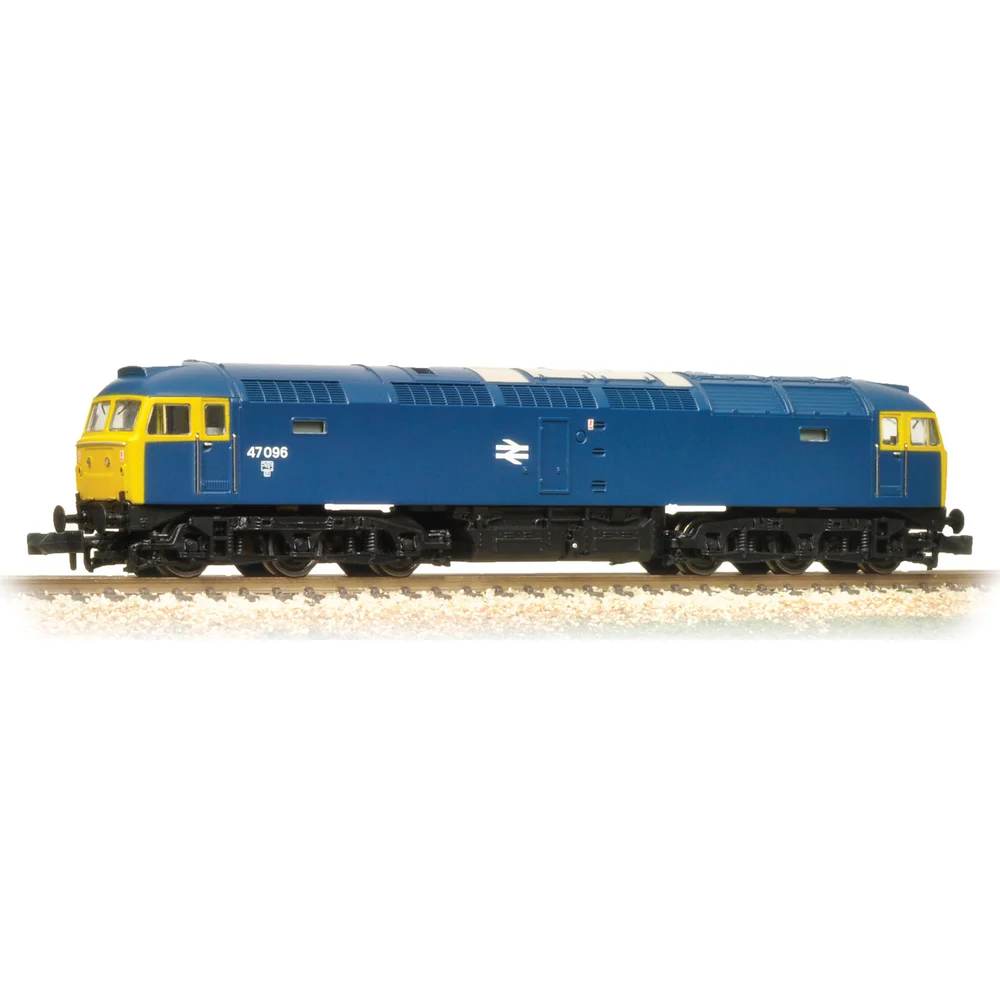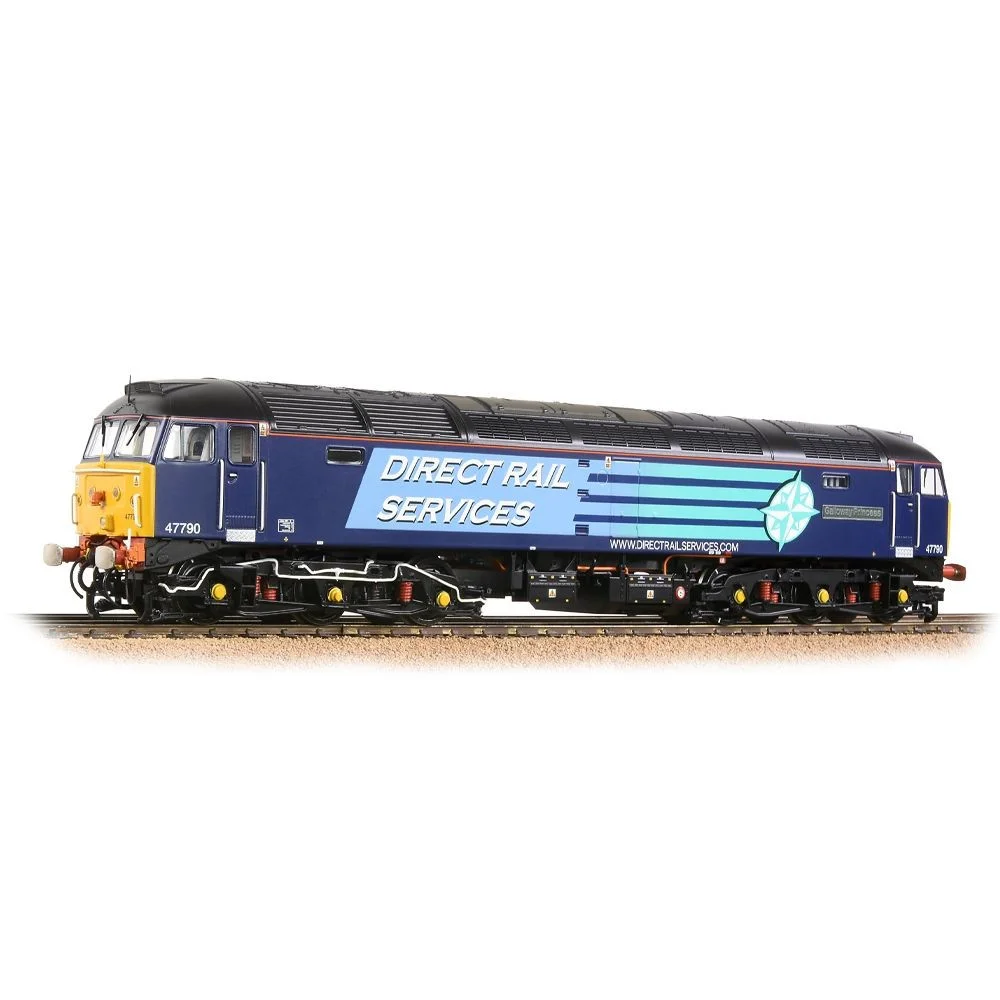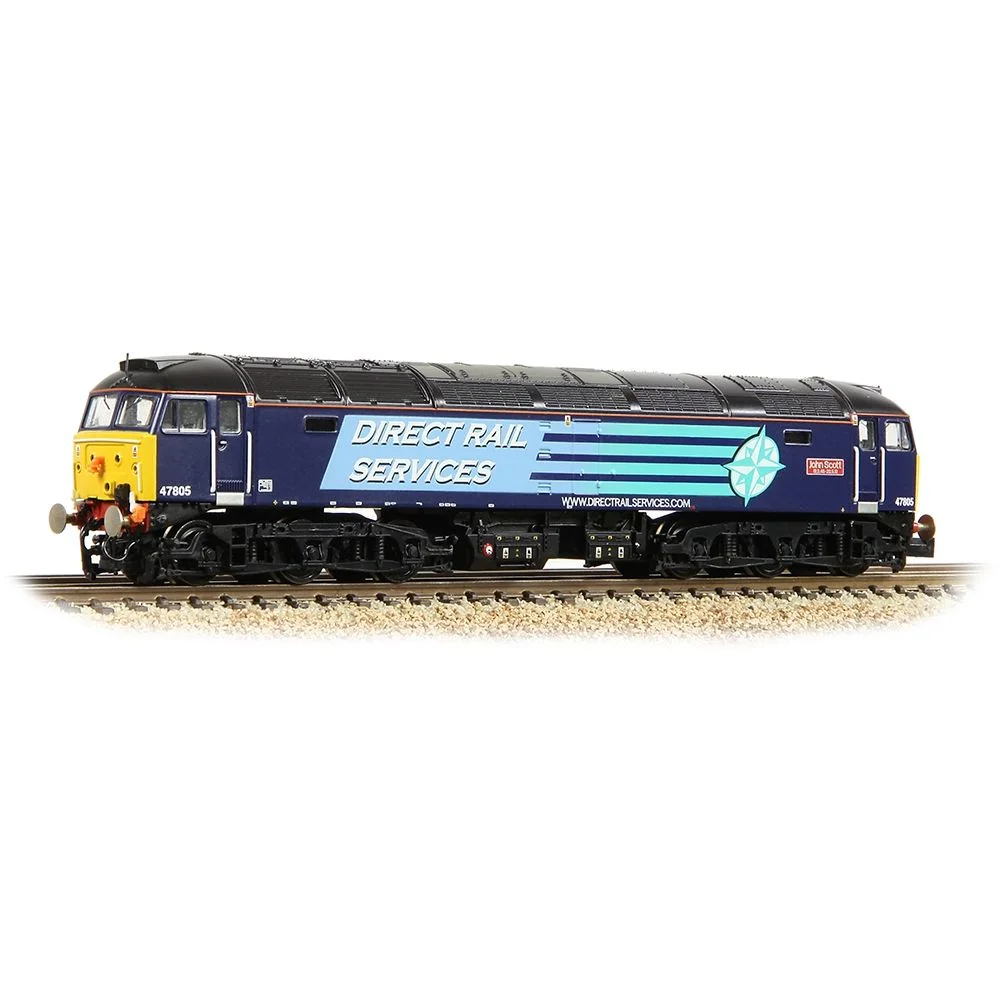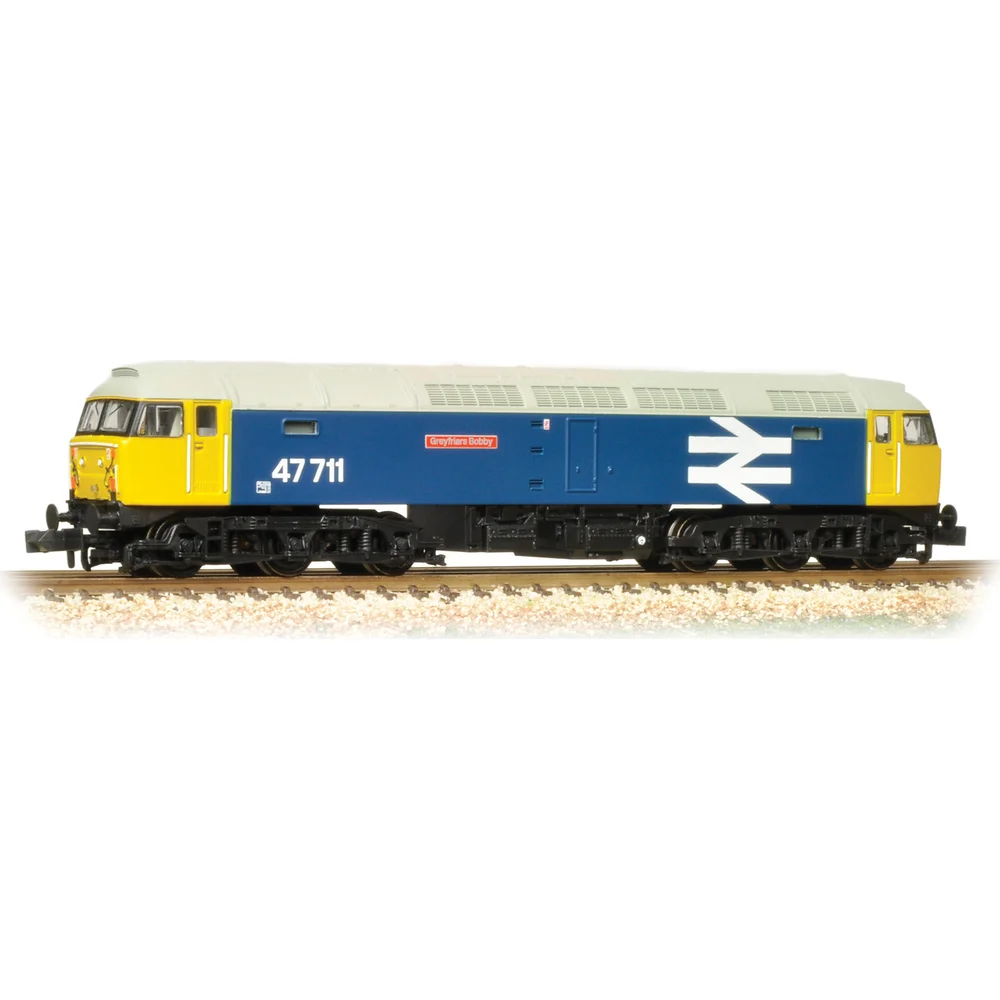British Rail Class 47 – Britain's Legendary Mixed-Traffic Workhorse 1962-Present
Contents
The British Rail Class 47 stands as Britain's most numerous mainline diesel locomotive class and one of railway history's greatest success stories. Between 1962 and 1968, Brush Traction and BR's Crewe Works constructed 512 of these versatile Co-Co diesel-electrics, originally designated as Brush Type 4. Despite catastrophic early reliability problems that nearly derailed the entire programme, a pragmatic mid-1960s decision to derate the Sulzer 12LDA28C engine from 2,750 to 2,580 bhp transformed the class into Britain's most dependable mixed-traffic locomotive, achieving an extraordinary 55-year service life that continues into 2024.
For model railway enthusiasts, the Class 47 represents the ultimate modelling subject. Operating across all British Rail regions from 1962 through privatisation and into preservation, these locomotives hauled everything from royal trains to coal hoppers, wore over thirty distinct liveries spanning BR corporate blue through colourful 1980s sectors to modern heritage schemes, and remain active on heritage railways today. Current-generation models from Bachmann and Heljan feature groundbreaking innovations including motorized radiator fans, dual speaker sound systems with authentic Sulzer engine recordings, and over 150 separately fitted detail parts—delivering unprecedented accuracy for enthusiasts recreating authentic 1960s-2020s operations.
The nickname "Duff"—originally coined during the class's troubled early years—became a term of endearment as these workhorses proved their worth across six decades. From hauling the Flying Scotsman to powering Merry-Go-Round coal trains, from InterCity cross-country expresses to dedicated Royal Train duties, the Class 47 exemplified true mixed-traffic versatility. With thirty-two locomotives preserved and five maintaining mainline certification, the distinctive angular profile and unmistakable Sulzer engine note remain familiar sights and sounds on Britain's railways.
Quick Takeaways
- 512 locomotives constructed: Built between 1962-1968 by Brush Traction at Loughborough (310) and BR Crewe Works (202), making them Britain's most numerous mainline diesel class
- Critical derating transformation: Mid-1960s decision to reduce Sulzer 12LDA28C engine output from 2,750 to 2,580 bhp dramatically improved reliability without noticeable performance loss, saving the programme
- 55+ year service life: From October 1962 debut until present day operations in 2024, encompassing British Railways, privatisation, and heritage preservation eras
- True mixed-traffic versatility: Hauled express passenger services, InterCity trains, freight, parcels, mail, coal hoppers, and Royal Trains across all BR regions with 95-100 mph capability
- Exceptional livery variety: Over thirty distinct colour schemes including BR two-tone green, Rail Blue, Large Logo, InterCity, Network SouthEast, Railfreight sectors, and privatisation company liveries
- Outstanding model availability: Current Bachmann Branchline and Heljan OO gauge ranges feature motorized fans, ESU LokSound V5 decoders, and 150+ detail parts with Graham Farish dominating N gauge
- Strong preservation presence: Thirty-two locomotives preserved with five maintaining mainline certification, regularly operating on heritage railways and charter services nationwide
Historical Background and Context
The Class 47 emerged not from careful planning but from desperation. The 1955 Modernisation Plan, published in December 1954, proposed an ambitious £1.24 billion investment to modernise Britain's nationalised railways through large-scale dieselisation. By the early 1960s, this programme faced financial crisis as British Railways' annual losses approached £100 million. The British Transport Commission accelerated diesel adoption following the 1963 Beeching Report, ordering 2,300 diesel locomotives for delivery by year's end—many ordered "off the drawing board" without prototype testing, a gamble that would haunt several designs but ultimately succeed spectacularly with the Class 47.
The BTC categorised diesel locomotives by power output into five Types, with Type 4 (2,000-2,999 bhp) specified for the heaviest express passenger, parcels and freight trains. The critical constraint was maximum axle load of 19 long tons versus 20+ tons for existing Type 4s like the Peaks. This weight restriction, imposed by BR's Civil Engineer, would permit operation across the entire network—a decisive advantage. The specification demanded diesel-electric transmission, rejecting Western Region's diesel-hydraulic approach, mixed-traffic capability, and rapid availability to accelerate steam elimination.
In early 1960, the BTC invited tenders for 100 locomotives meeting the new Type 4 specification. Responses included Birmingham Railway Carriage & Wagon offering a production version of prototype D0260 Lion, Brush Traction proposing three options including the twin-engined D0280 Falcon or single-engine designs with Sulzer or English Electric power, English Electric offering a DP2-based design, and North British Locomotive Company's Sulzer-powered proposal. The BRCW bid was initially preferred. However, before prototypes could be properly assessed, the BTC cancelled the final order of twenty Class 46 Peaks and invited bids for twenty locomotives using the Brush electrical equipment already ordered for the cancelled machines. Brush won this contract—marking a gamble on an unproven design to meet urgent delivery requirements.
Insider Tip: Identifying Early vs Late Production
The first twenty locomotives (D1500-D1519) differed significantly from later production. Built with dual steam and electric train heating tapped from DC generators, these pilot batch machines featured Westinghouse brake systems whilst all subsequent locomotives used Metcalfe-Oerlikon brakes. Additionally, early examples exhibited subtle body construction variations reflecting Brush's refinement of the integral monocoque design. When modelling authentic early 1960s operations, ensure your chosen model represents these pilot batch characteristics—Bachmann and Heljan both offer variants capturing these distinctions.
Of the eventual 512 total locomotives, Brush constructed 310 at their Loughborough Falcon Works whilst British Railways' Crewe Works built the remaining 202, sharing the workload to achieve production targets averaging nearly two locomotives per week over five years. Six batches were ordered with deliveries spanning January 1962 to May 1968. The first batch (D1500-D1519, twenty locomotives) was ordered on 28 February 1961. The second batch (D1520-D1681, 162 locomotives) followed on 1 January 1962. Subsequent orders comprised D1682-D1706 (25 locomotives, 4 September 1962), D1707-D1781 (75 locomotives, 28 September 1962), D1782-D1861 (80 locomotives, 22 July 1963), and finally D1862-D1999 plus D1100-D1111 (150 locomotives, 24 March 1964).
The Sulzer 12LDA28C twin-bank twelve-cylinder engine was selected despite being substantially more expensive (£45,000 versus £26,000 for English Electric equivalent) and heavier (22.3 tons versus 19.4 tons). British Railways favoured Sulzer's proven marine diesel technology and experience from the Peak fleet, despite those engines' early reliability issues. The 12LDA28C was an uprated, intercooled development of the 12LDA28B used in Class 45/46 Peaks, producing 2,750 bhp at higher output. Vickers at Barrow-in-Furness fabricated engine bedplates and cylinder blocks and assembled complete power units, achieving production rates of one engine per day by October 1964 when the 1,000th unit was delivered.
However, the gamble encountered severe problems. Many locomotives required engine repairs or complete replacement within months of entering service due to crankcase failures. The 12LDA28C at its highest C-rating suffered unacceptable stresses and vibrations from the cyclic nature of rail service. In the mid-1960s, British Railways took the pragmatic decision to derate the entire fleet from 2,750 to 2,580 bhp, significantly improving reliability by reducing stresses on the powerplant without noticeable performance reduction. This engineering solution prioritising longevity over paper performance would prove the key to the class's remarkable 55+ year service life, vindicating the original gamble and establishing the Class 47 as Britain's most dependable mixed-traffic diesel locomotive.
Design and Technical Specifications
The engineering excellence of the British Rail Class 47 lay in Brush Traction's revolutionary lightweight monocoque construction achieving Type 4 power requirements whilst maintaining axle loads under 19 tons. At the heart of the design sat the Sulzer 12LDA28-C twin-bank twelve-cylinder two-stroke diesel engine, a sophisticated powerplant featuring two parallel banks of six cylinders each with crankshafts geared together to a single output shaft. The 280mm bore and 320mm stroke delivered 264 litres total displacement, originally rated at 2,750 bhp at 750 rpm before the critical mid-1960s derating to 2,580 bhp that transformed reliability without compromising operational capability.
The integral monocoque body construction represented groundbreaking innovation for British diesel locomotives. Unlike earlier designs using separate underframe and body structures, the Class 47 employed a stressed-skin approach where the body shell itself provided structural rigidity, dramatically reducing weight whilst maintaining strength. This packaging brilliance allowed Brush to achieve 111.5-120.6 tonnes total weight across six axles in a Co-Co wheel arrangement, distributing load to just 18.7 tonnes per axle—critically below the 19-ton restriction enabling unrestricted Route Availability 5 operation across the entire British Rail network including lightly-laid branch lines.
Dimensions reflected careful optimisation for British loading gauge restrictions. At 19.38 metres length, 2.79 metres width, and 3.96 metres height, the Class 47 maximised internal volume for equipment packaging whilst maintaining clearances through Britain's notoriously restrictive tunnels and platforms. The 14 ft 6 in wheelbase cast steel frame three-axle bogies featured sophisticated two-stage suspension with spring-equalised primary suspension at axlebox level using coil springs on each axle, providing vertical compliance and weight distribution, combined with bolster-mounted secondary suspension employing coil springs between bogie frame and locomotive body, isolating the body from track irregularities for comfortable riding characteristics at speeds up to 95-100 mph.
| Specification | Value |
|---|---|
| Power output (original) | 2,750 bhp (2,050 kW) at 750 rpm |
| Power output (derated) | 2,580 bhp (1,920 kW) |
| Engine type | Sulzer 12LDA28-C twin-bank 12-cylinder two-stroke diesel |
| Maximum speed | 95 mph (153 km/h); 100 mph for Class 47/7 |
| Weight | 111.5-120.6 tonnes (varies by sub-class) |
| Length | 19.38 m (63 ft 6 in) |
| Width | 2.79 m (9 ft 2 in) |
| Height | 3.96 m (13 ft) |
| Wheel arrangement | Co-Co (all six axles powered) |
| Tractive effort | 267 kN (60,000 lbf) starting |
| Route availability | RA 5 (unrestricted) |
| Fuel capacity | 850 gallons standard; 1,120 gallons extended range |
| Brake systems | Dual air/vacuum (air-only on later conversions) |
Six Brush TM64-68 DC traction motors provided propulsion, with one nose-suspended four-pole DC series-wound motor driving each axle through pinion-gear arrangement. These forced-ventilation motors with motor pinion driving gearwheel pressed onto axle delivered smooth, reliable power transmission across the entire speed range. Original locomotives used DC generators for traction power, with the initial batch (D1500-D1519) featuring dual steam and electric heating tapped from the DC generator. From 1967, later locomotives incorporated AC alternators specifically for electric train heating, representing significant technical advancement enabling operation with modern electrically-heated coaching stock.
Technical Innovation: Sub-Class Evolution
The Class 47's brilliance lay in modular design enabling diverse sub-class configurations whilst maintaining component commonality. Class 47/0 featured steam heating boilers for traditional coaching stock. Class 47/3 removed all train heating equipment, adding slow-speed control and ballasting for dedicated freight duties on Merry-Go-Round coal trains. Class 47/4 incorporated electric train heating alternators enabling operation with Mk2/Mk3 coaches. Class 47/7 added push-pull control equipment and extended-range fuel tanks for intensive Edinburgh-Glasgow shuttles. This adaptability without fundamental redesign exemplified pragmatic engineering, allowing British Railways to deploy appropriate variants for specific duties whilst maintaining unified maintenance procedures and spare parts inventory.
Brake systems varied between early and late production. The first twenty locomotives (D1500-D1519) employed Westinghouse brake equipment whilst remaining machines used Metcalfe-Oerlikon systems. All featured integral air braking equipment mounted on bogies providing 61 tonnes brake force. Progressive modifications equipped locomotives with dual vacuum/air braking for operational flexibility with mixed rolling stock, though later Class 47/2 variants had vacuum braking isolated or removed, becoming air-brake only as vacuum-braked coaching stock was withdrawn from service.
The various sub-classes reflected operational specialisation whilst maintaining fundamental design commonality. Class 47/0 comprised 299 basic variants with steam heating boilers weighing approximately 111.5-114 tonnes. Class 47/3 numbered 81 freight variants built without train heating, fitted with slow-speed control for MGR operation and ballasted to 118-120 tonnes for improved adhesion. Class 47/4 eventually encompassed 263 passenger variants fitted with Electric Train Heating alternators producing 850-1,000 kW. Class 47/7 comprised seventeen push-pull equipped variants with TDM control equipment and 1,120-gallon long-range fuel tanks, uprated for 100 mph continuous operation. Class 47/8 included 54 extended-range variants created from 1989 with 1,120-gallon tanks for Virgin Trains cross-country services. This systematic approach to variant development without fundamental redesign demonstrated the robustness of the original Brush conception, enabling 55+ years of adaptable service across every conceivable railway duty.
Service History and Operations
Prototype D1500 emerged from Brush's Falcon Works in Loughborough during late September 1962, entering service at Finsbury Park depot on 8 October 1962 working its first passenger service on the East Coast Main Line. The first twenty locomotives were allocated to the Eastern Region, based at London King's Cross Top Shed (34A), entering service from autumn 1962 to support Class 55 Deltic locomotives on ECML express passenger duties. These pioneering machines quickly demonstrated both the potential and the problems of the new design, with early reliability issues prompting the critical mid-1960s derating decision that would secure the class's future.
Geographic deployment spread across all British Rail regions except the Southern, reflecting the class's true mixed-traffic versatility. Major Eastern Region allocations included Finsbury Park and Stratford depots for London suburban and ECML services. The Midland Region concentrated locomotives at Crewe and Toton for Trans-Pennine expresses and heavy coal traffic. Western Region depots at Old Oak Common, Cardiff Canton, Bristol Bath Road, and Laira operated Class 47s on West Country services and South Wales coal trains. Scottish Region received its permanent allocation in October 1965 when nine locomotives (D1968-76) transferred to Haymarket depot, eventually expanding to substantial fleets at Haymarket and Eastfield for Anglo-Scottish services and intensive Edinburgh-Glasgow push-pull operations.
The fleet composition reflected three main operational categories. 299 locomotives with steam heating (Class 47/0) handled passenger and mixed-traffic duties during the transition from traditional to electrically-heated coaching stock. 81 locomotives built without train heating (Class 47/3) concentrated on dedicated freight duties including Merry-Go-Round coal trains, their slow-speed control equipment enabling precise positioning for automatic loading/unloading at power stations and collieries. Eventually 263 locomotives received electric train heating alternators (Class 47/4), becoming the backbone of passenger operations with modern Mk2 and Mk3 coaching stock through the 1970s-1990s.
Operational versatility proved extraordinary. Class 47/4s hauled express passenger trains on the East Coast Main Line, InterCity cross-country services connecting all corners of Britain, and secondary passenger duties on branches and cross-country routes. Class 47/7s worked intensive Edinburgh-Glasgow-Aberdeen push-pull shuttles from 1979, their 100 mph capability and TDM control equipment enabling rapid turnarounds without locomotive run-rounds. Class 47/3s dominated heavy freight operations including Merry-Go-Round coal trains with HBA/HEA hoppers serving power stations, Freightliner container traffic with FEA/FIA flats, oil trains with TTA/TEA tankers, and aggregate trains. The class also handled Royal Mail trains with GUV/VAN parcels vans until 2004, newspaper trains, and from 1995-2004, dedicated Royal Train duties with specially-liveried 47798 Prince William and 47799 Prince Henry.
Operational Insight: The Push-Pull Revolution
The Class 47/7 variant revolutionised Scottish inter-city operations from 1979. Twelve locomotives (47701-47712) received TDM push-pull equipment enabling driver control from Driving Brake Standard Open vehicles at the train's opposite end, eliminating time-consuming locomotive run-rounds at Edinburgh Waverley and Glasgow Queen Street. Combined with 1,120-gallon extended-range fuel tanks and 100 mph certification, these modifications enabled intensive hourly Glasgow-Edinburgh services with rapid 50-minute journey times. This operational pattern—maintaining high-frequency services with quick turnarounds—demonstrated how thoughtful modification could extend existing traction capability, a lesson BR applied to subsequent refurbishment programmes and one that heritage railways now replicate on diesel galas.
The 1970s TOPS computerisation renumbered the fleet from D-prefix to 47xxx series, creating identifiable sub-classes that aided operational management. Class 47/0 (steam heat, 47001-47298), 47/3 (no heat, 47301-47381), 47/4 (ETH equipped, 47401-47665), 47/7 (push-pull, 47701-47799), and 47/8 (long-range, 47801-47854) designations enabled depot staff and control offices to rapidly identify locomotive capabilities and deploy appropriate machines for specific duties. This systematic approach to fleet management—maintaining large numbers of fundamentally similar locomotives with clearly-defined specialisations—exemplified British Railways' mature diesel fleet operation.
Named locomotives proliferated throughout the class's service life, with many carrying multiple names across their careers. Notable examples included 47401 North Eastern, 47500/47815 Great Western, 47580 County of Essex, 47749 City of Truro, and 47830 Beeching's Legacy. The record holder, D1100/47298/47830, carried over twenty different names including Star of the East, Solway Princess, Robin of Templecombe, Restless, Pride of Cumbria, and finally Beeching's Legacy when named on 12 November 2015 to mark fifty years since Britain's first container train. The Royal Train pair 47798 Prince William and 47799 Prince Henry wore distinctive claret livery from 1995-2004, hauling Her Majesty Queen Elizabeth II across Britain until replacement by Class 67s.
Remarkably, only five locomotives were withdrawn by 1986, all due to accident damage. Programmed withdrawals commenced with the non-standard pilot batch (47401-47420) between 1986-1992 as their unique dual heating systems complicated maintenance. By end-1992, sixty-one locomotives had been withdrawn; the rate accelerated with eighty-six more condemned 1993-1995 as new Class 158/159/165/166 diesel multiple units displaced locomotive-hauled secondary services. The fleet stood at approximately 450 locomotives at privatisation in 1994-1997, testament to fundamental reliability and continuing utility despite being thirty-plus years old.
Privatisation distributed Class 47s among multiple operators. Virgin CrossCountry inherited a substantial fleet of Class 47/8s for cross-country services until displaced by Class 220 Voyager trains in 2002. EWS (English Welsh & Scottish Railway) became the largest operator, using Class 47s on freight, mail trains, and Caledonian Sleeper services until systematic withdrawal from 2004. Other operators included Freightliner for container traffic, First Great Western, Anglia Railways, and West Coast Railways for charter trains. By 2024, approximately thirty locomotives remain operational on heritage railways with thirty-one maintaining mainline operational status. Additionally, thirty-three locomotives were rebuilt as Class 57s with EMD engines between 1998-2004, extending the basic design's operational life with modern powerplants delivering improved reliability and performance for Freightliner, Virgin Trains, and First Great Western services.
Fleet
No locomotives found.
Withdrawal and Preservation Legacy
The withdrawal history of the British Rail Class 47 reflects both the longevity achieved through the 1960s derating decision and the inevitable obsolescence as newer, more efficient traction arrived. The first casualty occurred in March 1965 when D1734 was withdrawn after just eight months following severe accident damage at Shrewsbury. Despite this early loss, the class proved exceptionally durable—by 1986, only five locomotives had been withdrawn, all due to accident damage rather than life-expiry, a remarkable testament to fundamental reliability that vindicated the original Brush design and BR's pragmatic engineering approach.
Programmed withdrawals began in 1986 targeting the twenty non-standard pilot batch locomotives (47401-47420) whose dual steam/electric heating systems complicated maintenance as steam-heated coaching stock disappeared from service. These pioneers, including historic first-of-class 47401 (originally D1500), faced withdrawal between 1986-1992. The main withdrawal wave commenced in the early 1990s as British Rail introduced new generation diesel multiple units that displaced locomotive-hauled secondary services. By end-1992, sixty-one locomotives had been condemned. The pace accelerated dramatically 1993-1996 with eighty-six additional withdrawals as Class 158/159 Sprinters and Class 165/166 Turbos replaced locomotive-hauled local services across regional railways.
Multiple factors drove the class's decline from the late 1990s onwards. The introduction of Class 66 freight locomotives from 1998—with EWS ordering 250 of these reliable, fuel-efficient American-designed machines—displaced Class 47s from heavy freight duties. High-Speed Train Class 43 power cars monopolised premium passenger services on non-electrified routes. Virgin Trains' Class 220 Voyager diesel multiple units replaced Class 47/8-hauled CrossCountry services from 2001-2002. Progressive mainline electrification reduced requirements for diesel traction on key routes. Spare parts scarcity as specialist suppliers closed complicated maintenance. Privatisation pressures favoured newer, more efficient locomotives with lower operating costs and better fuel economy.
The Royal Train locomotives 47798 Prince William and 47799 Prince Henry—perhaps the most famous Class 47s—were replaced by Class 67s in 2004 after nine years hauling Her Majesty Queen Elizabeth II. Both locomotives received preservation, with 47798 entering the National Railway Museum collection and 47799 moving to the Eden Valley Railway. Their distinctive claret livery and Royal Train heritage ensures permanent significance in British railway history, representing the class's operational pinnacle serving the monarch.
Preservation's Opportunity
Unlike earlier diesel classes where few examples survived scrapping, the Class 47's extended service life into the preservation era ensured substantial numbers reached enthusiast ownership. As of July 2024, thirty-two locomotives have been preserved, with seventeen operational on heritage railways and five maintaining mainline certification for charter operations. This preserved fleet represents the class's operational diversity—early batch examples like 47401, freight variants, ETH-equipped passenger locomotives, and even a Royal Train locomotive. For modellers, this means authentic prototypes for every era and duty remain accessible for photography, measurement, and inspiration. Heritage railways regularly operate Class 47s on passenger services, diesel galas, and special events, ensuring future generations can experience the distinctive Sulzer engine note and angular profile that characterised British railways for over five decades.
As of July 2024, thirty-two Class 47s have been preserved, with seventy-six locomotives still existing overall including operational mainline examples. Five locomotives maintain mainline certification enabling operations on Network Rail—47270, 47580, 47712, 47773, and 47828—regularly appearing on charter services and special workings. Major heritage railways operating Class 47s include the Mid Norfolk Railway (47580 County of Essex, 47596 Aldeburgh Festival, 47367, 47732), Gloucestershire Warwickshire Steam Railway (47105, 47376), Midland Railway Centre Butterley (47401, 47417), East Lancashire Railway (47402, 47765), Llangollen Railway (47449), and numerous others across Britain.
Significant preserved examples carry special historical importance. 47401 (originally D1500) was the first production locomotive, now operational at Butterley after extensive restoration. 47580 County of Essex maintains mainline certification and was repainted in 2022 with special Queen's Platinum Jubilee livery featuring Union Flag motifs. 47773, owned by Vintage Trains and maintained to mainline standards at Tyseley, operates in authentic BR Brunswick green livery on charter services. 47798 Prince William resides at the National Railway Museum in York as part of the national collection, representing Royal Train heritage. These preserved locomotives ensure the Class 47 story continues through both static display and regular operational demonstrations.
Current operational status reflects continuing utility in heritage and charter sectors. Approximately thirty-one locomotives remain operational on heritage railways across the UK, providing motive power for passenger services during seasonal operations, diesel galas, and special events. Thirty-one locomotives maintain mainline operational status with charter and freight operators including West Coast Railways (the largest current operator), GB Railfreight, Rail Operations Group, and Locomotive Services Limited. Recent heritage railway acquisitions continue—in November 2024, Mid Norfolk Railway acquired 47580 County of Essex and 47596 Aldeburgh Festival from the Stratford 47 Group, securing both locomotives' long-term futures.
Heritage railways regularly feature Class 47s in special events celebrating British diesel heritage. September 2024 saw the "Class 47 Double Up Sunday" at Gloucestershire Warwickshire Steam Railway featuring 47105 and 47376 double-heading services, recreating authentic heavy freight and passenger operations. Such events enable enthusiasts to experience the class in action whilst providing railway preservation groups with significant revenue from increased visitor numbers attracted by these iconic locomotives. The distinctive angular profile, powerful Sulzer engine note, and nostalgic association with BR blue livery and InterCity services ensure Class 47s remain beloved icons of British railway heritage, guaranteeing their preservation story continues for decades to come as new generations discover the remarkable versatility and longevity of Britain's most numerous mainline diesel locomotive class.
Modelling Significance and Scale Replications
The British Rail Class 47 presents exceptional modelling significance due to its position as Britain's most numerous mainline diesel class spanning six decades of operation from 1962 through privatisation into contemporary preservation. For railway modellers seeking authentic British traction, Class 47s provide unparalleled versatility—operating across all BR regions except Southern, hauling every conceivable train type from royal trains to coal hoppers, and wearing over thirty distinct liveries from BR two-tone green through colourful 1980s sectors to modern privatisation schemes. This operational and visual diversity enables modellers to incorporate Class 47s authentically into layouts representing any era from early 1960s modernisation through contemporary heritage operations.
The modelling landscape has evolved dramatically from early crude representations to current generation models featuring groundbreaking technological innovations. Hornby offered Lima-tooled models from the 1970s onwards, providing affordable if basic representations that introduced generations of modellers to the class. The 2020s brought revolutionary advances with both Bachmann Branchline and Heljan introducing all-new toolings featuring unprecedented detail levels, sophisticated drive mechanisms, and factory-fitted sound systems that capture authentic Sulzer 12LDA28C engine recordings. These contemporary models deliver museum-quality accuracy combined with reliable operation, making them suitable for both serious collectors and operational modellers running intensive layout sessions.
Bachmann Branchline announced their all-new Class 47 in January 2021, with first deliveries reaching enthusiasts later that year. The model immediately earned widespread acclaim, winning "Model of the Year 2021" from hobby press for groundbreaking features including motorised radiator fans—an industry first that adds remarkable visual realism as fans spin at scale speeds responding to decoder commands. Enhanced in 2025 with Auto-Release Coupling systems and Bach-Up Stay Alive capacitors preventing sound dropout on dirty track, the Bachmann range represents the current pinnacle of British diesel locomotive modelling.
Bachmann's technical execution impresses throughout. A PLuX22 (21-pin) DCC socket provides straightforward digital decoder installation for DCC Ready models, whilst Sound Fitted variants incorporate factory-installed ESU LokSound V5 decoders with authentic Class 47 sound recordings. The revolutionary Dual Fitted XL Speaker System employs twin speakers—one in each end—with specially-designed enclosures delivering genuine bass reproduction rarely achieved in OO gauge models. A five-pole motor with twin flywheels drives all six axles through geared transmission to both bogies, ensuring smooth operation at realistic crawling speeds appropriate for station work whilst maintaining sufficient power for hauling eight-coach passenger formations up gradients.
Detail quality reaches impressive standards for ready-to-run models. Over 150 separately fitted detail parts including handrails, lamp irons, multiple working unit cables, vacuum brake pipes, and detailed brake rigging create visual depth, whilst factory-fitted glazing includes cab interior detail with driver's seats, control desks, and warning placards visible through tinted windows on Deluxe models. The diecast metal chassis and bogie towers provide excellent weight distribution (approximately 295g) and low centre of gravity, contributing to stable running characteristics. Sprung metal buffers deliver authentic appearance and cushioning during coupling operations. Models accurately represent variations between sub-classes including differences in nose-end construction, equipment placement, and detail fittings reflecting prototype evolution across the 1962-1968 production period.
Advanced Modelling: Sound System Programming
Bachmann's ESU LokSound V5 equipped models feature over thirty controllable functions recreating authentic Class 47 operations. Beyond standard directional lighting and engine sounds, advanced functions include playable two-tone air horn, compressor cycling, cooling fan variation, AWS warning acknowledgement, sanders, brake squeal, coupling/uncoupling sounds, and even random station announcements. The motorised radiator fans on Deluxe models synchronise with engine loading—spinning faster during acceleration and slowing at idle. For ultimate realism, programme CV values to match your layout's operational patterns: adjust momentum for heavy freight consists, calibrate brake delay for precise station stops, and set lighting effects for your preferred era. The LokSound V5 decoder's extensive customisation enables truly personalised operation matching your specific modelling requirements.
Bachmann's product range encompasses extensive livery coverage across all operational eras. Standard DCC Ready models (35-series) carry recommended retail pricing of £239.95 with typical street prices £124-£169. Sound Fitted models (35-xxxSF suffix) retail at £339.95 (street £219-£299). Sound Fitted Deluxe variants (35-xxxSFX) with motorised fans and tinted glazing command £369.95-£394.95 RRP. Available liveries span BR Two-Tone Green with small yellow panels, BR Rail Blue, BR Large Logo Blue with extended yellow ends, InterCity grey/beige/red, Network SouthEast blue with white/red/grey stripes, ScotRail, multiple Railfreight sector schemes (Distribution, Petroleum, Construction, Metals), Direct Rail Services Compass blue, Virgin red/charcoal, Freightliner green/yellow, Rail Operations Group innovation livery, and Colas Rail.
Heljan released their all-new OO gauge Class 47 in February/March 2024 with factory-fitted DCC sound options available across all liveries from launch—a significant departure from traditional separate DCC Ready and Sound Fitted releases. The Danish manufacturer's approach emphasises prototype accuracy through exhaustive research, resulting in nine different cab end designs representing variations across the 512-locomotive production run, over 150 separate parts per model, and minutely-researched livery applications matching original BR and private operator paint specifications.
Heljan's technical specifications match contemporary standards. An MTC 21-pin DCC interface enables straightforward decoder installation, with Sound Fitted variants (471xx series) incorporating ESU LokSound V5 decoders featuring authentic sound recordings by specialist Legomanbiffo—notably including two different sound projects accurately differentiating between Class 47/0 (steam heat boiler) and ETH-fitted variants, capturing the distinct acoustic signatures of each sub-class configuration. The dual speaker system in bespoke enclosures delivers excellent sound quality with clear Sulzer engine note, realistic turbocharger whine, and convincing brake and mechanical sounds.
A five-pole motor with dual flywheels drives four of six axles (rather than Bachmann's all-axle drive), providing adequate pulling power for typical consists whilst maintaining the compact gearing necessary for scale appearance. Detail execution includes prototype-specific tooling variations, separate grab rails and detail parts, working suspension, and push-pull mode functionality for ScotRail Class 47/7 variants enabling authentic operation with Driving Brake Standard Open vehicles. Heljan models retail at £249.95 RRP for DCC Ready versions (street £179-£279) and £389.95 RRP for DCC Sound models (street £279-£389).
Hornby Railroad Plus continues offering budget-range Class 47s using former Lima tooling with upgraded chassis incorporating modern drive mechanisms. These entry-level models suit modellers prioritising operational reliability and affordable pricing over ultimate detail accuracy. Products include R30179 (47656 BR Large Logo Blue, £96.99 RRP), R30182TXS (D1683 BR green with TTS Sound, £144.99 RRP), and R30186 (47803 BR Infrastructure, £96.99 RRP). Features include 8-pin DCC sockets on upgraded models, 3-pole motors on basic versions, and acceptable detail levels for budget price points. Current retail pricing ranges £59-£119, making Hornby models attractive for modellers building large locomotive fleets or operating intensive layouts where occasional knocks and bumps make expensive premium models impractical.
Graham Farish, Bachmann's N gauge brand, dominates 2mm scale Class 47 production with comprehensive range covering multiple liveries and sub-classes. Current models feature 6-pin or 18-pin DCC sockets depending on generation, with DCC Sound Fitted variants (SF suffix) incorporating factory-installed decoders. Notable releases include 371-825ESF (Class 47/0 D1601 BR green with small yellow panels, DCC Sound, £289.95 RRP/£246 street), 371-829A (Class 47/4 47425 Holbeck BR blue, £179.95 RRP/£152 street), 372-245A/SF (Class 47/7 47712 Lady Diana Spencer ScotRail), and 372-261/SF (Class 47/7 47727 Rebecca Colas Rail). Available liveries encompass BR green, BR blue, BR Large Logo, InterCity, ScotRail, Network SouthEast, Railfreight sectors, Colas Rail, Rail Express Systems, First Great Western, and Direct Rail Services. Current retail pricing spans £109-£179 (DCC Ready) and £179-£289 (DCC Sound).
O gauge (7mm scale, 1:43) faces limited availability with Heljan/KMS Railtech announcing a Class 47/7 project currently in development stage. High Level Models offers etched brass body kits (no wheels/motor included) for advanced modellers capable of scratchbuilding running gear. DJH Model Railway Kits provides K321A Class 47 brass etch kit with Serck radiator shutters requiring complete assembly skills. The substantial tooling investment required for O gauge production combined with smaller market size makes ready-to-run Class 47 availability unlikely from major manufacturers, leaving this scale primarily to kit builders and specialist cottage industry producers.
Unique Modelling Tips and Layout Integration
Successfully incorporating British Rail Class 47 models into layout operation requires understanding the class's remarkable operational versatility spanning six decades and every conceivable railway duty. Unlike preserved steam locomotives restricted to heritage lines or modern traction limited to specific franchises, Class 47s authentically operated across all British Rail regions from 1962 through privatisation into contemporary preservation, enabling modellers to deploy them appropriately across virtually any post-1962 British railway scenario whilst maintaining strict prototype fidelity.
Era selection proves fundamental to authentic representation. The 1960s BR green era saw early Class 47s (D1500-D1999) delivered in BR two-tone Brunswick green with small yellow warning panels evolving to full yellow ends by mid-decade. Model these locomotives on express passenger services hauling Mk1 coaches in maroon or mixed green/maroon formations, representing the transitional period as BR systematically replaced steam traction with modern diesels. Infrastructure should reflect 1960s Britain—semaphore signals, traditional signalboxes, steam-era station buildings gradually receiving modernisation, and mixed diesel/steam operations creating visually interesting variety.
The 1970s-1980s BR blue era represents the dominant period for Class 47 operations and offers maximum modelling flexibility. Standard Rail Blue became universal by 1974, with locomotives receiving comprehensive TOPS renumbering from D-prefix to 47xxx series. The Large Logo variant from mid-1980s featured bigger numbers and extended yellow panels creating a distinctive appearance. This era enables authentic operation with blue/grey Mk1 coaches transitioning to Mk2 stock, InterCity Mk3 formations, and the full variety of freight wagons from traditional vacuum-braked types through modern air-braked designs. Infrastructure should show modernisation—colour-light signals replacing semaphores, concrete panel track on main lines, updated stations with BR corporate signage, and fuelling points with modern diesel facilities.
Late BR sector liveries (1987-1994) provided the most colourful period in Class 47 history. Railfreight introduced triple-grey livery with distinctive sector logos: Railfreight Coal (black diamonds), Construction (yellow/black squares), Petroleum (blue/yellow wavy lines), Metals (blue/yellow chevrons), and Distribution (red diamonds). Parcels Sector wore red/grey scheme. InterCity locomotives carried grey/beige/red livery with italic branding. Network SouthEast featured distinctive blue with white/red/grey stripes nicknamed "toothpaste livery". ScotRail Class 47/7s wore smart blue with Saltire detailing for intensive Edinburgh-Glasgow push-pull services. This sector era enables highly varied locomotive consists whilst maintaining period authenticity—four different freight locomotives might appear wearing completely different colour schemes yet all represent the same operational period.
Privatisation era (1994-2000s) introduced company-specific liveries as train operating companies and freight operators applied corporate identities. Virgin CrossCountry's red/charcoal scheme became synonymous with long-distance cross-country services until Class 220 Voyagers arrived. Freightliner's green/yellow livery from 1998 identified container trains nationwide. EWS maroon with gold stripe dominated freight operations. Direct Rail Services blue served nuclear flask trains and general freight. First Great Western, Anglia Railways, and numerous other operators applied distinctive schemes enabling modellers to represent specific franchise operations with appropriate locomotives and coaching stock combinations.
Weathering Authenticity for Mixed-Traffic Service
Class 47 weathering should reflect the specific duty and era being modelled. Passenger locomotives received regular cleaning at depots, maintaining relatively clean appearance with light dust accumulation, subtle roof weathering from exhaust deposits, and minimal bodyside grime except around fuel filler caps and battery box areas. Freight variants accumulated heavier weathering—significant roof discolouration from constant exhaust exposure, pronounced bodyside streaking from rain washing accumulated grime downward, heavy dirt on bogies and underframe from track contamination, and rust streaks on older examples. The key is graduated weathering reflecting maintenance standards: 1960s-70s locomotives were generally well-maintained, 1980s saw declining standards as BR funding decreased, whilst 1990s privatisation brought mixed results with some operators maintaining high standards and others allowing considerable deterioration. Apply weathering using airbrushing for overall fading, dry brushing for highlights, weathering powders for rust and dirt accumulation, and washes for panel lines and grilles, always sealing with matte varnish.
Authentic operating scenarios should reflect the class's true mixed-traffic capabilities. Class 47/4s (ETH-equipped) hauled cross-country passenger services connecting all corners of Britain, InterCity secondary routes where HSTs proved uneconomical, and overnight sleeper services including the famous Caledonian Sleeper to Scottish Highlands destinations. Push-pull Class 47/7s worked intensive Edinburgh-Glasgow shuttles with Mk3 coaches and Driving Brake Standard Open vehicles from 1979-1990, eliminating time-consuming locomotive run-rounds through driver control from leading coach. Class 47/3s (no train heating) dominated Merry-Go-Round coal trains with HBA/HEA hoppers serving power stations, Freightliner container trains with FEA/FIA flat wagons, aggregate trains with PGA/MHA hoppers, oil trains with TTA/TEA tankers, and general mixed freight with VDA/VGA vans. Class 47s also hauled Royal Mail trains with GUV/VAN parcels vans until 2004 and newspaper trains overnight from Fleet Street to distribution centres nationwide.
Suitable train consists require careful period matching to maintain authenticity. Mk1 coaches (1950s-1990s) formed typical passenger trains with BSK (Brake Second Corridor) + SK (Second Corridor) + RMB (Restaurant Miniature Buffet) + SO (Second Open) + FK (First Corridor) + BCK (Brake Composite Corridor) formations measuring 64ft 6in gangwayed length. Blue/grey livery dominated 1965-1988. Mk2 coaches (1964-1975) appeared extensively on InterCity services with Mk2a-f variants in blue/grey, later InterCity livery. Typical consists comprised 6-9 coaches with brake vehicles at both ends and buffet centrally positioned. Mk3 coaches (1975+) worked premier services, particularly push-pull ScotRail Class 47/7 workings, also appearing on HST rescue scenarios where Class 47s substituted for failed power cars.
Freight wagon selection demands era-appropriate combinations. 1970s-80s authenticity requires VDA/VGA vans for general merchandise, HBA/HEA coal hoppers for power station traffic with slow-speed control operation, PGA/MHA aggregate hoppers serving construction sites, TTA/TEA oil tankers for petroleum traffic, FEA/FIA container flats for Freightliner trains with appropriate container types (Freightliner, P&O, Sealink, etc.), and steel carriers for Railfreight Metals trains. Train lengths should reflect locomotive capabilities—Class 47s typically hauled 6-9 coach passenger formations, 15-25 wagon freight consists, and up to 30+ HBA hoppers on MGR coal trains with slow-speed control enabling precise positioning for automatic loading.
Layout infrastructure requirements accommodate the class's operational patterns. Minimum curve radius for OO gauge Bachmann models is specified at 438mm (2nd radius/17.25"), though 3rd radius (505mm) or larger produces better visual appearance and improved reliability during operation. Platform lengths should be 600-900mm (24-36") for accommodating typical 6-8 coach passenger trains realistically. Platform height measures 12mm above rail head (plus 4-6mm for track/underlay totalling 18mm from baseboard). Depot requirements include fueling points with large diesel tanks, maintenance sheds with inspection pits, wheel drop facilities for bogie maintenance, washing plants for passenger-rated locomotives, and stabling sidings minimum 300mm+ length accommodating overnight storage.
Sound decoder programming enhances operational realism through authentic audio experiences. Bachmann factory-fitted ESU LokSound V5 models feature Legomanbiffo sound projects with authentic Sulzer 12LDA28C recordings, separate projects accurately differentiating Class 47/0 (steam heating boiler) and Class 47/4 (ETH alternator) acoustic signatures, up to thirty sound functions including compressor operation, cooling fans varying with load, AWS warnings requiring driver acknowledgement, sanders for adhesion, and brake squeal. Programme CV values to match your operational preferences: adjust momentum for heavy freight consists requiring gradual acceleration, calibrate brake delay enabling precise station stops, set lighting effects appropriate for your modelled era, and customize horn duration reflecting driver technique. The distinctive two-tone air horn—one of the most recognisable sounds in British railway history—should be set for realistic duration avoiding excessive frequency that breaks immersion.
Operational sessions benefit from varied duties reflecting typical Class 47 deployment. A realistic operating sequence might begin with a Class 47/4 departing the depot light engine to collect coaching stock for a morning cross-country express service, subsequently hauling the passenger formation between major stations with scheduled stops, then working the empty stock to carriage sidings before collecting a parcels train for evening mail traffic, and finally returning light engine to depot for overnight servicing. This varied workload creates interesting movements whilst remaining prototypically accurate, demonstrating how single locomotives worked multiple distinct duties within 24-hour periods maximising asset utilisation.
Timetable construction enables systematic operations reflecting intensive mixed-traffic schedules. Class 47s worked tight turnarounds with minimal dwell time between duties, particularly on InterCity services where locomotives might haul morning express north, afternoon service south, evening parcels working, and overnight mail train—four distinct duties within 24 hours. This intensive deployment pattern reflects commercial realities of BR and privatised operations whilst creating engaging operational sessions for modellers who enjoy constant activity rather than lengthy periods of static display. Consider multiple Class 47s working your layout simultaneously on different duties—passenger, freight, parcels—creating realistic variety and operational interest that captures the class's true mixed-traffic versatility across British railways' busiest decades.
Finally
The British Rail Class 47 represents far more than 512 diesel locomotives; these machines embody pragmatic British engineering responding to crisis with innovation, achieving remarkable longevity through thoughtful modification rather than abandonment when early problems emerged. The critical mid-1960s derating decision—reducing Sulzer engine output from 2,750 to 2,580 bhp—demonstrated engineering maturity prioritising reliability over specification sheet performance, transforming a potentially failed design into Britain's most successful mixed-traffic diesel locomotive achieving 55+ years continuous operation.
For railway historians, the Class 47 provides fascinating insights into British Railways' diesel modernisation programme. The urgent 1960s requirement to eliminate steam traction drove orders for unproven designs "off the drawing board", risking catastrophic failure yet ultimately delivering the versatile traction fleet BR desperately needed. The class's evolution through sub-class variants—steam heating, electric train heating, freight-only, push-pull, extended-range—demonstrated systematic fleet management adapting existing designs to changing operational requirements without expensive wholesale replacement programmes. This pragmatic approach maximised return on initial investment whilst maintaining operational flexibility across diverse traffic types.
The tragic absence of steam-era glamour that attracted early preservationists to Pacifics and Duchesses initially threatened Class 47 preservation prospects. Fortunately, the class's extended service life into the preservation movement's maturity ensured substantial numbers reached enthusiast ownership. Thirty-two preserved examples represent operational diversity from first-of-class 47401 through freight variants to Royal Train locomotives, ensuring comprehensive representation for future generations. Five locomotives maintaining mainline certification continue working charter services, keeping authentic Class 47 operations alive on Network Rail infrastructure whilst heritage railway examples provide accessible static and operational displays nationwide.
The extensive livery collection applied to Class 47s throughout their service careers celebrates British railway visual heritage spanning six decades. From elegant BR Brunswick green through corporate Rail Blue and Large Logo schemes, colourful 1980s sector identities, and diverse privatisation company liveries to contemporary preservation colours including special commemoratives, the class wore Britain's railway history. This visual diversity combined with operational versatility makes Class 47s ideal modelling subjects—authentic on any post-1962 British layout regardless of region, era, or traffic type, wearing appropriate livery and hauling prototypical consists that bring period atmosphere to model railways.
Bachmann Branchline and Heljan's exceptional OO gauge ranges provide model railway enthusiasts with unprecedented accuracy and technical sophistication. Motorized radiator fans, dual speaker sound systems with authentic Sulzer recordings, five-pole motors with all-wheel drive, over 150 separately fitted detail parts, and extensive lighting functions create models matching museum display quality whilst delivering reliable operation withstanding intensive layout sessions. DCC Ready, DCC Sound Fitted, and Sound Fitted Deluxe specifications address different budget levels and technical sophistication preferences, ensuring appropriate options for beginners through advanced modellers. Graham Farish's comprehensive N gauge range enables 2mm scale modellers to enjoy similar prototype coverage with excellent detail levels suited to space-constrained layouts.
Model railway hobbyists incorporating Class 47s into their layouts gain access to Britain's most versatile diesel locomotive class. From 1960s modernisation through 1970s-80s BR corporate blue dominance, colourful sector era diversity, privatisation company identities, and contemporary heritage preservation operations, Class 47s operated everywhere doing everything. Six-coach InterCity expresses, intensive push-pull shuttles, heavy coal trains, container traffic, parcels services, mail trains, and even Royal Train duties—all represent authentic Class 47 operations enabling varied, interesting layout sessions maintaining strict prototype fidelity. The distinctive angular profile and unmistakable Sulzer engine note create immediate recognition, evoking nostalgia amongst enthusiasts who remember these workhorses dominating British railways through their most dynamic decades.
As heritage railways continue preserving and operating Class 47s whilst mainline-certified examples work regular charter services, the class remains visible on Britain's railway network into the 2020s. This continuing presence ensures future generations can experience authentic Class 47 operations, hear the distinctive Sulzer twelve-cylinder engine note, and appreciate the angular 1960s styling that characterised BR's diesel fleet. For modellers, this means ongoing access to prototype examples for photography, measurement, and inspiration—active preservation rather than static museum displays, maintaining living connections to British railway history.
The British Rail Class 47 story ultimately celebrates pragmatic engineering, operational versatility, and remarkable longevity achieved through thoughtful modification rather than abandonment when early problems emerged. When catastrophic engine stress cracking threatened the entire programme in the mid-1960s, BR's engineers responded with intelligent derating rather than costly redesign, securing five decades of reliable service. When operational requirements evolved, systematic sub-class variants adapted existing designs rather than expensive new builds. This practical approach—maximising value from initial investment, adapting designs to changing needs, maintaining standardisation whilst enabling specialisation—exemplifies mature railway engineering delivering long-term value. These angular diesel-electrics, initially dismissed with the derisive "Duff" nickname, proved their worth across six decades hauling Britain's trains. That vindication ensures the Class 47's place among British railway history's most significant and successful locomotive designs.
Frequently Asked Questions
How many British Rail Class 47s were built and by whom?
A total of 512 Class 47 locomotives were constructed between 1962 and 1968, making them Britain's most numerous mainline diesel locomotive class. Brush Traction built 310 at their Loughborough Falcon Works, whilst British Railways' Crewe Works manufactured the remaining 202. Production proceeded in six batches ordered between February 1961 and March 1964, with construction averaging nearly two locomotives per week over the five-year build period. This substantial fleet enabled British Railways to systematically eliminate steam traction from main line services whilst providing standardised mixed-traffic diesel power across all regions except Southern.
Why were Class 47 engines derated from 2,750 to 2,580 bhp?
The mid-1960s derating decision addressed catastrophic engine stress cracking problems that threatened the entire Class 47 programme. The Sulzer 12LDA28C engine at its original 2,750 bhp rating suffered unacceptable stresses and vibrations from the cyclic nature of railway traction duty, causing crankcase failures requiring complete engine replacements within months of entering service. British Railways pragmatically reduced output to 2,580 bhp, significantly improving reliability by reducing mechanical stresses without noticeable operational performance loss. This engineering solution prioritising longevity over specification sheet figures transformed a potentially failed design into Britain's most dependable mixed-traffic diesel, enabling 55+ years continuous service that vindicated the original investment.
What are the best model Class 47s currently available?
For OO gauge, Bachmann Branchline's 2021+ new tooling represents the current pinnacle with industry-first motorised radiator fans, over 150 separately fitted detail parts, five-pole motor with all-wheel drive, ESU LokSound V5 sound systems, and extensive lighting including illuminated engine rooms. Heljan's 2024 release provides excellent alternative with superb motor performance, nine different cab end designs, authentic Legomanbiffo sound recordings differentiating Class 47/0 and ETH variants, and meticulous livery research. Hornby Railroad Plus using Lima tooling offers budget-friendly option suitable for operational layouts prioritising affordability. For N gauge, Graham Farish (Bachmann's 2mm brand) dominates with comprehensive range across multiple liveries and DCC sound options delivering excellent detail levels appropriate for smaller scale modelling.
Which era and livery should I model for my layout?
The optimal choice depends on your layout's period and regional focus. The 1960s BR Brunswick green era suits early modernisation layouts with transitional steam/diesel operations. The 1970s-1980s BR Rail Blue period offers maximum versatility as the dominant Class 47 era with comprehensive locomotive availability and varied traffic types. The 1980s sector era provides the most colourful options with InterCity, Railfreight subsectors, Network SouthEast, and ScotRail schemes enabling varied consists whilst maintaining period accuracy. The 1990s privatisation period suits modern-era layouts with Virgin, Freightliner, EWS, and other company-specific liveries. Contemporary preservation operations enable current-era modelling with heritage liveries and charter train scenarios. Consider your preferred coaching stock and freight wagons when selecting era, ensuring complete train formations maintain consistent period authenticity.
How many Class 47s are preserved and where can I see them?
As of July 2024, thirty-two Class 47 locomotives have been preserved, with seventeen operational on heritage railways and five maintaining mainline certification for Network Rail charter operations. Major locations include Mid Norfolk Railway operating 47580 County of Essex, 47596 Aldeburgh Festival, 47367, and 47732; Gloucestershire Warwickshire Steam Railway with 47105 and 47376; Midland Railway Centre Butterley preserving first-of-class 47401 and 47417; East Lancashire Railway with 47402 and 47765; and Llangollen Railway operating 47449. The National Railway Museum at York displays Royal Train locomotive 47798 Prince William. Mainline-certified examples 47270, 47580, 47712, 47773, and 47828 regularly work charter services nationwide, whilst heritage railways schedule Class 47-hauled passenger trains during seasonal operations and diesel galas throughout the year.
What's the difference between Class 47 sub-classes?
Sub-class designations reflect equipment variations for specific duties whilst maintaining fundamental design commonality. Class 47/0 (299 locomotives at peak) featured steam heating boilers for traditional coaching stock, weighing approximately 111.5-114 tonnes. Class 47/3 (81 built) removed all train heating equipment, adding slow-speed control for Merry-Go-Round coal train operation and ballasting to 118-120 tonnes for improved freight adhesion. Class 47/4 (eventually 263 fitted) incorporated Electric Train Heating alternators producing 850-1,000 kW enabling operation with modern Mk2/Mk3 electrically-heated coaches. Class 47/7 (seventeen locomotives) added TDM push-pull control equipment, 1,120-gallon extended-range fuel tanks, and 100 mph certification for intensive Edinburgh-Glasgow shuttle services. Class 47/8 (54 locomotives from 1989) featured extended-range tanks for Virgin CrossCountry long-distance operations. This systematic specialisation without fundamental redesign exemplified British Railways' mature diesel fleet management approach.
What maximum speed can Class 47s achieve?
Standard Class 47 variants achieved 95 mph maximum speed, suitable for express passenger services on non-electrified main lines and InterCity secondary routes. Class 47/7 push-pull variants received temporary 100 mph certification for intensive Edinburgh-Glasgow shuttle services from 1979-1990, enabling competitive journey times against electrified alternatives on the WCML. The 95 mph rating reflected Conservative speed limitation appropriate for diesel-electric transmission and bogie design rather than power output constraints—the 2,580 bhp derated engines provided adequate power for sustained high-speed operation with typical passenger formations of 6-9 coaches across varied gradients and operating conditions characterising British main lines.
What types of trains did Class 47s haul during their service life?
Class 47s demonstrated true mixed-traffic versatility unmatched by specialist designs. Express passenger duties included InterCity cross-country services connecting all corners of Britain, East Coast Main Line expresses supplementing Deltics, Trans-Pennine routes, and Anglo-Scottish overnight sleepers including the famous Caledonian Sleeper. Push-pull Class 47/7s worked intensive Edinburgh-Glasgow-Aberdeen shuttles from 1979. Heavy freight operations encompassed Merry-Go-Round coal trains with HBA/HEA hoppers serving power stations, Freightliner container traffic, oil trains with TTA/TEA tankers, aggregate trains, and general mixed freight. The class also hauled Royal Mail trains with GUV/VAN parcels vans until 2004, newspaper trains overnight from Fleet Street, and dedicated Royal Train duties from 1995-2004 with specially-liveried 47798 Prince William and 47799 Prince Henry. This operational diversity—from royal trains to coal hoppers—exemplified the class's true mixed-traffic capability across all British railway regions and traffic types.
Where did Class 47s operate geographically?
Class 47s operated across all British Rail regions except the Southern, achieving unprecedented geographic coverage. Eastern Region allocations at Finsbury Park and Stratford depots supported East Coast Main Line express passenger services and London suburban duties. Midland Region concentrated locomotives at Crewe and Toton for Trans-Pennine expresses and heavy coal traffic from Yorkshire and Nottinghamshire coalfields. Western Region depots at Old Oak Common, Cardiff Canton, Bristol Bath Road, and Laira operated Class 47s on West Country services and South Wales coal trains. Scottish Region fleets at Haymarket and Eastfield handled Anglo-Scottish services and intensive Edinburgh-Glasgow push-pull operations. This system-wide deployment enabled standardised maintenance procedures, unified driver training, and operational flexibility transferring locomotives between regions as traffic demands fluctuated—advantages impossible with the fragmented pre-modernisation steam fleet comprising dozens of incompatible designs requiring specialised knowledge and region-specific spare parts.
How many Class 47s still operate today and who owns them?
As of July 2024, seventy-six locomotives survive as Class 47s with approximately thirty-one remaining operational. Main operators include West Coast Railways (the largest current operator using Class 47s for charter trains and occasional freight), GB Railfreight (infrastructure and freight duties), Rail Operations Group (freight and infrastructure), and Locomotive Services Limited (charter and hire services). Heritage railways operate approximately thirty-one preserved examples on passenger services during seasonal operations, diesel galas, and special events. Five locomotives maintain mainline certification enabling Network Rail operations—47270, 47580, 47712, 47773, and 47828—regularly appearing on charter services and railtours. Additionally, thirty-three locomotives were rebuilt as Class 57s between 1998-2004 with EMD engines, extending the basic design's operational life with modern powerplants. These Class 57s continue working for freight and passenger operators, demonstrating the fundamental soundness of the original Brush platform design that enables economical re-engineering with contemporary components.
Were any Class 47s exported to other countries?
Yes, limited exports occurred beyond British Railways operations. Between 1963-1966, ten locomotives similar to BR Class 47 were supplied to Ferrocarriles de Cuba (Cuban National Railways), numbered 2501-2510 and later renumbered 52501-52510. Built by Brush but publicly stated to be supplied by Clayton Equipment Company due to political sensitivities surrounding Cuba relations, these locomotives featured Sulzer V12 12LVA24 power units—the same engine unsuccessfully trialled in BR Class 48 experimental conversions. By 1998, only 52504 survived in Cuba. In 2015, 47375 was exported to Hungary for freight service use with Floyd freight company. These limited exports demonstrate the design's capability for international service whilst highlighting that the Class 47's primary success remained within British Railways' specific operational requirements and infrastructure constraints that the lightweight monocoque construction specifically addressed.
What was the origin of the "Duff" nickname?
The nickname "Duff" originated during the class's troubled early years when severe reliability problems, particularly catastrophic engine stress cracking requiring complete powerplant replacements within months of entering service, caused widespread operational disruption. Railway staff applied the derisive term suggesting uselessness or failure. However, following the mid-1960s pragmatic derating decision that transformed reliability, "Duff" evolved into an affectionate nickname as the class proved its worth across five decades of dependable service. The term's transformation from criticism to endearment mirrors the locomotives' journey from near-failure to becoming Britain's most successful mixed-traffic diesel class, demonstrating how thoughtful engineering solutions can salvage initially problematic designs through systematic modification rather than expensive abandonment and replacement.
How do Bachmann and Heljan Class 47 models compare?
Both manufacturers produce exceptional contemporary models with different strengths. Bachmann Branchline (2021+) features industry-first motorised radiator fans on Deluxe variants, all-wheel drive with excellent slow-speed performance, extensive separate detail parts exceeding 150 components, and comprehensive lighting including illuminated engine rooms. The PLuX22 DCC socket and ESU LokSound V5 equipped sound models deliver authentic Sulzer recordings with over thirty controllable functions. Retail pricing spans £124-£394 depending on specification level. Heljan (2024) emphasises prototype accuracy through nine different cab end tooling variations, slightly superior motor performance with smooth operation, and meticulous livery research with Legomanbiffo sound projects differentiating Class 47/0 and ETH variants acoustically. Four-wheel drive rather than all-wheel maintains adequate pulling power at lower pricing—£179-£389 retail. Bachmann suits collectors prioritising ultimate detail and technical innovation; Heljan appeals to operators valuing smooth performance and prototype-specific accuracy at competitive pricing. Both represent excellent investments delivering museum-quality models suitable for serious collectors and intensive operational layouts alike.
What coaching stock should I use with Class 47 models for authentic trains?
Coaching stock selection requires careful period matching to maintain authenticity. Mk1 coaches (1950s-1990s) formed typical passenger trains throughout the Class 47's early service life, with blue/grey livery dominating 1965-1988. Typical formations comprised BSK (Brake Second Corridor), SK (Second Corridor), RMB (Restaurant Miniature Buffet), SO (Second Open), FK (First Corridor), and BCK (Brake Composite Corridor) measuring 64ft 6in gangwayed length. Mk2 coaches (1964-1975) appeared extensively on InterCity services in blue/grey and later InterCity livery, with 6-9 coach consists featuring brake vehicles at both ends and centrally-positioned buffet. Mk3 coaches (1975+) worked premier services, particularly push-pull ScotRail Class 47/7 workings with Driving Brake Standard Open vehicles enabling driver control from the leading coach. For freight consists, appropriate wagons include VDA/VGA vans for general merchandise, HBA/HEA coal hoppers for power station traffic, PGA/MHA aggregate hoppers, TTA/TEA oil tankers, and FEA/FIA container flats with period-appropriate containers. Train lengths should reflect locomotive capabilities—typically 6-9 coaches for passenger services or 15-25 wagons for freight, with up to 30+ HBA hoppers on MGR coal trains utilising slow-speed control.
Can Class 47 models operate on minimum radius curves?
Bachmann specifies 438mm (2nd radius/17.25 inches) minimum curve radius for their OO gauge Class 47 models, matching most manufacturers' medium-radius track systems including Hornby, Peco, and Fleischmann. However, for optimal visual appearance and improved operational reliability, 3rd radius curves (505mm/19.9 inches) or larger are strongly recommended. The relatively long 19.38m prototype length creates pronounced overhang on tight curves, with coupling distances between locomotive and coaches appearing compressed and unrealistic on 2nd radius. Additionally, longer passenger formations of 8-9 coaches may experience coupling strain and occasional derailments on 2nd radius curves during continuous running sessions. Layout designers should prioritise broader curves on main running lines where Class 47s operate at speed, reserving tighter radii for sidings, goods yards, and secondary routes where locomotives operate slowly with shorter consists. This approach balances space constraints against visual realism and operational reliability, ensuring satisfactory performance during intensive layout sessions whilst maintaining prototypical appearance.
What is the power output and engine specification?
The Sulzer 12LDA28-C twin-bank twelve-cylinder two-stroke diesel engine originally produced 2,750 bhp (2,050 kW) at 750 rpm when introduced in 1962. Following catastrophic reliability problems with engine stress cracking, British Railways derated the entire fleet to 2,580 bhp (1,920 kW) in the mid-1960s, significantly improving mechanical reliability without noticeable operational performance loss. The engine features 280mm bore and 320mm stroke delivering 264 litres total displacement across two parallel banks of six cylinders each, with crankshafts geared together to a single output shaft. Turbocharging and intercooling maximise power density whilst maintaining acceptable thermal efficiency. The twin-bank configuration provides excellent mechanical balance reducing vibration, whilst the robust marine-derived design enables sustained high-power operation across varied duty cycles. This proven powerplant technology, combined with diesel-electric transmission through six DC traction motors (one per axle in Co-Co arrangement), delivered reliable mixed-traffic capability spanning express passenger services at 95 mph through heavy freight trains requiring maximum tractive effort of 267 kN (60,000 lbf) for starting loads.
How long did Class 47s remain in regular service?
Class 47s achieved extraordinary service longevity spanning over 55 years from October 1962 debut until present-day operations in 2024. Remarkably, only five locomotives were withdrawn by 1986—all due to accident damage rather than life-expiry—demonstrating the fundamental reliability achieved through the mid-1960s derating decision. Programmed withdrawals commenced 1986 with the pilot batch, accelerating during the 1990s as new diesel multiple units and Class 66 freight locomotives displaced older traction. At privatisation (1994-1997), approximately 450 locomotives remained operational. Systematic withdrawal continued through the 2000s as operators invested in modern, fuel-efficient alternatives. However, the class never completely disappeared—as of 2024, thirty-one locomotives maintain operational status with heritage railways and charter operators, whilst five retain mainline certification for Network Rail operations. This 55+ year service span from British Railways through privatisation into preservation represents unprecedented longevity for diesel locomotives, vindicating the original Brush design and BR's pragmatic engineering approach prioritising reliability and adaptability over maximum theoretical performance.
